moral panic
description: feeling of fear spread among a large number of people that some evil threatens the well-being of society
171 results
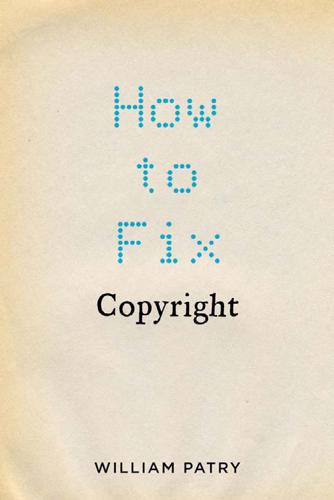
How to Fix Copyright
by
William Patry
Published 3 Jan 2012
The United States has such a requirement for both domestic and foreign works.10 While there are things individual countries can and should do on their own, a comprehensive approach to formalities requires a revision to treaties, including the Berne Convention. This page intentionally left blank TEN The Moral Panic over Fair Use The term “moral panic” comes from sociology. It was made popular in the early 1970s in describing wildly exaggerated reactions to changing mores.1 Examples of moral panics include the Salem Witch trials, marijuana during the “Reefer Madness” period of the 1930s,2 the comic book Congressional hearings in the 1950s,3 McCarthyism, and the events that gave rise to the coining of the term: the Mods and Rockers battles, in the UK during the midto late-1960s. I use moral panic here to refer to the trumped-up creation of an alien threat.
…
Sam Ricketson, WIPO Study on Limitations and Exceptions of Copyright Related Rights in the Digital Environment at page 4, Standing Committee on Copyright and Related Rights, 9th Session, Geneva, June 23 to 27, 2003, SCCR/9/7 (April 5, 2003). Chapter 11 1. Moral Panics and the Copyright Wars (2009, Oxford University Press). My title for this book was Metaphors, Moral Panics, and Folk Devils in the Copyright Wars. 2. See references in Moral Panics and the Copyright Wars at 44–45. 3. Colin Turbayne, The Myth of Metaphor 3 (1962, University of South Carolina Press). 4. These are different points: hard copy works can be scanned or made available for sale in hard copy form online. 5.
…
I do not exaggerate by using “alien”: in 2005, the then-Attorney General of Australia, Philip Ruddock, referred to fair use as alien to the Australian legal tradition,4 apparently unaware that the fair use factors were already contained in the Australian copyright act.5 The rhetorical device of turning fair use into a moral panic is made by those who oppose adapting copyright to the digital era. 212 HOW TO FIX COPYRIGHT Fair use thus serves as a classic moral panic: an effort by vested interests to preserve the status quo through creating a false enemy whom, we are told, must be vanquished for the alleged good of society as a whole. What is this evil fair use? I will discuss below the technical details of the doctrine, but at its heart, fair use is a way to ensure that the goal of furthering creativity is not impeded by an overly restrictive view of exclusive rights.

Cape Town After Apartheid: Crime and Governance in the Divided City
by
Tony Roshan Samara
Published 12 Jun 2011
When the city deliberated on the need for a now established municipal police force, street children and vagrants who “make people fearful” were cited as primary reasons by security experts for the need for such a force.54 The emerging politics of urban renewal in the CBD and the menace of street children seemed to once again rest on the specter of a black menace in the heart of downtown. The resulting moral panic marked a crucial point in the wider social conflict over urban resources and the use of urban spaces that continued to scar the postapartheid city. Sociologist Jeremey Seekings, in his work on media representations of black youth during the negotiations, explicitly refers to white anxiety during that period as constituting a moral panic and notes that South African historians have often used the concept to describe urban and rural white anxieties about black masses. The concept of a moral panic employed by Seekings and others is informed by the work of criminologist Stanley Cohen.
…
This process relied heavily on the image of the criminal street child, who, his “performance” in the public eye now complete, recedes into invisibility.71 In the following section we turn to this process and look more closely at how the governance of security developed alongside and through the moral panic around street children in the rarified urban space of the CCID. Neoliberal Governance and the Reproduction of the Fragmented City Behind the ideological and racial formations of moral panic lie the more mundane practices and policies that do the work of shaping urban space on a day-to-day basis. During and just after the moral panic years, seven different law enforcement bodies patrolled the CBD, and CCTV of Children in the Streets╇ ·â•‡ 81 the area was continuously monitored by armed rapid response units.
…
This new crop of media representations of street children is, therefore, neither new nor independent of much deeper currents in South African society. As I have demonstrated elsewhere, since 2002 the moral panic around street children has subsided, and the reclamation of the city center is complete, as is reflected in the change of coverage between 2004 and 2005.70 The lasting impact of the moral panic has, however, been institutionalized in the form of “quality of life” municipal bylaws that proscribe behavior associated with the urban poor. Through the physical demarcation of valuable space, with the creation of the CCID, and the deployment of private security to police the uses of that space, “order” and “security” have been established in the city’s heart.

Hate Inc.: Why Today’s Media Makes Us Despise One Another
by
Matt Taibbi
Published 7 Oct 2019
These descriptions played into belief systems of target audiences who were desperate to believe young people were simply lazy, drug-addled, spoiled monsters. In fact, the Mods and Rockers both were mostly undereducated and working class. In 1972, Cohen would publish a book, Folk Devils and Moral Panics, that described all of this. Moral panic has as a result become a permanent part of our lexicon. “Folk devils” were what Cohen called the targets of these instant manias. Not a reporter, Cohen nailed many of the techniques that make journalism work. Thanks to Christopher Nolan, pop audiences now know magicians rely upon a basic premise of a pledge, turn, and prestige, i.e. a promise to change something ordinary into the extraordinary.
…
The mystery of your suddenly aloof child’s brain, your child as tyrant who needs a hell of a spanking (think of the “corporal punishment” letters in Cohen’s study), and, of course, your child as potential rifle-toting mass murderer are other popular themes. Moral panics were once very likely to involve a “something is corrupting your otherwise angelic youth” theme. The “Dungeons and Dragons” terror of the early eighties was an example. Some of us are old enough to remember the absurd scare flick Mazes and Monsters, starring an early version of America’s most dependable moral-panic frontman, Tom Hanks. Often the panic came hand in hand with a ready legal solution. Tipper Gore’s “Parents Music Resource Center” freakout over heavy metal lyrics was an eighties re-hash of Mod-Rocker fear.
…
There were constant variations on “techno-panic” themes, suggesting new technologies would addict children to profanity, violence, peeping, sexual deviancy, and other terrors. Moral panics tended to have the most profound consequences for “folk devils” who were politically underrepresented. The War on Drugs has arguably been the most devastating ongoing panic of all, dating back to the unintentionally comic Reefer Madness. It would be impossible to calculate how many unnecessary years in jail have been handed out to dealers and users thanks to blunt moral-panic stunts like George H. W. Bush holding up a bag of crack supposedly bought outside the White House (the offender had actually been lured from across town).
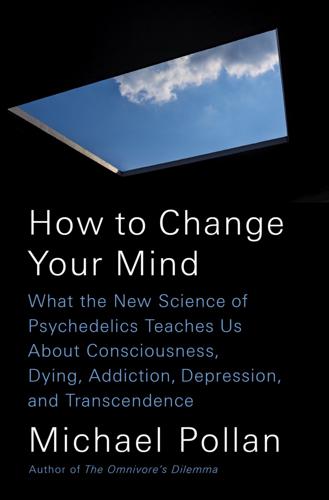
How to Change Your Mind: What the New Science of Psychedelics Teaches Us About Consciousness, Dying, Addiction, Depression, and Transcendence
by
Michael Pollan
Published 30 Apr 2018
Yet by the end of the 1960s, the social and political shock waves unleashed by these molecules seemed to dissipate. The dark side of psychedelics began to receive tremendous amounts of publicity—bad trips, psychotic breaks, flashbacks, suicides—and beginning in 1965 the exuberance surrounding these new drugs gave way to moral panic. As quickly as the culture and the scientific establishment had embraced psychedelics, they now turned sharply against them. By the end of the decade, psychedelic drugs—which had been legal in most places—were outlawed and forced underground. At least one of the twentieth century’s two bombs appeared to have been defused.
…
A couple of years later, the television personality Art Linkletter began campaigning against LSD, which he blamed for the fact his daughter had jumped out of an apartment window, killing herself. LSD supposedly had something to do with the Manson murders too. By the early 1970s, when I went to college, everything you heard about LSD seemed calculated to terrify. It worked on me: I’m less a child of the psychedelic 1960s than of the moral panic that psychedelics provoked. I also had my own personal reason for steering clear of psychedelics: a painfully anxious adolescence that left me (and at least one psychiatrist) doubting my grip on sanity. By the time I got to college, I was feeling sturdier, but the idea of rolling the mental dice with a psychedelic drug still seemed like a bad idea.
…
Griffiths’s landmark paper, “Psilocybin Can Occasion Mystical-Type Experiences Having Substantial and Sustained Personal Meaning and Spiritual Significance,” was the first rigorously designed, double-blind, placebo-controlled clinical study in more than four decades—if not ever—to examine the psychological effects of a psychedelic. It received a small torrent of press coverage, most of it so enthusiastic as to make you wonder if the moral panic around psychedelics that took hold in the late 1960s might finally have run its course. No doubt the positive tenor of the coverage owed much to the fact that, at Griffiths’s urging, the journal had invited several of the world’s most prominent drug researchers—some of them decorated soldiers in the drug war—to comment on the study, giving the journalists covering the study plenty of ideological cover.
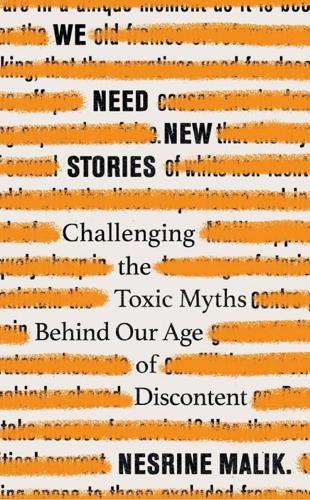
We Need New Stories: Challenging the Toxic Myths Behind Our Age of Discontent
by
Nesrine Malik
Published 4 Sep 2019
One conservative commentator, Roger Kimball, identified the problem as university administrators ‘falling over themselves in their rush to replace the “white Western” curriculum of traditional humanistic studies with a smorgasbord of courses designed to appeal to various ethnic and radical sensitivities’. Like all good and effective myths, the political correctness crisis is a moral panic that appears to be a response to a current and aggressive assault on a variety of shibboleths, but is in fact a rehashing of themes that are decades old. The themes all frame a challenge of male, white and heteronormative power as a subversion of the natural order of things. (Later, in Chapter 4, we examine how default identities absolve themselves from having identity-based agendas.)
…
They are attempts at negotiating the parameters of respect in a diverse society. The picture of a coherent creep is painted to stigmatise reform and to monetise fear. And so readers return to buy and to click in order to have their fear and prejudices watered and reaffirmed. It is the Fox News model of indoctrination, where PC is now such an established genre of moral panic that it has been deployed to cover everything from defending antisemitic tweets by entertainers (‘it makes no sense ever giving up your own taste in art to meet the expectations of your fellow partisans’ says a Fox News op-ed by Chris Stirewalt) to suggesting that gay marriage paves the way for bestiality.
…
Harris later came to an epiphany, believing that his dismissal of Charles Murray’s views that genetic IQ difference between races was merely a fact was born out of groupthink, and decided to rectify his error by hosting Murray on his podcast. ‘Unfortunately,’ Harris concluded, ‘the controversy over The Bell Curve did not result from legitimate, good-faith criticisms of its major claims. Rather, it was the product of a politically correct moral panic that totally engulfed Murray’s career and has yet to release him.’ Once Harris summoned political correctness, he immediately cast himself as a lone crusader pursuing a pioneering and taboo subject, ‘forbidden knowledge’ he calls it. But in fact, as Ezra Klein of the Vox news website observed: ‘this isn’t “forbidden knowledge.”

The Sirens' Call: How Attention Became the World's Most Endangered Resource
by
Chris Hayes
Published 28 Jan 2025
“I am convinced,” one former Facebook employee told The New York Times in 2018, that “the devil lives in our phones and is wreaking havoc on our children.”[17] I’m inclined to agree, but also find myself shrinking more than a little at how much the conversation around the evils of our phones sounds like a classic moral panic. Sociologist Stanley Cohen first coined the term “moral panic” in his 1972 book Folk Devils and Moral Panics, a study of the hysteria that surrounded different kinds of youth culture, particularly the Mods and Rockers in the UK in the 1960s. “Societies appear to be subject, every now and then, to periods of moral panic,” Cohen writes. Some group or cultural trend “emerges to become defined as a threat to societal values and interests; its nature is presented in a stylized and stereotypical fashion by the mass media; the moral barricades are manned by editors, bishops, politicians and other right-thinking people; socially accredited experts pronounce their diagnoses and solutions.”[18] We can also see this familiar pattern when the target is a new technology rather than a cultural trend or group: excitement and wonder that quickly turn to dread and panic.
…
Indeed, it often feels that for all the legitimate criticism of social media and the experience of ubiquitous screens and connectivity, a kind of familiar neurotic hysteria undergirds the dire warnings. An entire subgenre of parenting advice books and blocking software now exists to manage “screen time” and the mortal peril introduced by our devices into the brain development of children; the broader cultural conversation has taken on all the overdetermined ferocity of a moral panic. In 2009, the Daily Mail alerted its readers to “How using Facebook could raise your risk of cancer.”[11] The New York Post warned that screens are “digital heroin” that turn kids into “psychotic junkies.”[12] “Teens on social media go from dumb to dangerous,” CBS cautioned.[13] And The Atlantic was just one of many to ask the question: “Have smartphones destroyed a generation?”
…
But there’s also no question that the relationship we have to our phones is fundamentally different in kind than the relationship those streetcar commuters had to their newspapers. In his book on the attention economy, Stolen Focus, writer Johann Hari gets into a bit of this debate with Nir Eyal (author of Hooked: How to Build Habit-Forming Products). Eyal makes the case that the freak-outs about social media are today’s version of the mid-twentieth-century moral panic over comic books, which got so heated there were a series of high-profile Senate hearings into what comic books were doing to America’s youth. All the grave warnings about phones and social media are, he contends, “literally verbatim, from the 1950s about the comic-book debate,” when people “went to the Senate and told the senators that comic books are turning children into addicted, hijacked [zombies]—literally, it’s the same stuff….
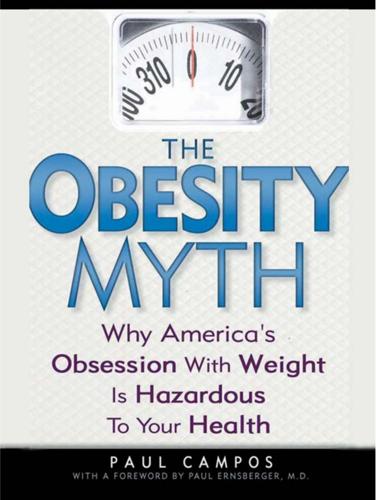
The Diet Myth: Why America's Obsessions With Weight Is Hazardous to Your Health
by
Paul Campos
Published 4 May 2005
Saguy has undertaken a long-term research project to study the social construction of “obesity” as a health and/or political issue in contemporary America. See, for example, Saguy and Riley, “Fat Attack: Scientific and Political Debates over Obesity” (forthcoming). “ ‘Moral panic’ is a term coined by Stanley Cohen in the 1960s . . .” See Stanley Cohen, Folk Devils and Moral Panics (2002). “American history is rich with examples of moral panics.” On the drug war, see Michael Massing, The Fix (2000). On sexual abuse in schools and day care centers, see Dorothy Rabinowitz, No Crueler Tyrannies: Accusation, False Witness, and Other Terrors of Our Times (2003).
…
We may drive environmentally insane SUVs that dump untold tons of hydrocarbons into the atmosphere; we may consume a vastly disproportionate share of the world’s diminishing natural resources; we may support a foreign policy that consists of throwing America’s military weight around without regard to objections from our allies— but at least we don’t eat that extra cookie when it’s offered to us. All of which is to say that the current panic over fat is in part a traditional search for societal scapegoats. Indeed, as UCLA sociologist Abigail Saguy suggested to me, our current hysteria about weight can be understood as a moral panic. “Moral panic” is a term coined by Stanley Cohen in the 1960s to describe a recurrent social pattern. First, a group or behavior is classified as dangerously deviant. The deviance is characterized as both a serious threat to societal welfare and as a symptom of deep social ills. The media whips up public concern on the subject by focusing rapidly increasing amounts of attention on it, often in an alarmist fashion that exaggerates the extent of—and the danger presented by—the behavior and those who engage in it.
…
Today epidemiological regression analyses have largely taken the place of the sorts of exhortations once represented by Jonathan Edwards’ eighteenthcentury sermon “Sinners in the Hands of an Angry God.” Nevertheless, as Part III will make clear, the motivating impulses behind such apparently dissimilar texts turn out to have a number of things in common. At bottom, the obesity myth is both a cause and a consequence of what sociologists call a “moral panic.” It is a particularly tenacious example of the same sort of impulse that fueled hysteria about demon rum, reefer madness, communists in the State Department, witches in Salem, and many other instances of our eternally recurring search for scapegoats, who can be blamed for the decadent state of American culture in general, and of the younger generation in particular.
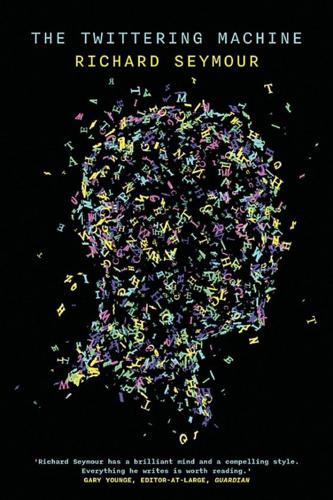
The Twittering Machine
by
Richard Seymour
Published 20 Aug 2019
If we’ve found ourselves addicted to social media, in spite or because of its frequent nastiness, as I have, then there is something in us that is waiting to be addicted. Something that social media potentiates. And if, with all these problems, we still inhabit the social media platforms – as over half the world’s population does – we must be getting something out of it. The dreary moral-panic literature excoriating ‘the shallows’ and the ‘post-truth’ society must be missing a vital truth about their subject. Those who enjoy the social media platforms tend to like the fact that they give them a shot at being heard. It weakens the monopoly on culture and meaning formerly enjoyed by media and entertainment companies.
…
Individually, their responsibility for the total situation was often homoeopathically slight, and thus this indulgence of their darker side, their more punitive, aggressive tendencies, was minor. Yet, incentivized and aggregated by the Twittering Machine, these petty acts of sadism became monstrous. As the trolling slogan has it, ‘None of us is as cruel as all of us.’ IX. The risk, in appealing to such outré examples, is that it can legitimize a form of moral panic about the internet, and therefore dignify state censorship. This would be the traditional answer to the Oresteian Furies: domesticate them with the ‘rule of law’.34 It is predicated on upholding a traditional hierarchy of writing, at the top of which is a written constitution or sacred text from which written authority flows.
…
The McCarthyite witch-hunts of mid-twentieth-century America showed that political paranoia could easily be disseminated through the workings of the liberal state.35 What is happening now, however, is that the digitalization of capitalism is disturbing these old written hierarchies, so that the spectacles of witch-hunting and moral panic, and the rituals of punishment and humiliation, are being devolved and decentralized. The spectacle, which the French Situationist Guy Debord defined as the mediation of social reality through an image, is no longer organized by large, centralized bureaucracies.36 Instead, it has been devolved to advertising, entertainment and, of course, the social industry.

Britain's Europe: A Thousand Years of Conflict and Cooperation
by
Brendan Simms
Published 27 Apr 2016
Most agreed that the English empire in France should be regained, not only to vindicate the king’s historic rights but also to deny the enemy a base from which to attack England.13 In order to do this, the mistakes of the Lancastrian dynasty would have to be rectified. Culturally, Englishmen would have to become less effeminate and more martial, perhaps the first instance of what was to become a long tradition of linking foreign-policy crises to domestic moral panic. Taxes would have to be paid on time – in other words, the nation as a whole should take responsibility for the reconquest of France – but in return the king would have to listen to the counsel of Parliament and seasoned advisors. Above all, the English would have to close ranks at home, not least through the act of confronting the enemy abroad.
…
Many were still smarting at the loss of the French empire one hundred years before – a wound inflamed by generations of Tudor chroniclers and which would be reopened at the end of the century by Shakespeare in his three historical plays about the reign of Henry VI – and history seemed to be repeating itself. Now, as Henry’s war effort on the continent stagnated, they succumbed to moral panic and social malaise. Englishmen, it was argued, had gone soft by neglecting their archery skills and spending too much money on fashion and gambling. Worse still, many were convinced that the overall population of England was steadily declining: the shrinking military muster rolls seemed to suggest this.
…
England had lost control of the Narrow Sea. In a coruscating speech to Parliament a year later, the Lord Keeper lamented that there had not been ‘a greater loss in honour, strength and treasure, than to lose that place’, which had ‘bred throughout Europe an honourable opinion and report of our English nation’.33 Once again, moral panic set in. ‘What tenderlings the great part of our young gentlemen are,’ one observer lamented, ‘preferring fine clothes to lusty horsemanship.’34 There were also furious allegations that Philip had not done enough to help the embattled garrison. To add insult to injury, Philip’s chief minister, Cardinal de Granvelle, remarked that ‘One would like to see more spirit, more resentment about Calais, and more memory of the ancient virtues of their fathers.’35 The port, which Mary famously said would be ‘lying in her heart’ after death, had been England’s last outpost on the continent, and vital to the defence of the south coast.

Life After Cars: Freeing Ourselves From the Tyranny of the Automobile
by
Sarah Goodyear
,
Doug Gordon
and
Aaron Naparstek
Published 21 Oct 2025
The Economist magazine dismantled Cassidy’s argument, suggesting he re-familiarize himself with the economic concept of negative externalities: As things stand, given that cyclists help alleviate some of these externalities (a cyclist takes up dramatically less road space than a car, doesn’t use on-street parking, does not emit ozone, and does not contribute to climate change) it seems quite sensible to allocate a larger share of New York’s roadways to lanes for cyclists. From an economic perspective. Moral Panic! In 2016, New York City proposed a law that would help people on bikes avoid conflicts with drivers by allowing them to treat the pedestrian signal as a green light. This practice, which uses something called a leading pedestrian interval (LPI) to give people who aren’t in cars a head start of a few seconds through intersections, is common in bike-friendly cities in Europe and has been in place in Washington, DC, since 2013.
…
In a car-centric system where so few people bike, lawbreaking cyclists stand out, making them easy to condemn. That same car-centric system makes lawbreaking drivers hard to see but easy to condone, or at least excuse. Michael Hobbes, a journalist and a podcaster, said that this is what makes bikelash similar to other moral panics, which he defines as “a majoritarian backlash to social progress that benefits minority groups.” Such panics typically involve demonizing a perceived “other” for their transgressions, most of which are exaggerated or even imaginary, and either ignore or even actively distract from much larger and very real societal problems, especially when solving those problems might require tweaking the status quo.
…
Even pedestrians, who also exist in a world where cars have always been part of the landscape, tend to be much more focused on cyclist behavior than the thing they really should be afraid of: getting hit by a driver. According to Hobbes, “You really have to zoom out to see…the problem is actually cars, but on a day-to-day, minute-to-minute level, it doesn’t seem that way.” Moral panics often use extreme examples to prove the potential destructive force of even the slightest change to the established order. But as Hobbes said, “The only evidence of this grave societal threat is…these weird random anecdotes that don’t actually hold up to any scrutiny.” Take Dershowitz’s claim that New York City cyclists appear to have an inherent disregard for the law.

Lurking: How a Person Became a User
by
Joanne McNeil
Published 25 Feb 2020
Teens from less-privileged backgrounds seemed likely to be drawn to MySpace while those headed towards elite universities appeared [to] head towards Facebook.” She also noticed a race and ethnic division between platforms—black and Latino teens tended to use Myspace, and white and Asian teens flocked to Facebook. Among the factors for this switch was the number of moral panic stories about child predators on Myspace. People who didn’t worry about their kids meeting older men in hotel rooms in the nineties—either because their kids weren’t old enough then, or they weren’t online—had new fears over Myspace riffraff. Facebook, associated with the university where every helicopter parent dreams of sending their kids, had none of that stigma.
…
Those with comfortable legacy media perches as staff writers and editors might have used the internet, but they did not identify as users—at least not in the way that someone posting a grievance online would be. The pain that was exhibited in hashtag campaigns like #SolidarityIsForWhiteWomen was “not perceived”—at least not yet. Collective grievance was conflated with mob behavior and moral panics online. The many grades and variations of power were brushed aside to condemn internet outrage as an oversize threat. As a classic example of this conflation, Jon Ronson, while promoting his 2015 book So You’ve Been Publicly Shamed, routinely stated that internet users are collectively “worse than the NSA.”
…
The danah boyd quote on Myspace and Facebook comes from “White Flight in Networked Publics? How Race and Class Shaped American Teen Engagement with MySpace and Facebook,” which appeared in Race After the Internet (ed. Lisa Nakamura and Peter A. Chow-White, Routledge, 2012, 207). The Facebook cofounder Dustin Moskovitz attributes the moral panic around Myspace to Facebook’s success. On Twitter, he wrote that “the ‘tech was good and now it’s bad’ narrative is misrepresenting the past. There have always been quite negative stories about tech. Facebook was successful in part due to rampant 2004 fears about child predators on Myspace. Tech is/was good AND bad” (twitter.com/moskov/status/942470488017850369, December 17, 2017).

Who Are We—And Should It Matter in the 21st Century?
by
Gary Younge
Published 27 Jun 2011
The report acknowledged that, while the United States would remain the single most powerful force in the world, its relative strength and potential leverage are waning. This downward trajectory was, in no small part, aggravated by failed wars against predominantly Muslim countries that followed terrorist attacks by Islamic fundamentalists and that also sparked something close to a moral panic among the Right at home. A national furor was sparked by plans to build an Islamic community center in Lower Manhattan. There were protests against the “9/11 mosque.” But this was not about either 9/11, which had taken place almost a decade earlier and several blocks away, or a mosque, given that no such thing was being built.
…
On the other hand, the ways in which we are unalike matter. For all that is common in the human experience, the differences are stark and, in some respects, getting starker, and it is these differences that are increasingly creating the framework for political activity, public anxiety and, at times, moral panic. In Britain the English Defence League, an extreme right-wing party with a history of violence, had a gay chapter whose members wore pink triangles. “This is the symbol gay people were made to wear under Hitler,” explained one. “Islam poses the same threat, and we are here to express our opposition to that.”
…
The trouble is that the pervasiveness of French racism means that even those non-white French people who choose to take it find themselves constantly knocked back. Even those who like Britain—and I would count myself among them—don’t necessarily really feel fully part of it. Latif always thought of himself as Pakistani. “I know what Islam is,” he says. “I have no idea what British is.” Latif stands at the epicenter of a moral panic in Europe. Thanks to acts of war abroad and terror at home, not to mention rioting and the rise of the extreme Right and religious fundamentalism, the European intelligentsia has been obsessing over Islam for at least a decade now. With Muslims constituting sizable minorities in many European cities from Marseilles to Malmö, their presence has sparked fear among those who perceive their presence as both a potential existential and essential threat to European democracy and culture.
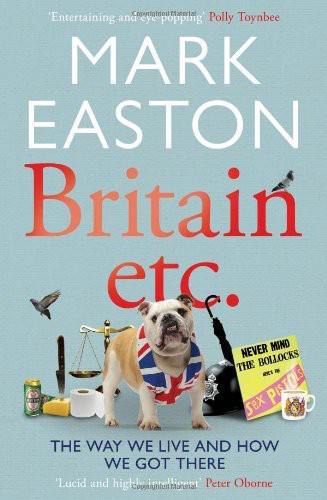
Britain Etc
by
Mark Easton
Published 1 Mar 2012
Systems hurriedly assembled as a response to headlines can prove to be blunt and inefficient tools, unnecessary or counterproductive. Many institutions are hampered by the bureaucratic legacy of some long-forgotten scandal that demanded something be done. Britain’s Vetting and Barring Scheme is a child of just such a moral panic: a textbook case of how media storm and political expediency combine to demand reform that later appears disproportionate or simply daft. The saga began in the summer of 2002. That August, like every August, news desks were searching around for stories to fill their papers and bulletins. With Parliament on holiday and little else happening, an appalling child abduction story from Cambridgeshire dominated the front pages.
…
It was politically inconceivable to deny there was a problem – that would leave his party exposed to the charge that they were callous and complacent. So a knife-crime ‘summit’ was held at Number Ten Downing Street. There was the promise of a ‘crackdown’ and ‘tough measures’. It was a classic sequence: moral panic, hurried political reaction, futile (probably counter-productive) response. On this occasion, part of the response was the unveiling of a new acronym – TKAP. The Tackling Knives Action Programme demanded that police resources in high-crime areas across England and Wales should be targeted at young men who carried blades.
…
With urbanisation and industrialisation, the job prospects for working-class boys had worsened: traditional craft apprenticeships disappeared while domestic service increasingly became the province of women. The end of the Napoleonic Wars saw demobilisation of thousands of soldiers, adding to the army of bored and troubled young men wandering city streets. Britain suffered its first moral panic about youth crime at around this time. In London in 1815, the Society for Investigating the Causes of the Alarming Increase of Juvenile Delinquency in the Metropolis was set up. The committee identified ‘the improper conduct of parents, the want of education, the want of suitable employment, the violation of the sabbath and habits of gambling in the public streets’ as explanations for the youth problem, ‘causes of crime’ that in revised form are still trotted out today.
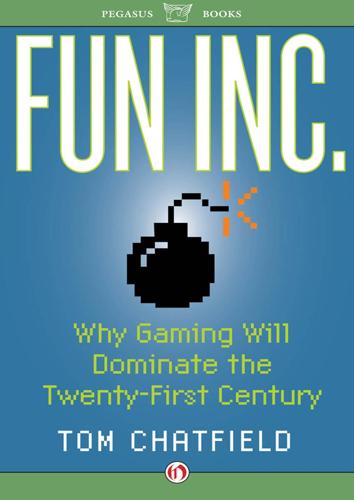
Fun Inc.
by
Tom Chatfield
Published 13 Dec 2011
Equally, those in government and the media had little sense of what a game was like to play, rather than to watch from a distance, and those within the industry felt, rightly enough, that they were operating within a field more or less sealed off from mainstream discourse, where the only meaningful thing to do was to keep their heads down and go on making their products. All of this has provided both the ideal breeding ground for moral panic and for the widening of the divide between those who play and those who don’t. It’s a division that is still largely generational. When a medium as new and as rapidly evolving as video games first arrives, there is little ability for different generations to share or learn lessons from one another.
…
Fanatic Life and Symbolic Death Among the Computer Bums’, Rolling Stone, 7 December 1972; <http://www.wheels.org/spacewar/stone/rolling_stone.html> Byron, Tanya, ‘Safe Children in a Digital World: The Report of the Byron Review’, June 2008; <http://www.dcsf.gov.uk/byron review/> Castronova, Edward, ‘Virtual Worlds: A First-Hand Account of Market and Society on the Cyberian Frontier’, The Gruter Institute Working Papers on Law, Economics, and Evolutionary Biology, 2001, Volume 2, Article 1; <http://www.bepress.com/giwp/default/vol2/issl/artl> Castronova, Edward and Fairfield, Joshua, ‘Dragon Kill Points: A Summary White Paper’, January 2007; <http://ssrn.com/abstract= 958945> Chatfield, Tom, ‘Rage Against the Machines’, Prospect magazine, June 2008; <http://www.prospectmagazine.co.uk/2008/06/ragea-gainstthemachines/> Chatfield, Tom, ‘Screen Test’, New Statesman, 30 April 2009; <http://www.newstatesman.com/ideas/2009/05/video-games-industry-art-film> Chatfield, Tom, ‘Videogames Now Outperform Hollywood Movies’, Observer, 27 September 2009; <http://www.guardian.co.uk/technology/gamesblog/2009/sep /27/videogames-hollywood> Ellis, Hilary; Heppell, Stephen; Kirriemuir, John; Krotoski, Aleks; McFarlane, Angela, ‘Unlimited Learning: Computer and Video Games in the Learning Landscape’, September 2006; <http://www.elspa.com/assets/files/u/unlimitedlearningtheroleof-computerandvideogamesint_344.pdf> Ferguson, Christopher John, ‘The Good, The Bad and the Ugly: A Meta-analytic Review of Positive and Negative Effects of Violent Video Games’, Psychiatric Quarterly, December 2007, Volume 78, Number 4; <http://www.springerlink.com/content /66217176984x7477/fulltext.pdf> Ferguson, Christopher John, ‘The School Shooting/Violent Video Game Link: Causal Link or Moral Panic?’, Journal of Investigative Psychology and Offender Profiling, December 2008, Volume 5, Issue 1-2: <http://www3.interscience.wiley.com/cgibin/fulltext /121556773 /PDFSTART> Gentile, Douglas A, ‘Pathological Video Game Use among Youth 8 to 18: A National Study’, Psychological Science, 22 September 2008;<http://www.drdouglas.org/drdpdfs/Gentile_Pathological_VG_Use_in_press.pdf> Goldsmith, Jeffrey, ‘This Is Your Brain on Tetris’, Wired, May 1994; <http://www.wired.com/wired/archive/2.05/tetris.html> Jo Kim, Amy, ‘Putting the Fun in Functional: Applying Game Mechanics to Functional Software’, Google Tech Talks, January 2009; <http://www.youtube.com/watch?
…
(world’s first true computer game) 16–18, 37 speakers 51 Spider-Man 3 (film) 29 Spielberg, Steven 14, 137–8 sports 2, 91 Star Trek series 113 Star Wars (film series) 7, 17, 46 Star Wars Force Trainer 159 Star Wars Galaxies 7, 139–40 Starcraft 81 stem cell research 59 Sundance Film Festival (2008) 143, 144 surface texturing 116 team games 100 television 58, 85, 114, 227 Baer and 19 console-based service 218–19 family entertainment 20, 59 and interaction 79, 136 user expectations 136 and virtual reality 160 and younger children 64 ‘tetriminoes’ 40 Tetris 40–42, 50, 122 text adventures x thatgamecompany 120 Thompson, Mark 226–7 Tolkien, J R R 45 Toy Story (film) 117 training 153, 157 emergency medicine games 197–9 military 188, 189, 190, 193 see also education; learning transnational relations 107–8 TripAdvisor 211 Triumph Studios 119 Trubshaw, Roy 45 Tunnel 228 show 133–4 Turbine Hall, Tate Modern, London 132 Twitter 89, 208, 212 Ultima Online 7, 100, 148 universities 225 University of Southern California 121, 186 Up (film) 117 US Center for Terrorism and Intelligence Studies (CETIS) 176 US Congress 182 US Department of Education 68 US Marine Combat Development Command 188 US Marines: First Recon unit 192 US military 187–8, 191, 194, 195 US Secret Service 68 value 151–2, 179–80 video arcades 87, 88 video game designer, as a career 37–8 video games addiction to 71–8 and art 117–34 big-budget 214, 222 born in a technology institute 15–18 a business devoted to miracles 14–15 and children 58, 62, 63–5 compared with other games 5–6 complexity 9, 11, 39, 42, 50, 72, 73, 130, 171, 214 consumers 61–2 creation of 114–17 education 199–208 equality 103 and the family 89, 91 feedback 9 and films 137 first icons 20 games-based vs. real-life interactions 91–3 the hero’s journey 46–7 and human behaviour 165–79 leadership in 98, 99, 101 as learning engines 6–7 as mainstream media activity 89 market for 22–3 military games 187–97 miniature games 126–9 mix of freedom and constraint in 102–3 moral panic 59 and music 135–6 nostalgia industry 52 perceived as played by adolescent males 87–8 players/non-players 59 power of 57–8, 223 progress by gaining experience 6 questions raised by 59–60 raising awareness 181–7 rapidly evolving 59 reviews 75 rules 6, 11 safety 58 as a social outlet 78–81 start of their commercial life 20 suitability for the digital age 28 teenage players (US) 90 time spent playing 29 two-player 88 and violence 60–61 and virtual theft 60–61 ‘visceral’ thrills 9–10 Villiers, Justin 112–13, 114 violence in games a minority interest 37, 82–3 regulation of 62, 224 and violence in life 65–71, 223 virtual currency 145–9 virtual economies 167, 169 virtual environments 142, 154, 172, 175 virtual epidemic 174–6 ‘virtual life’ simulations 83 virtual reality 14, 138 goggles 141 and the Wii 160 virtual screens 14 virtual voting system 225 virtual worlds 33, 45–7, 59, 95, 103, 141, 146, 154, 155, 160, 166, 168, 170–73, 210, 211, 223, 225, 226, 233 war games 188 watches 28 Watts, Peter 133 Wells, H G 45 Wii Play 83 WILL Interactive Inc. 196 wireless control 14 women players 61 word processing 155, 157 work virtual work 139–45 work/play separation 2–3, 5, 145 World of Warcraft (WoW) xii, 30, 93–102, 105, 147, 149, 174, 175, 176, 217 Wortley, David 153–4, 156, 157, 160, 161 Wright, Evan: Generation Kill 191–2 writing, origin of 57, 111, 228 Xbox 360 games console 14, 215 XEODesign 49 Yahoo!
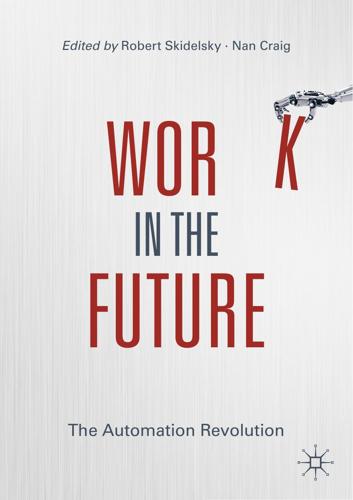
Work in the Future The Automation Revolution-Palgrave MacMillan (2019)
by
Robert Skidelsky Nan Craig
Published 15 Mar 2020
Suddenly it turns out that in the face of twenty-first century problems, at least, it’s completely inefficient. The second thing that nobody really remarked upon is that this—that the crisis of the rise of robots and the fear of automation has happened before. It happened in the 1930s, but then, right at the end of the 1960s there was another enormous moral panic. I know one person (Win McCormack) who was taking part in think tanks at the time, and he told me that all the Ivy League schools in America were organizing, “what are we going to do when all the jobs are gone, and the working class is thrown out of work.” The Player Piano scenario felt quite imminent at that time.
…
It’s a bit ironic that he used the term “accelerative thrust” though because in fact that particular indicator hit its high water mark just around the time he was writing the book, then abruptly stopped: the fastest speed a person has ever achieved was achieved in 1969, with Apollo 10, and we have never gone faster since. Most of his trends started slowing down at just that moment. Nonetheless, there was a general moral panic at the time, and a lot of it took the form of a very conservative fear of the social consequences of too much wealth, leisure, and rapid technological advance. (It’s not insignificant that Toffler himself became a darling of the neocons.) Much of it was explicitly anti-feminist: “What is going to happen to the patriarchal family and when we are all test tube babies?”
…
One policy result, which can be observed around that time, was a vast shift of research and development away from the “space age” and futuristic technologies popular at the time and towards medical, information, and military technologies—that is, largely to things that were useful for social control. One could make the argument they also started working to reign in the welfare state around that time: anyway, that’s what eventually started happening. Somehow we are at that moment of moral panic again, but this time, with somewhat different ground rules. As I mentioned, the idea that machines are going to throw us all out of work and that this will be a disaster goes back well before the 1960s or even before Vonnegut; it harkens back at least to the Depression; even arguably to the Victorian age.

Stories Are Weapons: Psychological Warfare and the American Mind
by
Annalee Newitz
Published 3 Jun 2024
They were nineteenth-century brainwashing machines, institutions that forced kids to accept the ideology and morals of a nation that was at war with their own. It’s no wonder that Americans so quickly embraced the myth of Chinese brainwashing during the Korean War. The United States had already practiced it against adversaries a century before. Ghost Dance moral panic Battered by armies and educators, nations in the West responded by embracing a revolutionary movement that honored Indigenous cultures of the past, and looked forward to a future after the white settlers were gone. It was called the Ghost Dance.31 In the late 1880s, around the time when the Lake Mohonk gang was advocating for a dramatic expansion of the residential school system, a Paiute man named Wovoka had a vision.
…
Dancers celebrated the Indigenous civilization that had existed for centuries before white settlers arrived, participating in a tradition of social-movement building that went back at least as far as the Mississippian urban complexes of the 900s. Cahokia, a thousand-year-old city at the fork of the Missouri and Mississippi Rivers in southern Illinois, was founded in the midst of a similar kind of movement that took the plains by storm. White settlers and the US military responded to the Ghost Dance with what can only be called a moral panic. Newspaper reports from 1890 referred to the dance as something weird and terrifying, with headlines like “Heap a Big Scare,” “Ghost Dance Mania,” and “That Messiah Craze.”37 It was mistakenly called a war dance, a prelude to aggression. Government anthropologist James Mooney and General Nelson Miles, a prominent figure in the Indian Wars, pushed back on these stories, explaining that the Ghost Dance was peaceful.38 But rumors began to spread that the dance was a sign of imminent attack on nearby white settlements.
…
Sometimes when these wars erupt, their victims wink into media visibility for a moment, making it appear that both sides in the conflict are equally powerful. But that is rarely true, as high school journalism teacher Rachel Stonecipher discovered. In the fall of 2021, Stonecipher’s fight with her suburban Texas school district became one of the most well-known examples of the anti-LGBT moral panic gripping the nation. When she lost her job for questioning the district’s policies on LGBT student groups, it was shocking to the hundreds of parents and students who came out to protest. For anyone familiar with twentieth-century psyops, though, the pattern was all too recognizable. Psyops become part of culture wars when a specific group of citizens is framed as a kind of foreign adversary.

After Europe
by
Ivan Krastev
Published 7 May 2017
In this sense, a major impact of the refugee crisis on European politics is the moral panic that it has provoked, a sense that the situation has spiraled out of control. The myriad acts of openness toward refugees fleeing war and persecution that we saw in 2015 in places like Germany or Austria are today overshadowed by their inverse: a raging anxiety that these same foreigners, warmly welcomed a year ago, will compromise Europe’s welfare model and historic culture and that they will destroy our liberal societies. Fear of Islamic terrorism and a general anxiety over the unfamiliar are at the core of Europe’s moral panic. In January 2017, the polling firm YouGov found that 81 percent of French, 68 percent of Britons, and 60 percent of Germans expected a major terrorist attack to take place in their country over the next year.25 The prospect of a future in which the European Union’s borders are constantly stormed by refugees or migrants erodes the trust Europeans have placed in their political system.
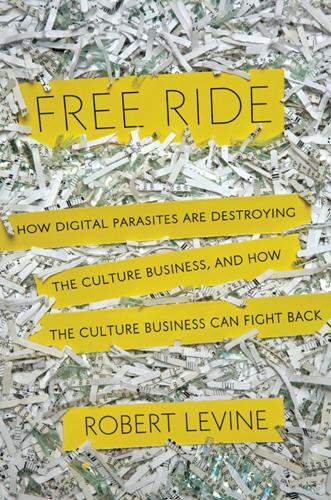
Free Ride
by
Robert Levine
Published 25 Oct 2011
Schmidt is one of [the foundation’s] many individual donors when speaking or writing.”79 But while there are many donors, Schmidt is the only chairman of the foundation’s board. Another writer with some influence on the debate over copyright is William Patry, a prolific scholar who now works for Google as a senior copyright lawyer. In Moral Panics and the Copyright Wars, Patry argues that the media business has deceptively framed copyright as a moral issue by using words like “piracy” and “theft.” (That may be true, but the use of the word “piracy” in this context predates the Statute of Anne, and “file sharing” isn’t exactly neutral language either.)
…
I hired a local reporter to take notes on this event and checked Losey’s and Doctorow’s quotations against a video of the speech. 77. Ibid. 78. Tim Wu, “YouTube as Video Store,” Slate, January 29, 2010. Wu, “The Apple Two,” Slate, April 6, 2010. 79. Wu responded to questions via e-mail. 80. Patry, Moral Panics and the Copyright Wars, p. 15. 81. Ibid., p. 17. I took the sales numbers from Take-Two Interactive’s 2010 second-quarter results. If Patry’s mistake sounds reasonable, think for a moment about that number: ninety-five million. There aren’t even that many video game consoles that can play Grand Theft Auto IV. 82.
…
Television Disrupted: The Transition from Network to Networked TV. 2nd ed. White Plains, N.Y.: York House Press, 2008. Passman, Donald S. All You Need to Know About the Music Business. 7th ed. New York: Free Press, 2009. The ultimate reference book by one of today’s smartest music lawyers. Patry, William. Moral Panics and the Copyright Wars. New York: Oxford University Press, 2009. Poundstone, William. Priceless: The Myth of Fair Value (and How to Take Advantage of It). New York: Hill and Wang, 2010. A fascinating look at why things really cost what they do. Reback, Gary L. Free the Market! Why Only Government Can Keep the Marketplace Competitive.

The Idealist: Aaron Swartz and the Rise of Free Culture on the Internet
by
Justin Peters
Published 11 Feb 2013
“Every time a Napster enthusiast downloads a song, it takes money from the pockets of all these members of the creative community,” Ulrich said, remarking that the “touted new paradigm that the Internet gurus tell us we must adopt sounds to me like good old-fashioned trafficking in stolen goods.”59 Ulrich’s position was clear: file sharing victimized songwriters, musicians, and record companies and threatened the survival of the entire music industry. In Moral Panics and the Copyright Wars, the copyright scholar William Patry astutely noted that the mainstream culture industries operate on a mildly coercive “push marketing” model in which companies use advertising and promotions to create consumer demand for the products they want to sell, and the formats in which they want to sell them.
…
8 Webster to William Leete Stone, December 21, 1837, in Webster, Letters, 511. 9 Ford, Notes, 1:16–31. 10 Kendall, Forgotten Founding Father, 50. 11 Ford, Notes, 1:38. 12 He eventually studied law on his own and in 1781 was admitted to the Connecticut bar. 13 Noah Webster, “Introduction to ‘Blue-Back Speller,’ in Autobiographies of Noah Webster, 75. 14 Webster to Joel Barlow, November 12, 1807, in Ford, Notes, 2:31. 15 Webster to John Canfield, January 6, 1783, in Ford, Notes, 1:58. 16 Micklethwait, Noah Webster and the American Dictionary, 4. 17 Scudder, Noah Webster, 152. 18 Tim Cassedy, “ ‘A Dictionary Which We Do Not Want’: Defining America Against Noah Webster, 1783–1810,” William and Mary Quarterly 71, no. 2 (April 2014): 229. 19 Noah Webster, “On the Education of Youth in America,” in Collection of Essays, 24. 20 Charvat, Profession of Authorship, 18–34. 21 Charvat, Literary Publishing, 42. 22 Wolcott to Noah Webster, September 19, 1807, in Ford, Notes, 2:27. 23 James N. Green, “The Rise of Book Publishing,” in Gross and Kelley, Extensive Republic, 78. 24 Letter from Joel Barlow to the Continental Congress, January 10, 1783, in Primary Sources on Copyright (1450–1900), eds. L. Bently and M. Kretschmer, https://www.copyrighthistory.org. 25 Patry, Moral Panics, 192. 26 Williams, “Significance of the Printed Word,” 43. 27 Noah Webster, “Origin of the Copy-Right Laws in the United States,” in Webster, Collection of Papers, 173. 28 Ibid., 174. 29 It is unclear how much credit, if any, Webster deserves for the Connecticut law; as David Micklethwait has demonstrated, Connecticut was already considering a statewide copyright law by the time the state legislature received Webster’s appeal. 30 Noah Webster, “Memoir,” in Autobiographies of Noah Webster, 143. 31 Noah Webster, “Diary,” in Autobiographies of Noah Webster, 222. 32 Smith, Colonial Days, 284. 33 Ford, Notes, 1:103. 34 Webster, “Diary,” in Autobiographies of Noah Webster, 219. 35 When George Washington married Martha Custis in 1759, Custis already had two children from a previous marriage.
…
Scholarly Journals at the Crossroads: A Subversive Proposal for Electronic Publishing. Washington, DC: Office of Scientific & Academic Publishing, Association of Research Libraries, 1995. Overhage, Carl F. J., and R. Joyce Harman, eds. INTREX: Report of a Planning Conference on Information Transfer Experiments. Cambridge, MA: MIT Press, 1965. Patry, William. Moral Panics and the Copyright Wars. New York: Oxford University Press, 2009. Peek, Robin P., and Gregory Newby, eds. Scholarly Publishing. Cambridge, MA: MIT Press, 1996. Putnam, George Haven, ed. The Question of Copyright. New York: G. P. Putnam’s Sons, 1891. ———. George Palmer Putnam: A Memoir. New York: G.
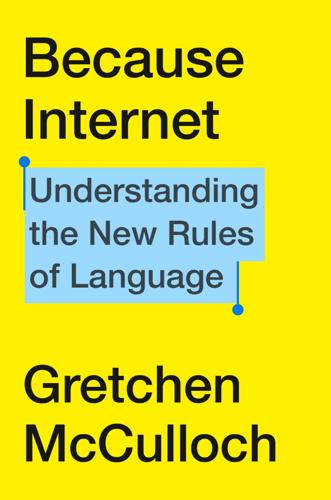
Because Internet: Understanding the New Rules of Language
by
Gretchen McCulloch
Published 22 Jul 2019
Even as this narrative was being proposed, researchers were starting to question it: one study of college students in the early 2000s found that there was no significant difference in their ability to do things like edit a spreadsheet or create a digital photo, between the twenty-year-old students and the mature students over forty. A critical review of the evidence for and against digital natives describes it as a myth, “the academic equivalent of a ‘moral panic.’” That is, when a group or activity is perceived to be a threat to society, but sensationalist media is far more prominent than any actual evidence for it. Not to mention that not everyone fits neatly into a parent/child dichotomy, or that a decade or two of daily practice can make even the most floundering of digital arrivals reasonably adept.
…
In Nikolas Coupland and Tore Kristiansen, eds., Standard Languages and Language Standards in a Changing Europe. Novus Forlag. pp. 145–160. Christa Dürscheid, Franc Wagner, and Sarah Brommer. 2010. Wie Jugendliche schreiben: Schreibkompetenz und neue Medien. Walter de Gruyter. only 2.4 percent: Crispin Thurlow. 2006. “From Statistical Panic to Moral Panic: The Metadiscursive Construction and Popular Exaggeration of New Media Language in the Print Media.” Journal of Computer-Mediated Communication 11(3). pp. 667–701. What the teens were doing: Sali Tagliamonte and Derek Denis. 2008. “Linguistic Ruin? LOL! Instant Messaging and Teen Language.” American Speech 83(1). pp. 3–34.
…
Even as this narrative was being proposed: Ruth Xiaoqing Guo, Teresa Dobson, and Stephen Petrina. 2008. “Digital Natives, Digital Immigrants: An Analysis of Age and ICT Competency in Teacher Education.” Journal of Educational Computing Research 38(3). pp. 235–254. “the academic equivalent of a ‘moral panic’”: Sue Bennett, Karl Maton, and Lisa Kervin. 2008. “The ‘Digital Natives’ Debate: A Critical Review of the Evidence.” British Journal of Educational Technology 39(5). pp. 775–786. An article reminiscing: Melissa McEwen. November 13, 2017. “The Teenage Girl’s Internet of the Early 2000s.” Medium. medium.com/@melissamcewen/the-teenage-girls-internet-of-the-early-2000s-ffa05702a9aa.
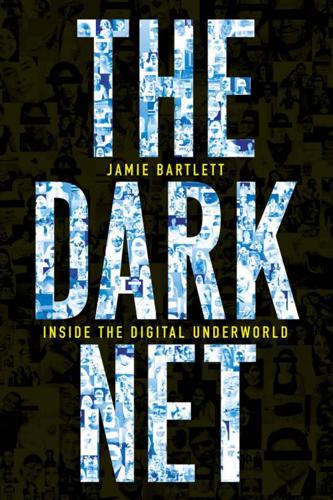
The Dark Net
by
Jamie Bartlett
Published 20 Aug 2014
We dispense with that at our peril. Get rid of trolling and we might lose something else, too. The line between criminality, threats, offensiveness and satire is another very fine one. Trolls like Old Holborn do occasionally cast a satirical eye on society’s self-importance, expose the absurdity of modern life, moral panics or our histrionic twenty-four-hour news culture. One branch of trolls, called ‘RIP memorial trolls’, target people who post messages to online memorial pages of the recently deceased. According to Whitney Phillips, an academic who wrote her Ph.D. on trolls, they usually target what they call ‘grief tourists’: users who have no real-life connection to the victim and who could not possibly be in mourning.
…
The first erotic stories Usenet group, rec.arts.erotica, was created in May 1991, which was quickly followed by a number of spin-offs and subgroups catering for every predilection, including one titled alt.startrek.creative.erotica.moderated. Although statistics about how much pornography is on the net are usually marked by exaggeration and moral panic, there has certainly always been a lot of it about. One pornographic Bulletin Board System earnt 3.2 million dollars in 1993 by selling hard-core images and videos to thousands of subscribers. By 1997 there was somewhere between 28,000 and 72,000 porn sites online. Porn is now estimated to comprise between 4 and 30 per cent of all websites.
…
USE OF WORDS SUCH AS: HACKING, PHREAKING (OR ANY WORDS WITH ‘PH’ REPLACING ‘F’) LACK OF INTEREST IN SELF AND APPEARANCE OR INDICATIONS OF LACK OF SLEEP (WHICH MIGHT INDICATE LATE NIGHT MODEM-PLAY) COMPUTER AND MODEM RUNNING LATE AT NIGHT (EVEN WHILE UNATTENDED) STORING OF COMPUTER FILES ENDING IN: PCX, GIF, TIF, DL, GL (THESE ARE VIDEO OR GRAPHIC IMAGE FILES AND PARENTS SHOULD KNOW WHAT THEY ILLUSTRATE) NAMES ON COMMUNICATIONS PROGRAMS WHICH SEEM SATANIC OR PORNOGRAPHIC, OBSESSION WITH FANTASY ADVENTURE GAMES (DUNGEONS AND DRAGONS, TRADE WARS, SEXCAPADE, ETC.). This misunderstanding and moral panic typically accompanies most new technologies. p.8 ‘Whether actual or perceived, anonymity . . .’ ‘The Online Disinhibition Effect’, CyberPsychology and Behaviour 7 (3). This article was published in 2004, but Suler had set out his thesis before then, in 2001: http://online.liebertpub.com/doi/abs/10.1089/1094931041291295 & http://users.rider.edu/~suler/vita.html.
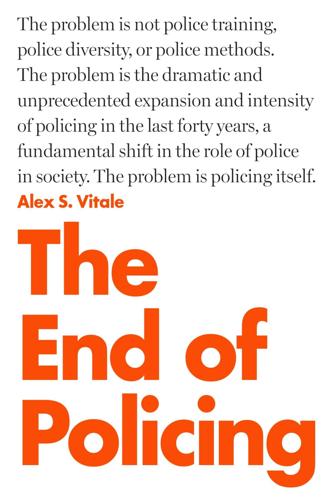
The End of Policing
by
Alex S. Vitale
Published 9 Oct 2017
Do these approaches encourage sexual commerce by giving it the patina of legitimacy? Perhaps. But if the central social concerns of coercion and disease are being managed more effectively than under prohibition, isn’t that a success? We should embrace these approaches as a starting point for policies that directly address social harms rather than moral panics. While commercial sex work will always have harm attached to it, so do legal sweatshops. In fact, the subordinate position of women in our economy and culture is the real harm left unaddressed by prohibition. Despite the lofty goals of abolitionists, as long as they are denied equal economic and political rights and equal pay for equal work, women will be forced into marginal forms of employment.
…
States passed antimarijuana laws, giving police a legal pretext to search and question migrants and create a climate of fear. In the North, marijuana was criminalized after becoming more popular among African Americans in the big cities. Its close association with jazz and black culture led to a moral panic. These twin forces came together nationally with federal prohibition in 1937. Intensive drug prohibitionism was tied to conservative nativist politics. Johann Hari describes the exploits of the nation’s first drug czar, Harry Anslinger, who from 1930 to 1962 waged a never-ending battle focused primarily on immigrants and people of color.6 He was personally involved in arresting and harassing jazz legend Billie Holiday and may have directly contributed to her death in police custody in 1959.
…
As part of an effort to maintain funding, they spend a lot of their time speaking to community groups about the threat gangs pose and the need for more suppression efforts. This tends to be one-way communication; these units rarely take input from communities about where and how to carry out their activities. Instead, it is usually part of a self-serving effort to win more resources and keep up the moral panic about youth violence and gangs, as well as to channel all related concerns into continued aggressive policing. There are a lot of misunderstandings about the nature of gangs, which have come to play a role in the way that police handle them. Strategies that seek to “eradicate” gangs often fail to consider exactly who the targets for such action are, or the effect on those targeted and on the community.
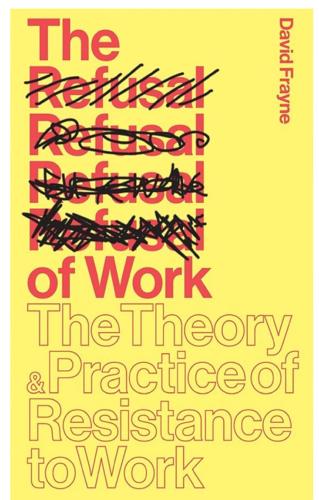
The Refusal of Work: The Theory and Practice of Resistance to Work
by
David Frayne
Published 15 Nov 2015
By his own admission, his call for the expansion of leisure ‘shocks the well-to-do’, who have historically doubted the ability of the poor to use their leisure time wisely (Russell, 2004c: 8). It was commonly thought that the poor were unworthy of leisure, and that more free-time would lead to widespread boredom and vice. (At Russell’s time of writing, there was a significant moral panic around growing cinema attendance, which bourgeois society believed was corrupting the young.) Maybe more concerning, from the perspective of those in society’s most powerful positions, was the prospect that increased leisure time might lubricate the political consciousness of the poor, or leave people with more time for collective action.
…
If many have spoken out against work, Chapter 4 showed how dissenting voices have been suppressed and humiliated by the media’s tendency to discuss acts of resistance in a language of deviance and individual pathology. If critics of the work dogma want to join this linguistic battle, they had better turn up armed. For example, how about responding to the moral panic around today’s so-called ‘culture of entitlement’ by developing a critique of today’s more prevalent ‘culture of gratitude’? It is the culture of gratitude that thrives when, buckling under the pressure to survive, people begin to hurl themselves into any form of work that promises to boost their career profile, whether the work in question is paid or unpaid, suitable or unsuitable.
…
Index * * * A achievement, social, measured through work, 15 Adam, a former computer programmer, 120, 127–8, 138–41, 170, 180 Adorno, Theodor, 69–72, 75, 76–7, 162; ‘Free Time’, 69 advertising, 85–8, 171; spending of industry, 88 affluence, ideals of, 181 agoraphobia, 152, 153 Alan, a former office administrator, 157–8 alienating tendencies, use of term, 62 alienation, 9, 48, 50, 61, 62, 63, 90, 93, 126, 146, 178, 200, 230; in Marx, 46, 47; normalisation of, 52; use of term, 51 alternatives: experimenting in, 223; utopian, 145 altruism, 113 Amazon, working conditions at, 51 anger management techniques, 53 Anne, a photographer, 127, 170; co-founder of Idlers’ Alliance, 207–8 anti-consumerist ethics, 163 anxiety, 13, 148, 151, 152, 164, 200; about education, 79; in face of consumer choices, 168 apricots, cultivation of, 79 Arendt, Hannah, 24, 39 Aristotle, concept of good life, 4 art of living, 4 Ashton, John, 229 ATOS company, 104; scandal regarding, 152 autonomous activities, 20 autonomous self-development, 36; right of, 35 autonomously organised production, 112 autonomy, 10, 29, 64, 91, 113, 141, 142, 150, 198, 205, 210–37; in work, limits to, 61–6; moral, 155; of workers, 69 B bakeries, production process in, 51–2 Basic Income, 225; as personal entitlement, 226; universal and unconditional, 225 Bauman, Zygmunt, 73, 159–60, 169–70 Beck, Ulrich, 73 being, mode of being, 79–80, 166 ‘being yourself’’ in work, 59–60 Bell, Daniel, 26 Ben, husband of Cheryl, 178, 179 benefit fraud, claimed costs of, 101 benefits, conditionalities of, 104 Berardi, Franco, 54–5, 81 Berger, Peter, 125, 128, 130, 144; with Thomas Luckmann, The Social Construction of Reality, 125 Beveridge, William, 28 Billig, Michael, 231 binary dichotomies in society, 99 biomedical labels: adoption of, 151–2; resistance to, 152, 153 black working class, rebellion of, 115 Black, Bob, The Abolition of Work, 206 Black, Carol, 108 Blauner, Robert, 48, 62 body, starts shouting, 149 see also broken body books: from libraries, 206; on subject of work, 206–7; reading of, 175, 195 boredom at work, 12, 140 Bowring, Finn, 116, 171 Braverman, Harry, 48 breakpoints, 125, 128, 129, 141, 142, 154, 216; causes of, 129; relating to personal health issues, 148 Brennan, Teresa, 148 Bridge, Angela, 189–90 broken body, 147–54 Brown, Philip, 42 Bruce, a former care home worker, 137, 146, 148–51, 200, 202, 203, 204 ‘bullshit jobs’, 40 bureaucracy at work, 132; intensification of, 133 Burroughs, William, 206 C ‘Californian ideology’, 59; boundaries of, 60 call centres, labour practices in, 50–1 calmer life, living of, 151 Calvin, John, 25 Cameron, David, 99 Cannon, David, 154–5, 233 capitalism, 24, 37, 44, 48, 64, 65–6, 147; as production of needs, 85; development of, 25–6, 29, 39–40; fixated on work and consumption, 3, 4; industrial, 30; insecurity in, 73; potential reduction of working time in, 32–3; resistance to, 188; spirit of, 25–6 career, concept of, 127 Casey, Catherine, 16–17, 56–7, 58, 212 casual labour, 28 Cederström, Carl, and Peter Fleming, Dead Man Working, 55 Chaplin, Charlie, in Modern Times, 49 character assessment of workers, 56 cheese, buying of, 169 Cheryl, an interviewee, 120, 165–7, 176–7, 178 child-friendly policies, 116 childcare, 155, 206, 211 children, a factor in decision-making, 161 chirpiness, required in job, 136 Christmas, celebration of, 145, 186 cinema attendance, moral panic regarding, 96 Citizens Advice Bureau, 153 city spaces, privatisation and commercialisation of, 222 claimants, viewed as wasters, 99 claiming benefits, viewed as game, 135 Clive, an interviewee 201 clubbing together to get something done, 22 cognitive labour, 54–5 Cohen, Stanley, 126, 127, 129, 210 Cole, Matthew, 106, 205 collaborative forms of work, 64 Collinson, David, 213 colonisation of life: by economic demands, 9, 93; by work-related demands, 67–94 commodification, 92 commodity-intensive lifestyle, questioning of, 164 commons, abolition of, 186 commuting, costs of, 178 company people, creation of, 56 computerisation, of bakery, 51–2 computers, 50, 61, 72, 139–40, 172, 175, 177; gaming, 177 conditions of work, 226, 233 ‘constantly on call’, 72 consumer motivation, theories of, 88–91 consumer satisfaction, 85 consumer society, 26–7 consumerism, 40, 83–4, 91, 162–3, 169, 214, 228, 231; costs of, 160; depends on exploitation, 167; ethically conscious, 87; motivation for, 85, 178 consumers: needs of, exaggerated, 92; persuasion of, 86 consuming less, 172, 187 consumption: de-spiritualisation of, 176; gospel of, 82–94; growth of, 94; ostentatious, 186; replaces self-production, 92; therapeutic, 180 convenience, need for, 178–9 convenience commodities, consumption of, 91 conversation, love of, 137–8, 141 conviviality, as valued good, 116 cooking of meals, 145; pleasures of, 176–7, 187 coping strategies at work, 11 Coupland, Douglas, Generation X, 114 Cremin, Colin, 58, 76 customer complaints procedures, 54 CVs, preparation of, 75 cynicism, 12, 212–13 D Dalla Costa, Mariarosa, 115 dead end, experience of, 141 death, witnessing of, 130 debt, of students, 81 decentralisation of work, 32 deindustrialisation, 107 ‘delusions’ of workers regarding work, 21, 22 democracy, 215; engagement in, 222; in the workplace, 13 denaturalisation of work, 17, 216 Department of Trade and Industry (UK), work–life balance study, 218 dependency, alleged culture of, 100 depression, 148, 152 de-reification, 128, 144 desires, consumerist, pursuit of, 170 deskilling of work, 42, 48 diet, simplicity of, 136 dignity, 137, 193 disabilities see people with disabilities disability allowances, 152, 153 discipline at work, 28 discreditable, 200–1 dis-ease, feeling of, 130 disengagement from work, 47–52 dis-identification, 213 dissatisfaction, organised creation of, 85 distribution of income, 14 Dittmar, Helga, 88 division of labour, 28, 29, 48, 133, 146; gendered, 229–30 ‘doing nothing of value’, 141, 190, 233 domestic work, 19 see also outsourcing of domestic work downshifter, use of term, 120 downshifter study in USA, 165 Dubi, Steve, 46 Duncan Smith, Ian, 102 E eating together: pleasure of, 143, 144, 147; whittled away, 176 economic growth, 34, 37 education, 78; aims of, 80; anxiety context of, 79; as certification for work, 69; as socialisation, 15; broad, value of, 79; investment in, 42 eight-hour day, 71 Eleanor, an interviewee, 120, 124, 129, 144, 161–2, 167–8, 182, 183, 207 Emma, an interviewee, 196–7, 198–9, 202–3 emotional conduct, management of, 62 emotional investment, in office work, 136 emotional labour, 52–3, 57, 137 emotions, management of, 53–4 employability, 6, 9, 15, 16, 81, 82; discipline demanded by, 77–8; pressure of, 73–82 employee appraisals, 54 employers, 76–7 Employment Support Allowance (ESA), 148, 153 employment, paid see paid employment encirclement by the market, 92 ‘end of work’, argument, 33, 35, 36, 82 Engels, Friedrich, 74 entitlement, alleged culture of, 100, 103, 232 environmental awareness, 168 escapes, 129; construction of, 12 escapism, 10, 27, 210–37 ethical reflection, need for, 217 ethically dubious work, 135 see also worthwhile ethic eudaemonia, 4 Euro May Day movement, 115 exclusion, social, 161 extra hours, working of, 57 F Facebook, 88 factories, closure of, 106–8 family, work as, 56–7 family life: importance of, 230; prioritising of, 218 feminism, 22; interest in shorter working hours, 229; second-wave, 114–15 Fevre, Ralph, 106 Ffion, an interviewee, 145, 167, 170, 177, 181 Fisher, Mark, 214, 229 five-day week, 97 Fleming, Peter, 59–61, 64, 212–13 Fletcher, Harrell, 189 flight attendants, working conditions of, 53 ‘flow state’ condition, 12 Ford, Henry, 95 Ford assembly line, 48 foreign encounters, power of, 144 four-day week, recommended for public health reasons, 229 Fourier, Charles, 30–1 France, 35-hour week legislation in, 223–4 Frankfurt School, 2, 35 Franklin, Benjamin, 28 free choice of work, 31 free-time, 29, 33, 39, 40, 69–72, 123, 155, 157, 221, 228; as continuation of work, 72; as valued good, 116; authentic, 82; ‘excessive’, 83; experience of, 162; fragmentation of, 71, 73; increase of, 38; preservation of, 24; reabsorption of, 84; scarcity of, 41, 173, 175 freedom from work, 38 freelance work, 155 friendliness, simulation of, 54 Fromm, Erich, 79, 80, 166 Fryer, D., 109 full-time working, 90, 110–11, 141; resistance to, 28, 29 fun, culture of, in work, 59–60, 62, 213, 232 G Galbraith, J.
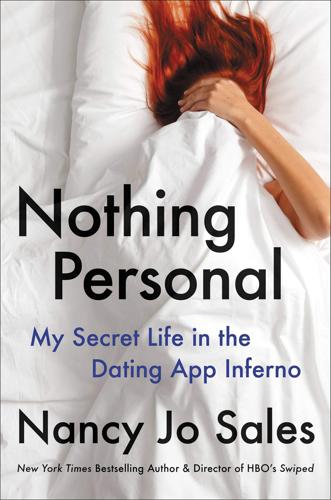
Nothing Personal: My Secret Life in the Dating App Inferno
by
Nancy Jo Sales
Published 17 May 2021
There was still this idea, relentlessly pushed by the marketing teams of Silicon Valley—as well as certain academics, some of whom were discreetly funded by tech—that social media was always harmless and fun and socially progressive, and any criticism of it in regard to how kids used it amounted to a moral panic. But when I talked to girls, I heard a different story. “Social media is destroying our lives,” said a sixteen-year-old girl in LA. “So why don’t you go off it?” I asked. “Because then we would have no life,” she said. What was most troubling to me about these conversations I had started having with girls was what I was hearing about how social media was changing the power dynamic in dating, intensifying old sexist attitudes as well as generating new kinds of misogynistic behavior.
…
What Tinder’s tweetstorm did, I think, was manufacture a backlash to my story. In the media, there were suddenly several takes which misrepresented my reporting and the concerns I was trying to raise about how dating apps had changed the experience of dating, especially for women. Slate called my piece a “moral panic.” Salon said it “reads like an old person’s fantasy of Tinder.” The Washington Post said that I had “naïvely blamed today’s ‘hookup culture’ on the popularity of a three-year-old dating app,” Tinder—when, in fact, my piece clearly described the collision of a long-trending hookup culture with technology: “Hookup culture,” I wrote, “has been percolating for about a hundred years.”
…
* * * My book American Girls came out in 2016, and I was happy with all the attention it got, and the many good reviews. I was grateful for the chance to challenge some notions that had been taking hold in recent years: for example, that social media was harmless; that sexualization was empowering; that porn was an acceptable form of sex ed for kids; that raising concerns about predators online was an overblown moral panic. It felt like my book was shifting the conversation so that people were talking more about sexism in the lives of girls, and that felt good. A writer should probably never argue with her critics, and yet we do it all the time. I was determined never to, even after Zazie and I traveled to the Brontë museum in Haworth, England, that summer of 2016, and I saw there a letter from Charlotte Brontë throwing tremendous shade on one of her critics, which made me smile.
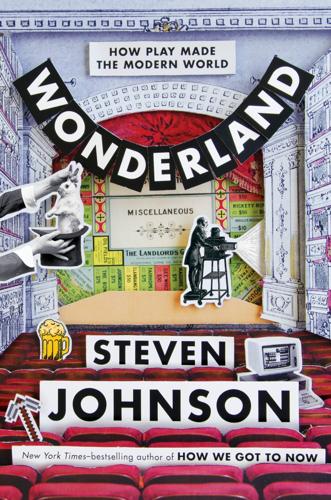
Wonderland: How Play Made the Modern World
by
Steven Johnson
Published 15 Nov 2016
(More than 80 percent of the company’s trade was devoted to calico at the height of the craze.) But the news was not as encouraging for England’s native sheep farmers and wool manufacturers, who suddenly saw their livelihoods threatened by an imported fabric. The craze for cotton was so severe that by the first decade of the next century it triggered a kind of moral panic among the rising commentariat, accompanied by a series of parliamentary interventions. Hundreds if not thousands of pamphlets and essays were published, many of them denouncing the “Calico Madams” whose scandalous taste for cotton was undermining the British economy. “The Wearing of printed Callicoes and Linnens, is an Evil with respect to the Body Politick,” one commenter announced.
…
Le Bon Marché and its peers hinted, for the first time, that the service industry would soon become a cornerstone. — Women, of course, were at the epicenter of this new industry, as they had been during the dawn of the cotton revolution two centuries before. Increasingly, women were working in these new department stores, not just enjoying them as consumers. And just as cotton had unleashed a moral panic over the traitorous desires of the Calico Madam, Le Bon Marché triggered a similar crisis in Parisian society. In this case, it was not women buying luxury items that caused the outrage; it was the even more startling fact that women were stealing them. Shortly after the arrival of grands magasins like Le Bon Marché, the Parisian authorities and other interested parties began noticing a marked uptick in the number of women caught stealing items from the stores, apparently motivated by some kind of deranged pleasure in the act.
…
His “Proclamation for the Suppression of Coffee Houses” described the threat in decisive terms: Where it is most apparent that the multitude of coffee houses of late years . . . and the great resort of idle and disaffected persons to them have produced very evil and dangerous effects, as well for that many tradesmen and others do herein mis-spend much of their time which might and probably would be employed in and about their lawful calling and affairs, but also for that in such houses, divers false, malitious, and scandalous reports are devised and spread abroad to the defamation of His Majestie’s Government . . . His Majesty hath thought it fit and necessary that the said coffee houses be (for the future) put down and suppressed . . . You can hear beneath that formal syntax the guttural cry of moral panic that would echo for centuries every time new leisure spaces emerged to scandalize older generations: from the department stores of the nineteenth century, to the pool halls of the early twentieth, to the video-game arcades of the 1980s. Charles might have “thought it fit and necessary” to suppress the coffeehouses, but the citizens of London thought otherwise.
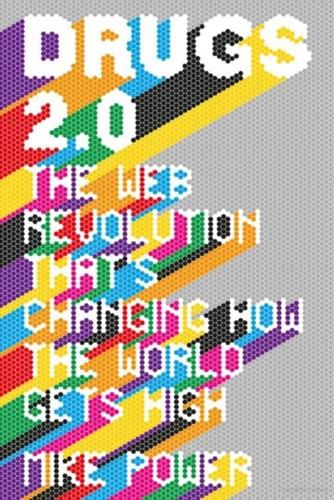
Drugs 2.0: The Web Revolution That's Changing How the World Gets High
by
Mike Power
Published 1 May 2013
The swift and protocol-busting ban on the new drug in the UK did nothing to eliminate it here or in the EU or the US; it simply handed the market to grateful gangsters who added the drug to their repertoire, and prompted greater innovation in the chemical underground. Following the intense media attention that mephedrone attracted, and the ensuing moral panic, the new chemical craze of so-called ‘legal highs’ gained full-spectrum media dominance in a matter of weeks. Newspapers and legislators were shocked, but the situation was as predictable as it was inevitable – if you knew where to look and what you were looking for, and if you’d been looking for long enough.
…
How these substances achieve this in neurological terms is hotly debated, but the latest research suggests that when flooded with serotonin the mind dampens down brain activity, rather than increasing it, as had long been thought. (These descriptions deliberately and necessarily simplify the interaction between drugs and the brain, since each category of drugs actually acts on both systems at once, and each system is far too complicated for any non-scientist to describe – or read about.) As the social taboos and moral panics around psychedelics started to build, Dow found itself the uneasy holder of patents for powerful psychedelics such as DOM – a designer drug created by Shulgin and popularized following the outlawing of LSD. This potent drug flooded the streets of Haight-Ashbury in 1967 and is said to have caused many traumatic episodes as tablets containing guaranteed overdoses of the chemical circulated in their thousands.
…
Leaving aside the fact that no toxicology reports were available at the time of that report, and that no bath salts type drugs are anything remotely like LSD, the source for these allegations was flimsy at best – neither the doctor nor the policeman quoted in the early stories had first-hand knowledge of the case, reported Reuters’ Jack Shafer.13 It is complex enough untangling the facts in news stories that involve novel psychoactive substances without media hype confusing the picture so completely that it seems almost wilful. Each generation has its drugs moral panic, whether it comes in the guise of LSD users jumping from buildings in the 1960s, PCP-crazies in the 1980s, superhuman crackheads in the 1990s, or Meow-frenzied and entirely fictional schoolkids taunting their teachers with their bags of legal highs in the early twenty-first century. As Alasdair Forsyth, of Glasgow Caledonian University’s Institute for Society and Social Justice Research, told me, ‘There was a cartoon in Punch a few years back depicting two farmers looking at a huge scarecrow with the caption: “To have any effect I find I have to make it more scary every year”.’
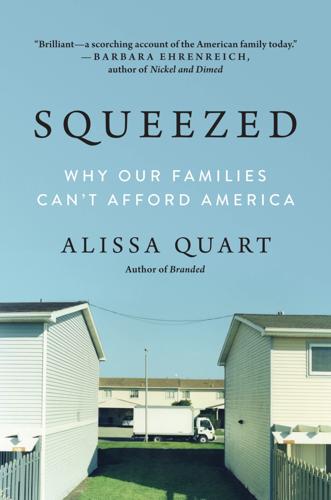
Squeezed: Why Our Families Can't Afford America
by
Alissa Quart
Published 25 Jun 2018
As Kathleen Gerson, a sociologist at New York University, put it when we spoke: “What is our strange commitment to seeing care as a purely private individual act rather than one embedded in the larger community?” Day care itself is also specifically stigmatized, a holdover from the conservative backlash against working women of the 1980s, when day care became a Satanic straw man for so many societal evils. As Richard Beck argues in We Believe the Children: A Moral Panic in the 1980s, the sexual abuse trials against day-care center workers in that decade stemmed from a reactionary fear of feminism and of women working outside the home—with the concomitant need for day care—as well as the usual fear of crime. The scapegoating of day care also stemmed from societal dismay over what many perceived as the dissolution of the traditional family, with mothers waiting at the school gates for pickup and fathers home by six, taking their seat at the head of the table.
…
My dearest thanks of all go to my husband, Peter Maass, and my daughter, Cleo Quart Maass. Loving you both made me want to tell the stories of other families, and our story, a little, as well. Bibliography Baraitser, Lisa. Maternal Encounters: The Ethics of Interruption. London: Routledge, 2009. Beck, Richard. We Believe the Children: A Moral Panic in the 1980s. New York: PublicAffairs, 2015. Bellow, Saul. The Adventures of Augie March. New York: Viking Press, 1953. Berlant, Lauren. Cruel Optimism. Durham, NC: Duke University Press, 2011. Bianchi, Suzanne, Nancy Folbre, and Douglas Wolf. “Unpaid Care Work.” In For Love and Money: Care Provision in the United States, edited by Nancy Folbre, 40–65.
…
News & World Report, 55 Valencia College Peace and Justice Institute, 105 Vanity Fair, 211 Very Hungry Caterpillar (Carle), 7 Wages for Housework, 129–30 Wage stagnation, 9, 60–61, 243 Washington Center for Equitable Growth, 177 Wayne, Christina, 219 “Wealthies” vs. selfies, 216 “Wealthy Hand-to-Mouth, The” (study), 96–97 Weather Underground, 89 We Believe the Children: A Moral Panic in the 1980s (Beck), 75 Weber, Max, 60 Weeks, Kathi, 242 Weldon, Fay, 291n Westwood College, 41 WeWork, 38–39 Wharton, Edith, 94 Whitehall Studies, 96 Who Cares Coalition, 254 Wilkinson, Will, 213 William Cullen Bryant High School, 144–45 Williams, Joan, 29 Williams, William Carlos, 40 “Will to education,” 133 Wire, The (TV show), 217 Wolcott, James, 211 Women Have Always Worked (Kessler-Harris), 112–13, 123–24 Worker cooperative movement, 157–60, 259–60 Work-life balance, 13–14, 251 Work schedules, 5, 68–72 extreme day care and, 64–66, 68–74, 78–79 remedies, 84–86 Workweek, 73–74, 84–85 of average American adult, 65, 71 rise of 24/7 day care, 64–65 World Economic Forum (WEF), 227–28 World of Homeowners, A (Kwak), 128 Xanax, 45, 62 Yale University, 48 YouTube, 214, 222 Zelizer, Viviana, 77 Zimmerman, Martín, 218 Zūm, 70 Zunshine, Lisa, 48 Zutano, 257 About the Author ALISSA QUART is the executive editor of the Economic Hardship Reporting Project, a journalism nonprofit with Barbara Ehrenreich.
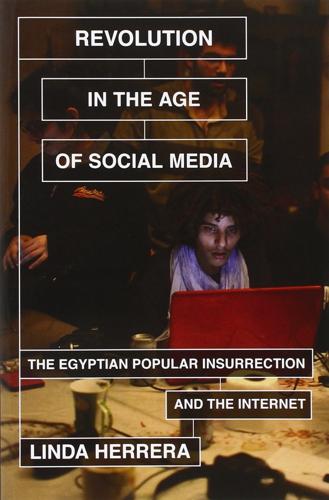
Revolution in the Age of Social Media: The Egyptian Popular Insurrection and the Internet
by
Linda Herrera
Published 14 Apr 2014
A twenty-five-year-old Egyptian university graduate illustrates this difference when he says, “I mainly associate the state with the horrible experience of having to go the police station to get my [national] ID.” To better understand how this wired generation started to coalesce into a counter-power requires going back to the era of technological opening. The high-tech revolution arrived in Egypt with a combination of excitement, moral panic, and desire. No one could predict how technology would change people and society, or how people would alter the technology. Liberalization Egyptian Style The Egyptian government, historically reluctant to allow the spread of technologies that would loosen its grip on its citizenry, nevertheless opened its doors to information and communication technologies (ICT) and the liberalization of the media.
…
The icon of Mohamed Bouazizi, however, did not appeal to some Egyptians, who found an ethical conflict in his act of suicide. When news spread that apparent copycat self-immolation suicides were taking place in Egypt—by an elderly man from Cairo, a desperately poor mother who committed the act in front of her children, and two unemployed men—a moral panic ensued. The two idioms of martyrdom and suicide were getting conflated in ways that proved troubling and complicated, and that brought ethics to the surface of the Khaled Said page. A member of the 6th of April Movement, twenty-six-year-old Asmaa Mahfouz, came forward to ease concerns about suicide/ martyrdom and to rally people to take to the streets on January 25.
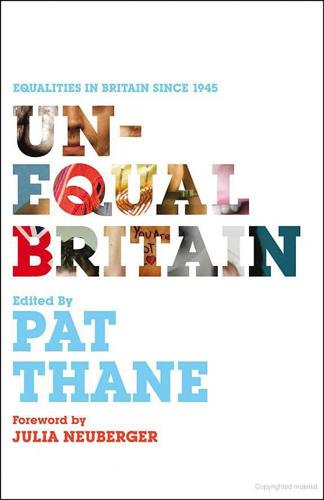
Unequal Britain: Equalities in Britain Since 1945
by
Pat Thane
Published 18 Apr 2010
There was now an 96 U N E Q UA L B R I TA I N opportunity to effect real change, with an effective and respected lobbying organization active (the TLRP), increasing levels of legal awareness among travelling communities, and strengthened human rights and race relations legislation in place. What followed, however, was a full-blown moral panic over ‘problem’ Gypsy and Traveller sites.113 In November 2004, the Select Committee on the Office of the Deputy Prime Minister (ODPM) called for the reintroduction of the statutory duty on local authorities to provide sites, and expressed concern that the new regional planning system would take too long to deliver results: There must be a national response with a duty imposed on all local authorities based on assessment of need at regional level.
…
A study of the national press coverage found: ● a widespread failure to capitalise ‘Gypsies’ and ‘Travellers’ as proper nouns, in defiance of guidelines published by the National Union of Journalists and the CRE ● a tendency by the right-wing tabloids to question Gypsies’ and Travellers’ ethnic status, implying that they were not ‘real’ ethnic minorities and that to consider them as such was ‘political correctness gone mad’ ● the use of terms that were, at best, mildly offensive and, at worst, racist, ranging from ‘itinerants’ and ‘tinkers’ through to ‘gyppos’ and ‘pikies’ ● routine stereotyping of all Gypsies and Travellers as threatening, G Y P S I E S A N D T R AV E L L E R S ● ● ● ● 99 dirty and lazy, with the over-riding message that they were invading and destroying the countryside through the stealthy and deliberate development of ‘illegal’ and unwanted sites some use of the binary stereotype of the good/bad and real/fake Gypsies to excuse racist reporting routine stereotyping of the settled community as law-abiding, decent and hardworking, drawn together by the Express newspapers under the ‘Middle England’ label, to sharpen the contrast with Gypsies and Travellers many of the hallmarks of a moral panic, including the portrayal of the Gypsy ‘problem’ as national rather than local, ‘calls for action’ in some newspapers, predictions the problem would snowball, and linking with other social problems as evidence that Britain was ‘going to the dogs’ very few voices, including that of the CRE, challenging the stereotypes or criticising the abuse of Gypsies and Travellers.130 Ironically, all political parties claimed to agree that the solution to the tensions was to increase the number of authorized public and private Gypsy and Traveller sites and to clamp down on unauthorized ones.
…
This page intentionally left blank Index Page numbers in bold refer to figures and tables. 9/11, see September 11th, 2001 abortion 58, 105–6, 110, 114, 140, 202 activism and activist groups, see campaigning Age Concern 7, 10, 14, 17–19 AIDS 127, 150–5 anti-Semitism 1, 45, 53, 56–8 Ashley, April 142–3 assimilation 54, 56, 68, 75–6, 82, 86 Bangladeshi community 2, 21, 37, 39, 41–2, 44, 65, 189 BCODP (British Council of Organisations of Disabled People) 164, 170–2, 174 Begum, Shabina 54, 64 Beveridge, William 7, 9–12, 18 birth control 58, 116, 130, 139 birth rates 4, 9, 13, 23, 108, 116, 119 bisexuality 127–9, 132, 145, 151, 154–5, 161 Blasphemy Act 53, 60–1, 66 British Federation of Business and Professional Women (BFBPW) 109–10 British National Party (BNP) 30, 38, 54 British Social Attitudes Survey 43, 119 British Union of Fascists 56 Campaign for Homosexual Equality (CHE) 145–6, 148–9, 159 campaigning and definition of mental illness 178 and disabled people 166, 168–9, 172 and ethnic minorities 37, 45–6 Gypsies and Travellers 71, 81, 102 and homosexuality 157, 161 and older people 9, 17–18, 21 and overcoming inequalities 189–90 and poverty 14–15 and religious minorities 66 and trans people 3, 159 and women 2, 107, 113, 121, 123 CARD (Campaign Against Racial Discrimination) 29, 34–5, 44, 60 Caribbean community 32–4, 36–7, 39, 41–3, 179–80 Catholic community 53, 55–8, 61, 67–9, 81, 158 child care 108, 116 Child Poverty Action Group (CPAG) 14 children and mental disability 163, 175–7, 187 Chinese community 21, 41 Christian denominations, membership of 69 Church of England 53, 55, 66–7, 141 Church of England Moral Welfare Council (CEMWC) 135–6 Church of Scotland 69, 141 CJPOA (Criminal Justice and Public Order Act) 90–2, 126–7, 150, 157 Cowell, Roberta 125, 142–3 CRC (Community Relations Commission) 29, 36–7, 47 CRE (Commission for Racial Equality) establishment of 30, 37–8 and Gypsies and Travellers 94, 98 and religious discrimination 59 and women 115 Criminal Justice and Public Order Act, see CJPOA cross-dressing 129, 147–8 culture, changes since 1945 5 DDA (Disability Discrimination Act) 164–5, 171–3, 178 DED (Disability Equality Duty) 165, 173 depression 3, 163, 166, 173, 175 disability definition of 166, 171, 173 learning 165, 172, 179, 181–2, 186 mental 3, 166, 175, 179, 181–2, 185, 187 physical 3, 166 Disability Information and Advice Line (DIAL) 164, 169 disabled people activism of 169, 172 benefits for 168–9, 173, 183 historical perception of 165 inequalities since 1945 3 and pensions 11 public attitudes to 174, 181 registered 184–5 226 disabled people (continued) responsibility for 167–8 and retirement 16 services for 170, 172, 176–9, 182, 186–7 and education, see education, and disabled people and employment, see employment, and disabled people and poverty, see poverty, and disability Disablement Income Group (DIG) 14, 163, 168 discrimination against disabled people 169–70 against gay people 158 against Gypsies and Travellers 98 against trans people 127, 160–1 against women 113 age 1, 8, 15, 18–19, 21–2 indirect 30, 37, 60–1, 112 legislation against 35–7, 41, 46, 53, 65, 170–1, 174 racial 29, 35–6, 54 religious 54, 59–62, 64, 67 in Scotland 121–2 divorce 4, 23, 105, 116, 119, 123, 132, 135 DPI (Disabled Peoples International) 170, 174 DRC (Disability Rights Commission) 165, 172, 174, 181, 190 education changes since 1945 4 and disabled people 163, 165–6, 173, 187–8 and ethnic minorities 4, 37, 42–3, 118 of Gypsies and Travellers 81–2 and older people 22 and religious identity 57, 63 and women 109, 117–18 employment and Bangladeshi community 189 changes since 1945 4 and disabled people 171, 173 discrimination in 32–3, 36 INDEX and ethnic minorities 4, 37, 39, 42, 50 and older people 4, 8, 12–13, 16, 18, 20–1, 27 and women 4, 108, 111–13, 116–20, 122–3 equality age 8, 22 legal 2–3, 60, 68, 159–61 Equality and Human Rights Commission (EHRC) and age equality 8, 22 and disabled people 174 and sexual orientation 128 establishment of 45, 47 foundation of 30 ongoing role of 190 ethnic minorities before 1945 31–2 and British politics 46 in British politics 30, 32–4, 37, 40 census data on 49 deaths in police custody 30 Gypsies and Travellers as 71–2, 81, 94 and homosexuality 145 and income 51 inequalities since 1945 2, 37 language and 43–4 and media 44 and mental disability 179 older people in 14–16, 21, 42 organizations of 33–4, 40–1 takeup of benefits 189–90 and trade unions 38–9 and volunteering 18 women in 38, 40 and education, see education, and ethnic minorities and employment, see employment, and ethnic minorities and poverty, see poverty, and ethnic minorities European Convention on Human Rights (ECHR) 72, 90, 94, 126, 157 European Court of Human Rights (ECtHR) 94–5, 126–8, 149–50, 157, 160, 162 European Declaration on Human Rights 64 families, lone-parent 119 gay men and AIDS 151–3 inequalities since 1945 2 lifestyles of 134, 144–5 as politicians 127, 157 Gay News 53, 61, 66, 126, 145–7 gender identity 125, 128–9, 159, 162 gender roles 160–1 generational interdependence 21 GLC (Greater London Council) 30, 34, 40, 115 GLF (Gay Liberation Front) 126, 144–5, 147–8 Grant, Bernie 30, 40 Greater London Action for Racial Equality (GLARE) 40 Gypsies and Travellers and housing 76 and pensions 11, 20 and political action 76–7 and retirement 16 and welfare provision 75–6 benefits for 168 caravan sites 72–4, 77–8, 80, 82–97, 99–100 continuing inequality of 189, 191 evictions of 71, 78–82, 90–3 inequalities since 1945 2, 73–5, 100–1 legal protection of 94–5 number of caravans 103 occupations of 83 organizations for 92 problems with statistics for 101–2 public attitudes to 44, 47 welfare provision for 71 Gypsy and Traveller Law Reform Coalition (G&TLRC) 72–3, 93, 97 Gypsy Charter 71, 77–8, 83 Gypsy Council 71, 81, 84–5, 88 Gypsy Lore Society (GLS) 71, 74, 76 Haire, Norman 130, 132–3 Help the Aged 13, 17 Hindu community 58–9, 62, 64 HIV, see AIDS HLRS (Homosexual Law Reform Society) 125, 137, 140–1, 144, 148 INDEX homophobia 2, 140–2, 147, 150, 154, 158–9 homosexuality decriminalization of 126, 132, 139–40 depictions of 138–9 during World War II 131–2 legal status of 126, 128–9, 132, 135–6, 139–40, 146, 148–50, 153–4, 156–8 as mental illness 178 public attitudes to 133–4, 137–8, 147, 153–4, 158, 159, 162 and religion 66, 141–2 Human Rights Act (HRA) 54, 64, 66, 72, 94, 97, 157, 160 language 43–4, 128, 134, 166 Lawrence, Stephen 30, 41 learning difficulties, see disabilities, learning lesbians and gay liberation 145–6 inequalities since 1945 2 legal status of 125, 136, 140–1 organizations of 141 persecution of 130, 132 as politicians 127, 157 public perception of 130–1, 138 life expectancy 4, 9, 23, 24 Little Kinsey 125, 133–4 London bombings, July 2005 45, 64 illegitimacy 4, 108, 131, 135 immigrants after 1945 4, 32–3 from Commonwealth countries 48 and pensions 20 and religious discrimination 67 and religious diversity 56 restrictions on 34–6, 39, 45, 56 impairments 169, 171, 173, 175, 177 Indian community 21, 42 Indian Workers’ Association (IWA) 29, 32, 34–5 inequalities health 181 income 21 since 1945 1–2, 189 integration 46, 54, 56, 65, 68, 176, 179 Irish community 31, 33, 45–6, 55, 62, 179–80, 190 Irish Travellers 72, 74, 80–1, 84–5, 94, 102 Islamophobia 62 MCB (Muslim Council of Britain) 54, 62–3, 65 media and disability 182 and ethnic minorities 44–7 and Gypsies and Travellers 74, 88, 93, 96–9 and homosexuality 133, 142, 150–2, 162 and mental illness 163–4, 175 ongoing role of 190 and religious minorities 63–4, 68 and women 123 MENCAP 163, 166, 172, 175, 181 mental hospitals 163, 165, 175–8 mental illness 164, 166, 171, 175, 177, 180 middle classes 4, 108, 110 MIND (formerly National Association for Mental Health) 163, 172, 175–6 moral panics 96, 99 multiculturalism 38, 40, 60, 65, 68 multiple sclerosis 166, 168, 171 Muslim community and British politics 54 and domestic partnership 116 and employment 59 and equality legislation 60 and ethnic identity 59–60, 62 growth of 58 Jewish community 1, 29, 31–2, 45–6, 53, 55–9, 64, 146, 189–90 JRF (Joseph Rowntree Foundation) 170–3, 179 Kinsey, Alfred 125, 132–3 Labour Party 12, 34–5, 40, 106, 111, 114, 120–2, 139, 153 227 inequalities after 9/11 1, 43, 45, 47 integration of 65, 68 legal recognition of 63 organizations of 61–2, 64 portrayal of 65 National Federation of Old Age Pensioners Associations (NFOAPA) 9, 12–15 National Federation of Retirement Pensions Associations (NFRPA) 9–11 National Front (NF) 38, 145 National Insurance 7, 11, 75 National Pensioners’ Convention (NPC) 15–16 National Spinsters’ Pensions Association (NSPA) 7, 9 New (Age) Travellers 72, 84, 88–9, 102 NF (National Front) 38, 145 NHS (National Health Service) 12, 23, 33, 109, 159–60, 163, 173, 175, 181 Northern Ireland 61, 126, 141, 146, 148, 150 Notting Hill Carnival 30, 34 Old Age Pensions, see pensions, state Old Age Pensions Association (OAPA) 9, 17 older people activity of 28 before 1945 8–9 campaigning by 22 and health 12 historical changes in inequalities 1, 13, 23–4 militancy of 8 physical condition of 19–20 use of term 19 and education, see education, and older people and employment, see employment, and older people and poverty, see poverty, and older people Pension Credit 20, 190 pensions campaigning for 7, 9–11 and disabled people 11 228 pensions (continued) occupational 11, 21 private 8, 11, 16–17, 20 state 7–11, 14, 16–18, 20, 160 and trans people 160 and women 7, 9, 116 police, attitude to ethnic minorities 30, 39, 41, 45 ‘political correctness’ 43, 96–7 population ageing of 8, 13, 16, 22, 25–6 changes since 1945 4 poverty changes since 1945 4 and continuing inequality 191 and disability 167–8 and ethnic minorities 46 and immigrants 31, 41 and older people 7, 11, 14, 22–3, 26–7 and women 11, 116, 119 pregnancy 23, 116 Press for Change (PfC) 127, 129, 159, 161, 221 prostitution 125, 129, 135–7 race, concept of 60 racism 1, 34, 38, 43–4, 46–7, 62, 94, 96, 100, 144–5 institutional 39, 41 rape 110, 114 religious minorities 54–6, 59–60, 65, 67–8 size of 69–70 retirement 7, 10–11, 13, 16–18, 21, 23, 28 riots 29–30, 39–40, 54, 57 RRB (Race Relations Board) 29, 35–7 The Satanic Verses 54, 60–2, 66 schizophrenia 164, 178–9 SCOPE (formerly Spastics Society) 164, 172, 177 Scotland Gypsies and Travellers in 75 homosexuality in 141–2, 148–50 and women politicians 121 Scottish Homosexual Rights Group (SHRG), see SMG Scottish Union of Mental Patients (SUMP) 164, 176 INDEX SDA (Sex Discrimination Act) 105, 113, 115, 122, 169 September 11th, 2001 1, 43, 45, 47, 64, 68 sex education 125, 133–4, 153 Sex Education Society 130, 132 sex reassignment surgery (SRS) 142 sexuality and identity 129, 132 survey results on 156 Sharia law 54, 65–6 Sikh community 53, 58–9, 62–3, 66–7, 69 SMG (Scottish Minorities Group) 126, 145–6, 148–50 social class 4, 42 Somali community 65 stereotypes 19, 74, 86, 99–100, 123, 190 Tatchell, Peter 127, 152–4 Telephone Legal Advice Service for Travellers (TLAST) 92 Terence Higgins Trust (THT) 126–7, 151, 153 terrorism 30, 57, 65 Thatcher, Margaret 39, 106, 115, 121, 147, 152, 155 TLRP (Traveller Law Reform Project) 73, 93, 95–6 TLRU (Traveller Law Research Unit) 72, 92 trade unions 8, 11–12, 15, 30, 34, 38–9, 85, 106, 111–12, 115, 145–6 trans people and campaigning 161 and gay communities 145, 155 inequalities since 1945 2–3 legal status of 159–60 organizations of 147–8 public attitudes to 142–4, 162 use of term 129 transvestism, see cross-dressing travel, changes since 1945 5 TUC (Trades Union Congress) 8, 15, 38, 111–12 Turing, Alan 135 United States 15, 43, 64, 118, 130, 132, 147 violence, domestic 38, 114–15, 119, 122 volunteers 17–18 Wales 31, 38, 64, 73, 79, 94, 102, 121, 159 West Indian community 29, 32, 34, 36 West Indian Standing Committee (WISC) 34–5 White, Florence 9 Whitehouse, Mary 53, 61, 126, 146, 149 Wilde, Oscar 125, 129 WLM (Women’s Liberation Movement) 38, 105, 107, 110–11, 113, 115, 145 Wolfenden Committee 125, 136–9, 141–2, 147 women black 113–14 earnings of 118 equal pay for 105, 107–13, 118–19 in ethnic minorities 38, 40 and government institutions 120, 123 Gypsies and Travellers 84, 110 and health 21 historical inequality of 107 inequalities since 1945 2 lesbian and bisexual, see lesbians and marriage 75, 108, 110–11, 116–17, 122–3, 168–9 and mental illness 180 and motherhood 108, 116–17, 119 Muslim 60, 65 organizations for 109–12, 114–15 in Parliament 110, 114, 120–1 and pensions 7, 9, 116 as percentage of population 106 and religion 66 and retirement 16 and education, see education, and women and employment, see employment, and women and poverty, see poverty, and women

Corbyn
by
Richard Seymour
The most widely shared stories on this platform were pro-Corbyn and anti-Tory, accentuating Corbyn’s celebrity support and polling improvements, thus undermining the demonisation taking place in the traditional print and broadcast media. Labour understood this advantage and invested more energy in posting and sharing social media content than all of its rivals.16 Some journalists and centre-right politicians have responded to this change with unavailing moral panic about ‘online abuse’ and ‘fake news’. As with all moral panics, they express real tendencies, but in a way that distorts, exaggerates, and scapegoats. Certainly, the emerging attention economy has allowed sensationalist websites and sources of infotainment to exert influence and claim advertising revenue, but neither sensationalism nor infotainment are original products of online media.
…
The media which have indulged in what Diane Abbott, herself one of the major targets of online abuse, called the ‘politics of personal destruction’ are in no position to lecture. And all too often, politicians have muddied the waters by qualifying any mildly intemperate political criticism as ‘abuse’, invariably with the wry rider: ‘so much for the new kinder, gentler politics.’ The moral panic is a substitute for appropriate journalistic curiosity about complex new developments. Particularly striking is the complete lack of interest in learning anything about Jeremy Corbyn and his supporters, who have instead been demonised, condescended to as silly and dangerous fanatics uninterested in wielding real power, and subject to gossip and red-baiting.
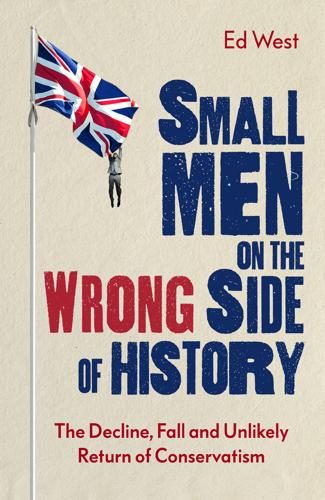
Small Men on the Wrong Side of History: The Decline, Fall and Unlikely Return of Conservatism
by
Ed West
Published 19 Mar 2020
Many conservative men like to view themselves as sort of modern-day cowboys, independent-minded tough guys who value freedom and a rugged independence, and yet we are by nature more scared of the world. Indeed, a key component to conservative thought through the ages is fear, both physical fear and a terror that society is in permanent decline. In the 1970s sociologist Stanley Cohen coined the phrase ‘moral panic’ to sum up a strand of socially conservative thinking about the way things are always getting worse and young people in particular are more badly behaved than their predecessors. Middle-aged people have always complained about the younger generation, but during the 1950s and 1960s, with the invention of the ‘teenager’ and more widely reported acts of criminality and juvenile delinquency, as well as changing sexual mores and more promiscuity, this accelerated.
…
The 1960s ethic was and is still very strong, and adolescence was supposed to be all about rebellion against the older generation and the Man, yet things had changed a lot since that earlier decade’s glorious explosion of youthful energy and music. Conservatives certainly have a tendency towards moral panic, and yet society had got considerably less safe and my adolescence coincided with the most violent period in modern British history. The Hollard Park kids would regularly prey on their neighbours on the way home, and muggings were common; indeed, street robbery, which numbered around 400 a year in England and Wales during the 1930s, was so bad by the end of the century that there were 8000 in just one London borough in a single year.10 Violence had hugely increased and one of the boys in our year, out of about a hundred, was murdered when we were in our teens.
…
Many US colleges now have full speech codes stating with some detail what is permissible to say on campus, so that the University of California states that such statements as ‘America is a land of opportunity’ should be avoided because it would insult minorities or women. The idea of academia being a place of open exchange is clearly in decline, and this has implications for society in general, beyond Right-wing clickbait articles about snowflakes. Arguing that colleges have never been bastions of free speech, and this was a moral panic, one Vox article quoted a college statement of student responsibilities from the 1960s, which warned that any behaviour that ‘offends the sensibilities of others (whether students, faculty members or visitors) . . . will result in disciplinary action . . . vulgar behavior, obscene language or disorderly conduct are not tolerated’.31 Yet institutions have always had rules about behaviour, and against bringing ‘scandal’ to the organisation; what is different now is the belief that ideas and speech are offensive, while in contrast people with protected ideas or identities are allowed to behave exactly as they like.

Custodians of the Internet: Platforms, Content Moderation, and the Hidden Decisions That Shape Social Media
by
Tarleton Gillespie
Published 25 Jun 2018
Removing spam is censoring content; it just happens to be content that nearly all users agree should go. Nearly all users agree that spam should be deleted—which means nearly all users agree that platforms should moderate. See Brunton, Spam. 23Ingraham and Reeves, “New Media, New Panics”; Marwick, “To Catch a Predator?”; McRobbie and Thornton, “Rethinking ‘Moral Panic’ for Multi-Mediated Social Worlds.” 24Fiss, Liberalism Divided; Heins, Not in Front of the Children; Streeter, Selling the Air. 25Giulia Segreti, “Facebook CEO Says Group Will Not Become a Media Company,” Reuters, August 29, 2016. http://www.reuters.com/article/us-facebook-zuckerberg-idUSKCN1141WN. 26Napoli and Caplan, “When Media Companies Insist They’re Not Media Companies and Why It Matters for Communications Policy,” 2016. 27Pasquale, “Platform Neutrality.” 28Twitter, “The Twitter Rules,” https://support.twitter.com/articles/18311. 29Gillespie, “The Politics of ‘Platforms.’” 30McPherson, Smith-Lovin, and Cook, “Birds of a Feather.” 31In this I enjoy a privilege that some users do not.
…
“The Social Construction of Scale.” Progress in Human Geography 24 (2): 219–42. MARVIN, CAROLYN. 1990. When Old Technologies Were New: Thinking about Electric Communication in the Late Nineteenth Century. New York: Oxford University Press. MARWICK, ALICE E. 2008. “To Catch a Predator? The MySpace Moral Panic.” First Monday 13 (6). http://firstmonday.org/htbin/cgiwrap/bin/ojs/index.php/fm/article/viewArticle/2152. ———. 2015. Status Update: Celebrity, Publicity, and Branding in the Social Media Age. New Haven: Yale University Press. ———. 2017. “Are There Limits to Online Free Speech?” Data and Society Research Institute. https://points.datasociety.net/are-there-limits-to-online-free-speech-14dbb7069aec.
…
“Regulating Swish: Early Television Censorship.” Media History 19 (3): 354–68. MCPHERSON, MILLER, LYNN SMITH-LOVIN, AND JAMES M. COOK. 2001. “Birds of a Feather: Homophily in Social Networks.” Annual Review of Sociology 27 (1): 415–44. MCROBBIE, ANGELA, AND SARAH L. THORNTON. 1995. “Rethinking ‘Moral Panic’ for Multi-Mediated Social Worlds.” British Journal of Sociology, 559–74. MCVEIGH-SCHULTZ, JOSHUA, AND NANCY K. BAYM. 2015. “Thinking of You: Vernacular Affordance in the Context of the Microsocial Relationship App, Couple.” Social Media + Society 1 (2): 2056305115604649. MEDEIROS, BEN. 2017.
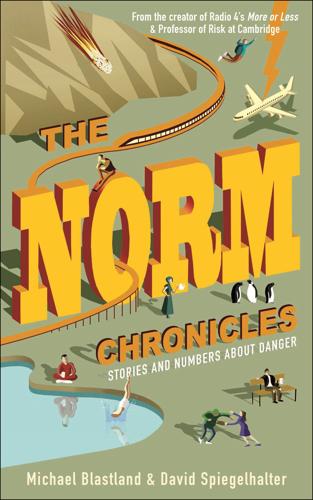
The Norm Chronicles
by
Michael Blastland
Published 14 Oct 2013
Again, for many people the simple presence, out there, somewhere, of anyone who has a history of harming children is enough, and the vagueness of the threat – you don’t know what they might do or who they are – only makes it worse. Some parents are not that worried. Some worry only in crowds. Some can’t bear to let their children play outside. Some worry only when a crime hits the news. And some say it’s all a ‘moral panic’. The phrase was popularised in the 1970s in an analysis of the Mods and Rockers of the ’60s written by a sociologist, Stanley Cohen.8 In brief, the argument is that the media overreact to behaviour that challenges social norms, and this overreaction comes to define the problem, even creates a model for others to copy.
…
RID=62767. 6. CEOP. Scoping Report on Missing and Abducted Children. 2011. Available from: http://ceop.police.uk/Documents/ceopdocs/Missing_scopingreport_2011.pdf. 7. Ministry of Justice. MAPPA Reports. 2012. Available from: http://www.justice.gov.uk/statistics/mappa-reports. 8. Cohen, S. Folk Devils and Moral Panics, 30th anniversary edn (London: Routledge, 2002). Chapter 4: Nothing 1. Daily Express. Daily Fry-Up Boosts Cancer Risk by 20 Per Cent. Available from: http://www.express.co.uk/posts/view/295296/Daily-fry-up-boosts-cancer-risk-by-20-per-cent. 2. Daily Telegraph. Nine in 10 People Carry Gene Which Increases Chance of High Blood Pressure.
…
Coli 117 earthquake 117 Ecstasy (MDMA) 99 usage 102 edgework 180 eminence-based medicine 250 epistemic uncertainty 151 equasy 104 evidence-based medicine 250 exercise 190 extreme sports 174–81 F falls from ladders 9 fear factors 206 of flying 170 of violence 237 fecundability 87 Fermat, Pierre de 133, 287 Fish, Michael 119 fishing, commercial 199 Fixed Odds Betting Terminals (FOBTs) 135 flying 170–73 food poisoning 117 force of mortality 186, 279 framing 45–8 free will 149, 152 fruit and veg 190 Fukushima 210 fun 84, 132, 137, see also extreme sports funnel plot 257 G Galton, Francis 152 Gamble Aware 134 gambling 129–38 pathological 136 gases, kinetic theory 153 genetic screening 266 genetic variant 47 Gigerenzer, Gerd 46, 165 Gill, Tim 61 Gompertz, Benjamin 280 gonorrhoea, rates 91 Gould, Stephen Jay 143 Grand National 287 Gummer, John 119 H Halley, Edmond 278 hazard curve 280 of employment 230 of unemployment 228 ratio 186 health and safety 194–203 Health and Safety Executive 61 ALARP 202 myths 195 healthy worker effect 201 heart disease, deaths 9 heart valve surgery, risk 255 Heisenberg’s Uncertainty Principle 156 helicopter accidents 173 high-impact, low-probability events 226 Hiroshima 209 Hitchhiker’s Guide to the Galaxy 153 HIV, risk of infection 91 Holmes, Sherlock 97, 105 horse-racing, betting 136, 287 horse-riding accidents 179 addiction to 104 hospitals outcome statistics 254 risk 253 HPV vaccine 67 side-effects 70 Human Mortality Database 280 hurricane 119 I illusory superiority 166 infancy 20–30 infant mortality 23 international 27 International Labour Organisation 198 involuntary risk 206 ionising radiation 206 J journeys, by train 163 Jung, Carl 76 K Kahan, Dan 111 Kahneman, Daniel 49, 237, 270 Keynes, John Maynard 161 knife-crime, in London 240 L L’Aquila 117 L’homme moyen 142, 153 Laplace, Pierre 151 Laudanum 96 lie detectors 261 life-expectancy 281 historical 282 lifestyle 182–94 London beer flood 200 longevity 278 lottery for decision-making 131 Irish, buying all tickets 134 National, see National Lottery US Mega-millions 134 M mammography 263 MAPPA 38 marathon 179 Maserati, winning 137 McCartney, Paul 280 measles numbers of cases 69 risk 65 meat red 186 risk 43 memory 270 Mercury 64 Mesothelioma 201 meteorite, landing on Comette family 216 Micro-sievert 208 Microlife, definition 183 Microlives alcohol 189 chart 189 cigarettes 189 exercise 190 fruit and veg 190 mammography 263 overweight 190 radiation 211 table of various 294 unemployment 232 value of 192 Micromort accidents 57 Afghanistan 17 anaesthetic 17, 253 asteroid 221 base-jumping 178 bomber 17 child accidents 55 coal mining 198 commercial fishing 199 commercial flights 172 daily 15 definition 15 employees international 197 employees 197 general aviation 173 hospital stay 253 illegal drugs 103 in childbirth 123, 127 infant mortality 23, 26 marathon 179 mountaineering 177 murder 246 by age 36 roads 165 roads international 169 scuba-diving 178 skydive 178 table 18 table of various 291 train 164 transport 16, 58 value 18 MicroNot 46 Millennium Development Goals 28 Milli-sievert 208 Milne, A. A. 190 Minimax regret 56 Minor Planet Center 109, 218 Mitchell and Webb 42 MMR vaccine 68 mobile phones 208 money 268–75 moral panic 39 Morphine 97 mortality at work 197 drowning 55 external causes 15 falls from ladders 9 from asbestos 201 heart disease 9 illegal drugs 103 in childbirth 123 infant 23 maternal 123 maternal in Vienna 125 murder 36 news stories 50 rail international 164 risk and rate 257 roads 168 roads international 169 statistics 4 strangulation 60 mountaineering 176 murder in London 240 risk 35–7 246 N Nanny state 60 nanotechnology 111 narrative see stories NASA, satellite 216 National Lottery as gambling 134 buying all tickets 130 coincidence 77 distribution of numbers 154 winning £100,000 137 National Risk Register 115 National Transportation Safety Board 172 natural hazards 115 natural/unnatural risk 29 Near Earth Object (NEO) 217 New York State hospitals 257 NICE 115 192 Nightingale, Florence 254 nothing/non-events 40–51 Nun, Singing 102 Nutt, David 104 O Oettinger, Gunther 212 old age 271 care costs 274 examples 278 quality of life 283 One Million Random Digits 154 Opium 97 optimism bias 92 over-diagnosis, from screening 263 overweight 190 P parachutes 177 Pascal, Blaise 133, 267 penguins 108 phobia 270 Plane Crash Info 171 plane crashes causes 172 general aviation 173 when occur 172 planning fallacy 92 Plath, Sylvia 121 playground safety 60 poisson distribution 240 possible futures metaphor 290 poverty different households 273 pensioners 272 pregnancy chances 86 teenage 89 with contraception 88 probability and consequence 54, 83, 115, 231, 289 and personal experience 85, 270 and randomness 155 as reasonable betting odds 288 does not exist 5, 288 meaning 10, 287 of dying first 188 prostate cancer 264 Prostate Specific Antigen test (PSA) 264 Public Information films 84 Puerperal fever 124 quantum mechanics 155 Q Quetelet, Adolphe 142, 153, 254 R radiation 204–12 radithor 207 Radon 207 RAF Bomber Command 17 Rail Safety Standards Board 164 Reichelt, Franz 177 relative risk 14, 44 resilience 62 reporting bias 50 retirement 271 rickets 62 risk absolute 14, 44 acute vs chronic 183 aversion 60, 61 and benefit 127 changing perception of 161 communication 117 compensation 192 does not exist independently 286 dread 206 homeostasis 167 images (or pictures) of 83, 171 involuntary 206 perception driven by values 111 perception in sports 180 relative 14, 44 tolerable 202 unacceptable 202 road accidents, children 56 roads 165–70 Roulette 135 Russian Roulette 17, 18 S salience 35, 49 satellites, coming to earth 222 sausages, risk 14 school trips 62 screening 260–67 scuba-diving 178 security airport 262 lie detectors 261 selective samples 85 Semmelweis, Ignaz 124 seriality 76 sex 82–93 sexually transmitted infection (STI) 86 Shipman, Harold 102, 239 Sievert 208 skiing 2 sky-dive 284 risk 144 Slovic, Paul 49, 127, 208, 237 smallpox 66 social control 101 social norms 99 societal concerns 202 space 213–24 space-junk 222 spike, in steering wheel 167 sports, accidents 179 Standardised Hospital-level Mortality Indicator (SHMI) 258 statins 47 still-births 25 stories 4, 65, 266, 195 and coincidence 81 definition of 6 detail in 80, 238 contrasted to non-events 48 in scenario planning 227 crime in the media 236 and truth 239 and patterns 243 medical narrative 251, 261 see also anecdote strangulation, child risk 60 sudden infant deaths 26 Surfers Against Sewage 180 surgery 247–59 Swine flu 71 synchronicity 77 syphilis, rates 83, 90 T tea, as drug 95 teenage pregnancy 89 terrorism 2 lie detectors 261 Thimerosal 71 Thompson, Hunter S. 98, 101, 180 tolerability of risk framework 201 TORINO scale, for asteroid risk 220 total fertility rate 88 trains 160–65 transport 158 accidents 55 trepanation 251 Trier, Lars von 216 trust 167 Tungaska event 216 Tversky, Amos 49 U uncertainty 157, 224, 260, 264 aleatory 151 epistemic 151 unemployment 225–33 V vaccination 63–71 HPV 67 smallpox 67 Value of a Statistical Life (VOSL) 18, 165 variation around average 143 vehicles, number of 168 victim of violent crime, rates 244 Victoria, Queen 121 Vietnam, lottery 131 violence 31–9 crime 244 on railways 162 volcano, Iceland 117 W Wilde, Oscar 96 Willis, Bruce 219 wing-suit 176 Woolf, Virginia 48 World Health Organisation 68, 169, 253 World War II 17 * The story of Anna Bagenholm comes from various sources, including The Lancet1 and Atul Gawande, in his book Better.2 † The usual phrase here is that Anna beat or defied the odds.
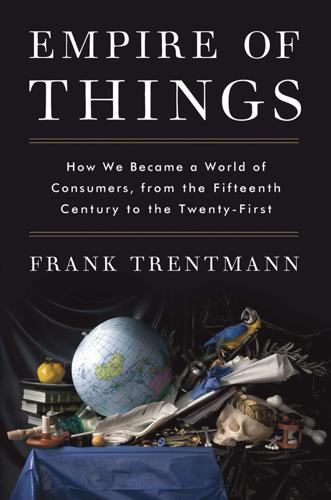
Empire of Things: How We Became a World of Consumers, From the Fifteenth Century to the Twenty-First
by
Frank Trentmann
Published 1 Dec 2015
Significantly, it was at this time, in 1904, that the American psychologist Stanley Hall defined adolescence as a separate life-stage, a period of ‘storm and stress’ prone to perversion and vice.128 Troublesome youths were nothing new in history, but it was now that they were diagnosed as a distinct problem: juvenile delinquents. Moral panic was fuelled by an awareness of the growing independence of youth, in terms of both money and mobility. Scavenging for tin cans, bottles, paper and discarded furniture and selling the loot to the local junkman gave city kids new freedom as consumers. Rising wages freed adolescent workers from parental control.
…
In Moscow, young men flâneured up and down the left side of Gorky Street – Broadway or simply ‘Brod’ to them – in extra-long jackets, tight trousers with wide flares and thick-soled shoes that could weigh up to 2.5kg. On both sides of the Iron Curtain, authorities, journalists and cultural elites voiced the same moral panic: youth was in crisis.117 These confrontations had particular local ingredients; West Germans, for example, worried about how to build a new army with young rebels. But it is helpful to see things in the round. How consumption redefined generations is a theme that will be explored in greater depth in a later chapter.
…
In the Eastern Bloc there were also signs of a new age-specific culture of pleasure, separate from the demands of work and politics. In a Russian underground publication, a writer charged the older generation: ‘You propose to spit on the operetta, study only [Friedrich Engels’] Anti-Dühring? and discuss politics? How boring are your ideals . . . How can a person live without jazz, funny songs, dance and laughter?’127 The moral panic about young consumers was so sharp because of related concerns about sexual promiscuity and a loosening of class and gender hierarchies. Sex was becoming an ‘obsessional activity’, of ‘purely animal satisfaction’, Seebohm Rowntree wrote in 1951.128 Such fears drew on an earlier association between the temptations of the flesh and the lust for things, especially among the weaker sex.
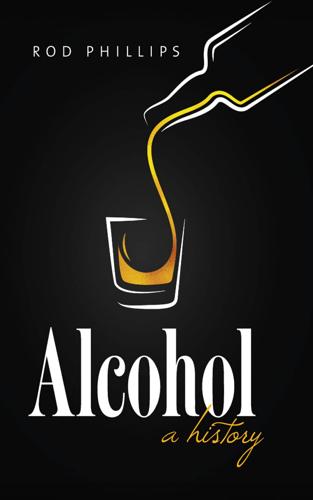
Alcohol: A History
by
Rod Phillips
Published 14 Oct 2014
The 1925 description by the historian Dorothy George that “it would be hardly possible to exaggerate the cumulatively disastrous effects of the orgy of spirit-drinking between 1720 and 1751” seems itself to be an exaggeration.45 And contemporary accounts of widespread ruin and death as a result of gin-drinking are surely examples of moral panic based on a fragile interpretation of verifiable events. Be that as it may, it is clear that the production and consumption of spirits did increase dramatically in some parts of England (especially in London) during the first half of the eighteenth century, and that this must have had implications for the health and well-being of many individuals and for the social order more generally. It is difficult, however, to assess the scale of the phenomenon and its consequences and to understand why they provoked a moral panic. The popularity of gin in England was kick-started by a shortage of brandy, which by the late seventeenth century was being imported from France in substantial volumes: 2 million gallons a year by the 1680s.
…
Gin was said to be much stronger than brandy and to be, as such, a much “hotter” beverage that could “overheat” its consumers. If excessive brandy-drinking in the morning led to the abuse of wine and beer in the afternoon, the risk was that much greater when grain spirits were involved. Warnings about the potential dangers of spirits seemed to be justified by a number of moral panics in the early eighteenth century, the most dramatic and best-documented of which was the “gin-craze” that was believed to have taken hold in parts of England between 1700 and 1750. (“Gin” was a generic term for a wide range of distilled spirits, and it was not specifically the juniper-flavored spirit that was at issue here, but all grain-based alcohol.)
…
The second major alcohol issue associated with young people, binge-drinking or heavy episodic drinking, refers to drinking significant volumes of alcohol in a short period with the primary purpose of getting drunk. Concern for binge-drinking (the term is rejected by some alcohol policy-makers) has some of the characteristics of a moral panic, an inflated assessment of some form of behavior, such as the gin-craze of early eighteenth-century England might well have been. At that time, middle- and upper-class men deplored—and undoubtedly exaggerated—the extent of public drinking by women, workers, and the poor, even though they themselves might have regularly drunk themselves into oblivion in the privacy of their homes and clubs.
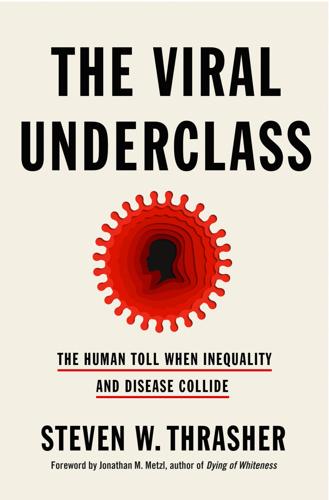
The Viral Underclass: The Human Toll When Inequality and Disease Collide
by
Steven W. Thrasher
Published 1 Aug 2022
And yet, that was the message the ABC News story was trying to convey—as were other news outlets (like CNN and the Associated Press), when they unethically and uncritically repeated their competitor’s story without doing any original reporting of their own: COVID-19 was being driven by the solipsism of genocidal college students. The story was a case of moral panic, meant simplistically to assign blame for complex social problems that were politically inconvenient for the ruling class. Stories like the one about COVID-19 parties aren’t just shoddy journalism; they are useful mythmaking for the ruling class agenda. As Americans fell into poverty and begged for relief in the pandemic, the federal government could have taxed the wealthy more, taxed corporations (whose wealth is built by workers), and printed money to send to people to keep them from falling into starvation or homelessness.
…
Black women—was Ferguson: “1.5 Million Missing Black Men,” interactive graphic, Justin Wolfers et al., New York Times, April 20, 2015, https://www.nytimes.com/interactive/2015/04/20/upshot/missing-black-men.html. 2: The Infinite Weight of Zero “who gets the virus first”: Bill Hutchinson, “Alabama Students Throwing ‘COVID Parties’ to See Who Gets Infected: Officials,” ABC News, July 1, 2020, https://abcnews.go.com/US/alabama-students-throwing-covid-parties-infected-officials/story?id=71552514. Such contests never happened: In a separate example of a COVID party moral panic in 2020, a local TV station retracted their reporting on COVID parties. See Neil Fischer (@NeilFischerTV), tweet, Twitter, May 7, 2020, 8:46 p.m., https://twitter.com/NeilFischerTV/status/1258558984522350593. But with the Tuscaloosa story, major news organizations did not address its holes, even after media critics like me, on Twitter and in Wired, pointed out the lack of evidence.
…
mining industry minjung protests Minneapolis Minnesota Mississippi Missouri Missouri Association of Prosecuting Attorneys Missouri Court of Appeals, Eastern District Missouri Department of Corrections Missouri HIV transmission law (1988) Missouri Supreme Court Missouri v. Michael L. Johnson Mitchell, Elise MMR vaccine Molldrem, Stephen moral failing moral panic mortgage foreclosure crisis mosquitoes mumps. See also MMR vaccine Murrow, Edward R. Mustanski, Brian mutual aid “my body, my choice” Myles, Otha NAACP naloxone Nation National Black Justice Coalition National Football League National Health Service (U.K.) National Institute of Allergy and Infectious Diseases (NIAID) nationalism National Junior College Athletic Association Wrestling Championships National Park Service Native Americans nativism Nature Nazi Germany Nebraska necropolitics neoliberalism New Deal New Democrats New Jersey “new Jim Crow” New Orleans New Republic Newsom, Gavin New York City New York City Council New Yorker New York Police Department (NYPD) 85 New York Post New York State New York State Senate New York Times Magazine Nguyen, Kimarlee Nixon, Jay norovirus Norplant North Carolina Nott, Josiah Clark nursing homes Oakland Obama, Barack Ocasio-Cortez, Alexandria Occupational Safety and Health Administration (OSHA) Ohio OKCupid Olivarius, Kathryn Onassis, Aristotle Onassis, Jacqueline Kennedy On the Origin of Species (Darwin) opioid crisis organized abandonment othering overdoses ownership mentality Oxfam International OxyContin (oxycodone) Palestinians Parasite (film) parasites, defined Paris Paris Is Burning (film) Pasteur, Louis Patel, Rupa Pathogen Research Database Patient 31 Patient O (“outside”) patient zero “Patient Zero”.
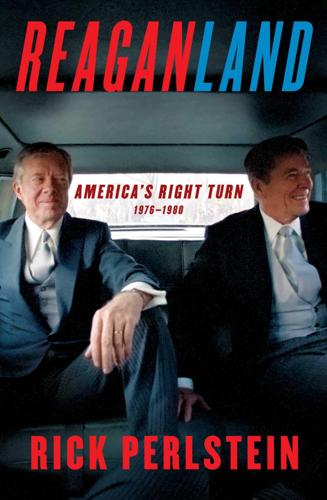
Reaganland: America's Right Turn 1976-1980
by
Rick Perlstein
Published 17 Aug 2020
Paul, Minnesota Clendinen and Nagourney, Out for Good, 323–24; AP, April 19, 1978; Randy Shilts, The Mayor of Castro Street: The Life and Times of Harvey Milk (New York: St. Martin’s Press, 1982), 223–26, 215–17. Wichita, Kansas Clendinen and Nagourney, Out for Good, 322–23; Fred Fejes, Gay Rights and Moral Panic: The Origins of America’s Debate on Homosexuality (New York: Palgrave Macmillan, 2008), 161, 173–75. Eugene, Oregon Fejes, Gay Rights and Moral Panic, 175–76; Clendinen and Nagourney, Out for Good, 322. Florida Citrus Commission Gannett News Service, January 22, 1978. “done the most damage” Jackie M. Blount, Fit to Teach: Same-Sex Desire, Gender, and School Work in the Twentieth Century (Albany: State University of New York Press, 2006), 147.
…
In Minnesota Clendinen and Nagourney, Out for Good, 324–36; Fred Fejes, Gay Rights and Moral Panic: The Origins of America’s Debate on Homosexuality (New York: Palgrave Macmillan, 2008), 173. “we have been attacked” Randy Shilts, The Mayor of Castro Street: The Life and Times of Harvey Milk (New York: St. Martin’s Press, 1982), 223–26, 218. State Senator John Briggs Ibid., 219. Mayor Connie Kennard ABC News, May 8, 1978, VTVNA. The reverend leading UPI, April 29, 1978. shocking 83 percent Fejes, Gay Rights and Moral Panic, 174. White House public liaison “Wichita Repeals Homosexual Law,” NYT, May 10 1978.
…
On May 15 AP, May 16, 1978. “Wichita and St. Paul” Fejes, Gay Rights and Moral Panic, 177. Burlington, Vermont Christopher Hewitt, Political Violence and Terrorism in Modern America: A Chronology (Westport, CT: Greenwood, 2005), 118. angry letters “Principle of Nonviolent Opposition,” Burlington Free Press, May 25, 1978. United Presbyterian Church UPI, May 6, 1978; AP, May 23, 1978. Jerry Falwell preached Daniel K. Williams, God’s Own Party: The Making of the Christian Right (New York: Oxford University Press, 2010), 152. Eugene voted Fejes, Gay Rights and Moral Panic, 177. Milk had enjoyed Shilts, The Mayor of Castro Street, 220–21.
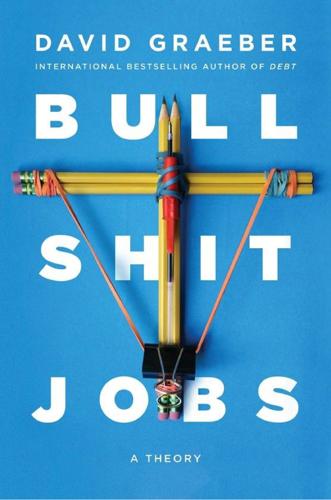
Bullshit Jobs: A Theory
by
David Graeber
Published 14 May 2018
They were expected to live their entire lives effectively as unfinished human beings.31 Inevitably, many began to rebel, give up on the interminable waiting, and began marrying early, abandoning their masters to set up cottages and families of their own—which, in turn, set off a wave of moral panic among the emerging employing class very reminiscent of later moral panics about teenage pregnancy. The following is from The Anatomie of Abuses, a sixteenth-century manifesto by a Puritan named Phillip Stubbes: And besides this, you shall have every saucy boy, of ten, fourteen, sixteen, or twenty years of age, catch up a woman, and marry her, without any fear of God at all . . . or, which is more, without any respect how they may live together, with sufficient maintenance for their callings and estate.
…
This in turn led to a renewed backlash of moralizing about work as a value in itself of the sort we’ve already encountered in chapter 6—at the same time as an export of many factory jobs to poor countries where labor was cheap enough it could still be performed by human beings. It was in the wake of this reaction to the sixties counterculture, in the seventies and eighties, that the first wave of managerial feudalism, and the extreme bullshitization of employment, began to make itself felt. The latest wave of robotization has caused the same moral crises and moral panics as the sixties. The only real difference is that, since any significant change in economic models, let alone property regimes, is now treated as definitively off of the table, it’s simply assumed the only possible result will be to convey even more wealth and power to the 1 percent. Martin Ford’s recent The Rise of the Robots, for example, documents how, after making most blue-collar workers redundant, Silicon Valley is in the process of taking aim at health care, education, and the liberal professions as well.
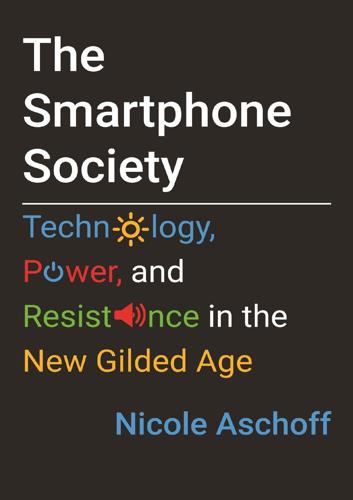
The Smartphone Society
by
Nicole Aschoff
In their landmark study Middletown: A Study in Contemporary American Culture, the sociologists Robert and Helen Lynd described a similar moment of flux: 1920s America and its emergent love affair with the automobile.3 By the end of the roaring twenties, the automobile had become central to the lives of “Middletown” (actually, Muncie, Indiana) residents, an “accepted essential of normal living” and an “important criterion of social fitness.”4 Homes built during the period no longer contained formal parlors because unmarried daughters now socialized with their beaus on unchaperoned “dates” out in the car—a source of both fierce disagreement between parents and children and growing moral panic over “sex crimes” committed in automobiles.5 Young men whose families didn’t own a car were excluded from social clubs, and families were rumored to purchase cars to help their children fit in. Walking for pleasure or bicycling marked one for abuse from young boys known to shout, “Aw, why don’t you buy a machine!”
…
Much of this deterioration can be traced to their phones.”37 On the Other Hand Scary critiques of smartphones increasingly seem to permeate popular narratives. Everywhere we turn online, features with impressive graphics and earnest podcasters mull over the dangers of our hand machines. Are we crazy to be carrying these things around in our pockets? Or are we in the midst of a moral panic in which we project broader fears about social change onto an easily identifiable target? These are difficult questions to answer, not least because there is so much disagreement about the impact of smartphones on individuals and society more broadly. Anthropologist Judy Wacjman disagrees with Turkle, arguing that “smartphones should be regarded as another node in the flows of affect that create and bind intimacy.”38 Ling, in a pathbreaking work on mobile telephony, argues that the mobile phone “extends the reach of parents, children, and friends” and actually “seems to result in stronger internal group bonds.”39 Scholars studying social cohesion in Korea, France, and Japan reported similar findings.
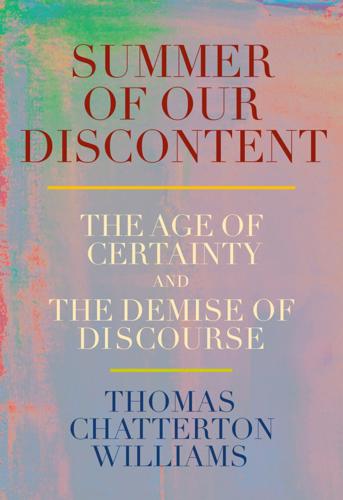
Summer of Our Discontent: The Age of Certainty and the Demise of Discourse
by
Thomas Chatterton Williams
Published 4 Aug 2025
And so what had started understandably and even nobly as regard for specific communities with racially correlated but variegated vulnerabilities—dense living conditions, high rates of comorbidities, disproportionate representation in fields designated “essential work,” lack of quality health care, and, not insignificantly, distrust of medical institutions—would soon give way to something intensely different: a full-blown moral panic that, in retrospect, it is possible to say with no exaggeration, touched on every facet of our collective, mediated existence and spawned a vicious counterreaction from the authoritarian right that further erodes our liberal democracy. * * * — Summer of Our Discontent is the story of this dramatic and not inevitable turn in consciousness, encapsulated in these generation-defining twin calamities, which reshaped not just American life in the third decade of the twenty-first century but also the networked, internet-driven monoculture that huge swaths of the planet increasingly inhabit.
…
Given how “marginalized voices have been silenced for generations in journalism, academia, and publishing,” a surprising number of critics argued in a counter letter, the current silencing of new voices today is not a significant problem, as if an equality that is achieved by rendering everyone as insecure as oppressed minorities had once been were a desirable or effective vision for the future. That was but the most obvious objection. It was possible to project really any grievance onto the defense of tolerance and freedom of expression in a time of widespread and ongoing moral panic. The inclusion of prominent Jewish names, such as Bari Weiss, meant the letter was also “a free pass for Zionists.”[*6] Through a third lens and assortment of signatures—not only but most prominently that of Rowling—the letter was read as nakedly transphobic. “The sheer number of signatories who have waded into the transgender debate on the anti-trans side is astounding,” the journalist Katelyn Burns began a viral thread on Twitter.

Cloudmoney: Cash, Cards, Crypto, and the War for Our Wallets
by
Brett Scott
Published 4 Jul 2022
This despite the fact that the Bank of England released a scientific report noting that card machines, trolley handles, goods on open shelves and the screens of self-checkout counters – all of which Decathlon has – pose a far greater risk of spreading the virus than cash does. By the time this book is released cash may indeed seem very peculiar in London, but fifty years ago cash was seen as entirely legitimate. Fifty years ago, however, Visa was only a young company (with a different name). Over the years it, and others, have managed to install a level of moral panic about cash. The industry has consistently cast card payments as being safer, cleaner and higher status than cash, thereby slowly associating the latter with crime, disease and low status. Payments companies even spread ideas about cash as environmentally unsustainable, as if digital payment-fuelled Internet commerce has not led to massive increases in energy-intensive logistics and consumption.
…
That is why it is being crushed, or, to put it in its more traditional framing, that is why consumers are turning to digital payments in this rapidly changing world. Let’s look more closely at the emergent fusion. 8 Shedding and Re-skinning Throughout the ages, bankers have accumulated money by writing and trading contracts about money – and throughout the ages this has been a source of moral panic. A Florentine Medici banker in 1416 needed only capital to back contracts or absorb losses, and a quill pen to write the contracts. It did not take much physical energy, but it took mental energy to think everything through, and emotional energy to stomach the risk of loss. For a person used to physical labouring in those times, such activity might seem mysterious – even devilish.

Cities Under Siege: The New Military Urbanism
by
Stephen Graham
Published 30 Oct 2009
Clancey points out that the Republican party was itself crafted, as he puts it, ‘by the march across the Great Plains; an act of exodus or retreat from the urban Atlantic rim’, in Jordan Crandall, ed., Under Fire 2 The Organization And Representation of Violence, Rotterdam: Witte de Witte, 64. 34 Jeremy Adam Smith, ‘Tearing Down the Towers’. 35 David Harvey, Justice Nature and the Geography of Difference, Oxford: Blackwell, 1996, 404. 36 Guy Baeten, ‘The Uses and Deprivations of the Neoliberal City’, in BAVO, ed, Urban Politics Now: Re Imagining Democracy in the Neoliberal City, Rotterdam: NAi Publishers, 2008; Rowland Atkinson and Gesa Helms, eds., Securing an Urban Renaissance, Bristol: Policy Press, 2007. 37 David Simon, ‘The Escalating Breakdown of Urban Society across the US’, Guardian, 6 September 2008. 38 Quoted in Paul Street, ‘Republicans, Cities, and Cruise Ships’, Znet, February 2004. 39 Ibid. 40 Steve Macek, Urban Nightmares: The Media, The Right and The Moral Panic Over the City, Minneapolis, MN: University of Minnesota Press, 2006, 37–70. 41 It is striking how Christian Fundamentalists regularly espouse the pseudo-science of Social Darwinism whilst rejecting out of hand the overwhelming accumulation of hard-scientific evidence supporting Darwinian theories of Evolution.
…
One report by Visionics, a leading manufacturer, promised that its face-recognition technologies would do no less than ‘Protect … Civilization from the Faces of Terror’.105 Seduced by such hyperbole, Interpol announced in October 2008 that it was seeking to develop an international face-recognition CCTV system to integrate screening across main borders.106 The dramatically intensified investment and research in face-recognition CCTV after 9/11 has exploited perfectly the notion of what Kelly Gates calls an ‘amorphous, racialized, and fetishized enemy Other that had penetrated both the national territory and the national imagination’.107 The race is on to develop systems appropriate to the ‘nation’s new “unidentifiable” Other’ – people of ‘Middle Eastern appearance’.108 The technophilic search for an extended, distributed system for tracking the biometrically scanned faces of suspect individuals thus parallels the idea, propagated through the moral panic flooding the national media, ‘that certain faces could be inherently “faces of terror” – that individuals embody terror or evil in their faces’. This, Gates argues, could ‘not help but invoke a paranoid discourse of racialized otherness’.109 The prospect of ‘smart’ CCTV continually searching for ‘abnormal’ or ‘threatening’ elements across entire cities and nations may ultimately prefigure the collapse of the age-old notion of urban anonymity.
…
We were driving next to a truck with some day laborers … and we were parked beside them at a light. [My daughter] wanted to move because she was afraid those people were going to come and get her. They looked scary to her’.59 The widening anxieties surrounding urban life within the context of the War on Terror add to moral panics over crime, social unrest, and the need to fortress oneself and one’s family against all manner of incursions and risks. Enter the SUV, carefully designed and marketed to exploit and perpetuate fears of the Other, the ghetto, while at the same time providing reassurance and patriotic symbolism for ‘homeland’ suburbanites who find themselves experiencing a new kind of war, in which vague and unknowable threats might lurk everywhere and anywhere, threatening to strike at any time.

America Right or Wrong: An Anatomy of American Nationalism
by
Anatol Lieven
Published 3 May 2010
Although at their farther 117 AMERICA RIGHT OR WRONG fringes the forces of the American antithesis shade over into fascistic manias like that of the terrorist Timothy McVeigh and the various militia movements, the great majority are not opposed to the formal democratic aspects of the American Creed; on the contrary, they take enormous pride in them and regard them as the core of American grandeur. This national unanimity behind democracy has formed the essential component of what might be called America's self-correcting mechanism, the country's ability to undergo periods of popular hysteria, moral panic and nationalist extremism without allowing them to become a permanent feature of the national scene or to be institutionalized in dictatorship. At least until now. As later chapters discuss, a combination of the national security state created by the Cold War and a war against terrorism with no foreseeable end may create some worrying possibilities in the long term.
…
To the old anti-American prejudices elsewhere in the West, it adds the suspicion that powerful sections of the United States are driven by motives which are both wholly culturally alien to the rest of the developed world and fundamentally irrational. It risks creating a degree of fundamental alienation from America among other Western elites which was never true in the past. Moral Panics Although the Southern and Northern churches divided bitterly over slavery (with abolition becoming a great crusade for parts of Northeastern Protestantism), after the Civil War the Southern churches were also closely associated with some of the Northern and so-called mainline Protestant churches of the United States in certain moral crusades.
…
See also IsraeliPalestinian conflict Parade (magazine), 21 partisan politics, suspension of, 23-24 patriotism, 5,150; vs. nationalism, 2, 6-7 Pentecostals, 44, 125 Perle, Richard, 30, 165,166, 170, 178 Perlmutter, Nathan, 205 Pipes, Daniel, 200, 212 Podhoretz, Norman, 129, 158, 205 Poland, 190, 196-97 polarization in U.S., 5, 130 political correctness, 28, 47; and nationalist myth, 5960, 62-63 populist nationalism, 96, 104, 134 Porch, Douglas, 26 Powell, Colin, 44, 78, 152, 170, 177 Present Danger, The (Podhoretz), 158 Present Dangers (Kagan, Kristol), 164-65 Prestowitz, Clyde, 46 pride, national, 3, 19-20, 53 progressive internationalists, 79 Progressive Policy Institute (PPI), 77 Prohibition, 131-32, 133, 137 propaganda, 24, 78, 113, 155; anti-Israeli, 205; around race, 47, 62 Protestantism, 6, 21, 44, 5455, 97, 125, 139 Protestants, 101, 104, 140; evangelical/ fundamentalist, 5, 8-10, 99, 124, 126, 144; and moral panic, 130-33; nativism in, 9196; and religious nationalism, 33-34 Prudhomme, Sully, 38 Pursuit of the Millennium, The (Cohn), 147 Quinet, Edgar, 35 racism, 41-47; covert, 43, 46; and cultural conformity, 41-43, 44; transformation of, 43-47, 49 Rational Choice theory, 66, 68 Ravitch, Diane, 60 Reagan administration, 79, 129,141, 169, 178; and national myth, 57-58, 59, 63, 153 "Realism," 75, 170, 183; character of, 18, 159, 17071; criticism of, 76, 78, 79; dominance of, 82, 172 273 Red Cross, International Committee of (ICRC), 121, 122 "Redneck" culture, 116 Reed, John Shelton, 102,107, 116 Reed, Ralph, 43, 92, 119,141 religion: conservative, 8, 12325; statistics on, 140.
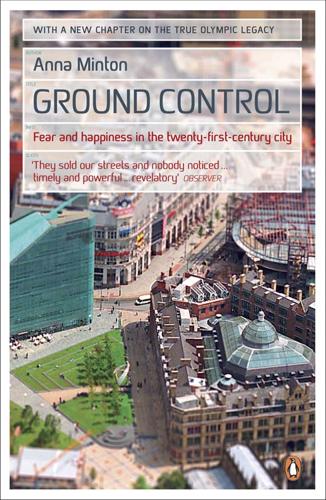
Ground Control: Fear and Happiness in the Twenty First Century City
by
Anna Minton
Published 24 Jun 2009
A feature of the legislation is that a disproportionate number of antisocial-behaviour orders have been handed out to people with mental health problems which result in unusual behaviours, such as autism or Tourette’s syndrome.28 When antisocial-behaviour orders are breached, which they are in the majority of cases, the consequences can be up to five years in prison.29 So what is antisocial behaviour and where has it come from? ‘The morals of the children are ten times worse than formerly,’ Lord Ashley told the House of Commons in 1823, showing that moral panics about the behaviour of young people are nothing new.30 According to the legislation, antisocial behaviour is defined as behaviour which can cause ‘harassment, alarm or distress to one or more persons not of the same household [as the perpetrator]’. But while the definition is broad enough to cover just about anything, the antisocial-behaviour agenda, which is also branded the ‘Respect’ agenda, has introduced specific legislation, including parenting orders, curfews, evictions, antisocial-behaviour orders and dispersal orders.
…
The consequence of excluding problem families from social housing is the creation of ghettoes of terrible conditions described in the last chapter. IS BEHAVIOUR WORSE? As Lord Ashley’s comments about young people in 1823 revealed, every generation believes that behaviour, of its young people in particular, is not what it was. The term ‘moral panic’ was coined in the 1960s after the shock which greeted the clashes between mods and rockers. In the 1970s punk, with its Mohican haircuts and safety pins, terrified the older generation. Punk gave way to skinheads and football hooligans. Later in the 1980s a more overtly racist narrative linked young black men to inner-city crime.

Mistakes Were Made (But Not by Me): Why We Justify Foolish Beliefs, Bad Decisions, and Hurtful Acts
by
Carol Tavris
and
Elliot Aronson
Published 6 May 2007
Ofshe and Ethan Watters (1994), Making Monsters: False Memory, Psychotherapy, and Sexual Hysteria, New York: Scribners; Elizabeth Loftus and Katherine Ketcham (1994), The Myth of Repressed Memory, New York: St. Martin's Press; and Frederick Crews (ed.) (1998), Unauthorized Freud: Doubters Confront a Legend, New York: Viking. For an excellent sociology of hysterical epidemics and moral panics, see Philip Jenkins (1992), Intimate Enemies: Moral Panics in Contemporary Great Britain. Hawthorne, NY: Aldine de Gruyter. The specific example of the woman who claimed that her father molested her from the ages of five to twenty-three is known as Laura B., who sued her father, Joel Hungerford, in the state of New Hampshire in 1995.
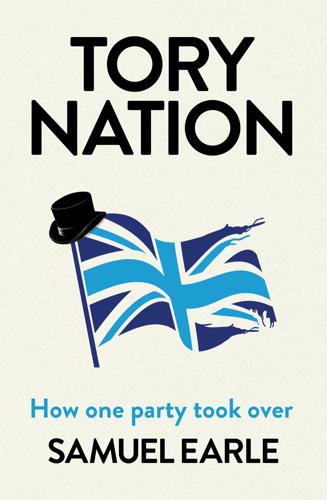
Tory Nation: The Dark Legacy of the World's Most Successful Political Party
by
Samuel Earle
Published 3 May 2023
Like the Conservative Party, the Tory Press positions itself as the nation embodied – playing up its patriotism while also vilifying scapegoats and fuelling prejudices against minorities. The aim is twofold: to generate controversy, thus boosting circulation, and to concoct an endless array of moral panics to which the Tories can then pose as the solution. Beaverbrook used to sing ‘Sow the seeds of discord, sow the seeds of discord’ down the telephone to his staff, to the tune of ‘The more we are together…’. ‘We must make the readers cross’, instructed an internal memo at the Sunday Express in 2003.
…
Imagine the Tories, Blair seemed to say, but with a defence of multiculturalism, minority rights and a concern for the ‘less fortunate’ – Conservatism, but with less sleaze, better looks, bigger hearts, more Europhilia. Blair even had a tough law-and-order agenda for all those who feared that New Labour’s optimistic, lovey-dovey liberalism might be a light touch. Playing into moral panics about delinquent youths, early New Labour policy proposals included ‘fast-track punishment for persistent young offenders’ and a 9 p.m. curfew on all unaccompanied children. ‘The vast majority of parents are as appalled as I am at seeing children on the streets on their own at nine, 10 or 11pm,’ Jack Straw, Labour’s shadow home secretary, explained.3 He also promised to ‘reclaim the streets from the aggressive begging of winos and addicts’.

The Importance of Being Seven
by
Alexander McCall Smith
Published 1 Jan 2010
As for the received view about the so-called empty nest syndrome, like many syndromes it barely exists. In most cases, parents do feel a slight pang on the leaving of home by their children, but this pang tends to occur before the offspring go, and it is largely a dread of the syndrome itself rather than concern over the actual departure. In this way it is similar to many of the moral panics that afflict an imaginative society from time to time: the fear of what might happen in the future is almost always worse than the future that eventually arrives. So when the child finally goes off to university, or takes a gap year, or moves out to live with coevals, the parents might find themselves feeling strange for a day or two, but often find themselves exhilarated by their new freedom.
…
It would have to be one of the galleries that are accepted as being the sort of place where coffee makers – or anything, for that matter – can be sold as art. I’m not in that line of apostolic succession, so to speak.’ Big Lou was thinking. ‘The Dutch tulip affair,’ she said. ‘I was reading a funny wee book about social hysteria – about how folk get things into their heads and go mad for a while. There was something about witchcraft.’ ‘Moral panic,’ prompted Matthew. ‘Yes. That sort of thing. Didn’t the Dutch go mad about tulips back in the – when was it – 1600s? Didn’t they pay terrific prices for tulip bulbs? And these bulbs got more and more expensive and people fought to have the rarest ones they could get hold of. Sheer stupidity.’ ‘Yes,’ said Matthew.
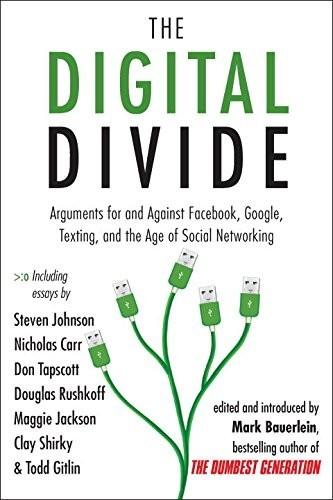
The Digital Divide: Arguments for and Against Facebook, Google, Texting, and the Age of Social Netwo Rking
by
Mark Bauerlein
Published 7 Sep 2011
Suburbs, sprawling ever farther, became exurbs. Families grew smaller or splintered apart, mothers left the home to work. The electronic hearth became the television in every room. Even in childhood, certainly in adolescence, we were each trapped inside our own cocoon. Soaring crime rates, and even more sharply escalating rates of moral panic, pulled children off the streets. The idea that you could go outside and run around the neighborhood with your friends, once unquestionable, has now become unthinkable. The child who grew up between the world wars as part of an extended family within a tight-knit urban community became the grandparent of a kid who sat alone in front of a big television, in a big house, on a big lot.
…
See also Television; specific media outlets citizen customization of political traditional Media customization MediaMetrix MedievalMUSH Mednick, Sara Meehan, Martin Meetup.com “Mental Set and Shift” (Jersild) MetaFilter Metaphor overload Meyer, David Meyer, Paul Meyer, Timothy The Mickey Mouse Club (television series) Microsoft Microsoft Outlook Microsoft Research Labs Milgram, Stanley Miller, George Milton, John Mind historical views of hypertext simulation and social and networked video games and Mobile phones. See Cell phones Mockumentaries Modernism The Monkey Wrench Conspiracy (video game) Monsell, Stephen Moody, Teena Moore, Jim Moore’s Law Moral panics Morita, Akio Mormon Church Morris, William Mosaic Motorola Moulitsas Zúniga, Markos Movable type mp3.com MPD. See Multiple personality disorder Mrs. Dalloway (Wolff) MSN MTV MtvU MUDs. See Multiuser domains Multiple personality disorder (MPD) Multiplicity Multitasking Multiuser domains (MUDs) Mumford, Lewis Muppets Murdoch, Rupert Murray, Janet Murthy, N.

Practical Doomsday: A User's Guide to the End of the World
by
Michal Zalewski
Published 11 Jan 2022
The temperance movement greatly benefited from the crisis, too, helping ratify the 18th Amendment—the ban on the manufacture, sale, and transportation of alcoholic beverages—in 1919.14 Figure 9-1: An advertisement card for a cocaine-based children’s toothache medication, circa 1885 In the decades that followed, the abject failure of alcohol prohibition efforts exhausted the social capital of anti-drug activists, setting the stage for the drug-, sex-, and music-fueled hippie movement of the 1960s. The movement, in turn, fed into a moral panic that precipitated the Nixon-era War on Drugs, later expanded under Reagan in response to the crack cocaine epidemic and the massive spike in urban crime. Today, the pendulum of drug policies is swinging again toward liberalization. In just a couple of years, most states either legalized marijuana or removed the associated criminal penalties.
…
On the higher end, I’m partial to MKM Terzuola Jouf, made with well-regarded N690 steel and retailing for about twice as much. Although a knife is a tool far more than it is a worthwhile weapon, special care should be taken to understand the law. Knife regulations around the world tend to be remarkably boneheaded, with obscure rules rooted in long-forgotten moral panics. For example, the government of California bans the citizenry from possessing ninja throwing stars and lipstick-shaped knives.* More practically, many localities put confusing restrictions on certain blade shapes, opening mechanisms, and so forth. Picking on California again: a folding knife of any length can be carried concealed (for example, inside your pocket), but any fixed-blade knife must always be in plain view.

The Mutant Project: Inside the Global Race to Genetically Modify Humans
by
Eben Kirksey
Published 10 Nov 2020
“Chinese Gene-Editing Experiment Creeps Out Scientists,” claimed NBC News, while NPR speculated about “Designing Superhumans.” In April 2015 a modest and soft-spoken Chinese biologist named Junjiu Huang used CRISPR to edit human embryos, showing that previous animal experiments could be conducted in humans too. Despite the moral panic in the United States, the reaction to this early experiment was subdued in China. This experiment did not transfer any embryos into a mother’s womb. Hand-wringing about China’s lack of ethics was distracting the public from genetic engineering experiments that were already taking place closer to home.
…
He did not fully brief the new president on the scope and scale of his ambitions, but still maintained his rock star status on campus because of his success as an entrepreneur. Once he had concrete results, with an actual pregnancy, he assumed that the university would embrace and celebrate his achievement. Dr. He closely followed the case of Junjiu Huang, the Chinese scientist who caused a moral panic in April 2015 by being the first to use CRISPR to edit non-viable human embryos. After the sensational headlines faded away, scientists in the United States, Europe, and elsewhere began to catch up with their own CRISPR experiments. The top scientific journal Nature celebrated Huang as one of “ten people who mattered” in 2015.

The Stolen Year
by
Anya Kamenetz
Published 23 Aug 2022
But for the past half century, the national emphasis on policing families rather than helping them hasn’t rested on a rhetoric of explicit racism and dehumanization. We don’t call children “rats” anymore or talk about the need to “civilize” them. Instead we have intensified the demonization of parents, with successive waves of moral panic about the prevalence of child abuse. THE BONES TELL A STORY This emphasis comes in part from the crusade of a doctor named Henry Kempe. He fled the Nazis alone as a teenager. When he was training as a pediatric radiologist, X-ray imaging was becoming more sophisticated. The technology held a powerful mystique in that postwar era.
…
But like “tough on crime” policies, “tough on parent” policies don’t tend to make enforcement more effective, and they don’t address prevention. They burden child welfare systems with more investigative responsibilities and burden families with more scrutiny. Racism, two centuries of maternalist politics dividing mothers into deserving and undeserving, and a moral panic over child abuse that dates back half a century. Take it all together, and privileged people are ready to believe that only irredeemable mothers are in danger of losing their children. Maya, an educated white parent, had no qualms telling me, a journalist, that she had fits of rage when Jonah’s behavior got over-the-top frustrating.
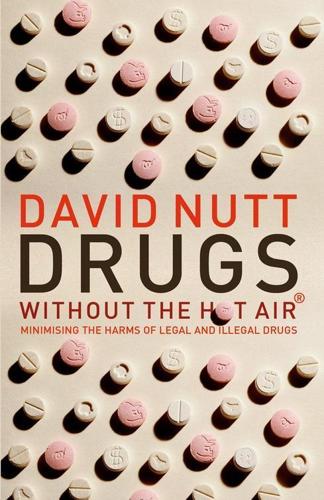
Drugs Without the Hot Air
by
David Nutt
Published 30 May 2012
Since hemp paper posed direct competition to wood pulp paper, he had an economic stake in limiting hemp production, and recognised that if controls were placed on cannabis because of its psychoactive effects, it would become more difficult to grow the plant for other purposes. Hearst’s media empire spread stories about violent attacks on white women by Mexican immigrants intoxicated with marijuana, creating a sense of moral panic and support for controls on the drug, and therefore on the plant as well. The three lives of cannabis now became dependent on the fate of its use as a recreational drug. Although ordinary Americans were familiar with hemp, many didn’t realise that it had anything to do with marijuana, just as many doctors didn’t realise it was the same plant as cannabis indica, which they considered a valuable medicine.
…
However, this was the decade in which recreational use became common, with some people buying it on the black market, and others 22diverting prescriptions from their doctors. Although cannabis users and medical professionals had become more organised by this point, and were trying to get the drug decriminalised for all uses, some of the moral panic from the USA had been imported, and there was a lot of political pressure to control the drug still further. After the 1971 UN Convention on Psychotropic Substances, the British government decided 23not to renew the medical licence on cannabis, in part because of concerns about the drug being diverted from medical sources.

The Sense of Style: The Thinking Person's Guide to Writing in the 21st Century
by
Steven Pinker
Published 1 Jan 2014
.—1785 Complaints about the decline of language go at least as far back as the invention of the printing press. Soon after William Caxton set up the first one in England in 1478, he lamented, “And certaynly our langage now vsed veryeth ferre from what whiche was vsed and spoken when I was borne.” Indeed, moral panic about the decline of writing may be as old as writing itself: Non Sequitur © 2011 Wiley Ink, Inc. Dist. by Universal Uclick. Reprinted with permission. All rights reserved. The cartoon is not much of an exaggeration. According to the English scholar Richard Lloyd-Jones, some of the clay tablets deciphered from ancient Sumerian include complaints about the deteriorating writing skills of the young.6 My discomfort with the classic style manuals has convinced me that we need a writing guide for the twenty-first century.
…
Simpler: The future of government. New York: Simon & Schuster. Sword, H. 2012. Stylish academic writing. Cambridge, Mass.: Harvard University Press. Thomas, F.-N., and Turner, M. 1994. Clear and simple as the truth: Writing classic prose. Princeton: Princeton University Press. Thurlow, C. 2006. From statistical panic to moral panic: The metadiscursive construction and popular exaggeration of new media language in the print media. Journal of Computer-Mediated Communication, 11. Truss, L. 2003. Eats, shoots & leaves: The zero tolerance approach to punctuation. London: Profile Books. Van Orden, G. C., Johnston, J. C., & Hale, B.

The Data Detective: Ten Easy Rules to Make Sense of Statistics
by
Tim Harford
Published 2 Feb 2021
And the way to deal with them is to flood the zone with shit.”15 The history of another term associated with Donald Trump—“fake news”—is instructive here. Originally, it described a very specific phenomenon: websites publishing false articles in the hope of getting clicks from social media and thus advertising dollars. The iconic example was the claim that the pope endorsed Trump’s presidential bid. When Trump won, for a while there was a moral panic, serious commentators worried that gullible voters had been lured into voting for Trump because they believed these outrageous lies. That panic was a mistake. Academic studies found that fake news was never widespread or influential; most of it was consumed by a small number of highly conservative, elderly voters who were likely Trump supporters all along.
…
There are encouraging signs that more researchers are welcoming replication efforts. In 2010, for instance, political scientists Brendan Nyhan and Jason Reifler published a study on what became known as “the backfire effect”—in brief, that people were more likely to believe a false claim if they’d been shown a fact-check that debunked the claim. This caused a moral panic among some journalists, particularly after the rise of Donald Trump. Fact-checking only makes matters worse! It hit that perfect counterintuitive sweet spot. But Nyhan and Reifler encouraged further studies, and those studies suggest that the backfire effect is unusual and fact-checking does help.

The Glass Half-Empty: Debunking the Myth of Progress in the Twenty-First Century
by
Rodrigo Aguilera
Published 10 Mar 2020
Pinker is frequently linked to the IDW, although not quite in the same orbit as some of the aforementioned personalities; a New York Times piece on this “amorphous network” by journalist Bari Weiss (herself largely sympathetic towards it) had him with a “tony affiliation” rather than full membership.15 Pinker has frequently appeared alongside IDW pundits in public conversations,16 debated on the side of key IDW talking points such as biological gender differences,17 and has made frequent comments on the impact of political correctness on the rise of far-right populism, notably at Davos in 2018 where he echoed one of the core talking points of the IDW: that political correctness is giving the far right “the sense that there were truths the academic establishment could not face up to”.18 Further endearing him to this crowd, he has also argued that many of the issues that progressives advocate most passionately for are little more than “moral panics”. One of these issues is campus rape, which he dismisses with what is now the standard template of New Optimist logic — supply facts which show that a given problem is less bad than in the past, and ask people to stop complaining: The moral panic du jour is campus rape: the extraordinary belief that America’s elite universities, the institutions into which the children of the upper middle class clamber to be admitted, have rates of rape that are higher than those of the world’s most savage war zones even as quantitative studies have shown university women are less likely to be raped than their non-university age-mates, and that rates of rape overall have been in decline for decades.19 Pinker is self-conscious of his provocations, making efforts to cover his tracks by insisting that it’s the hysteria over campus rape that is the problem, not rape itself.

You've Been Played: How Corporations, Governments, and Schools Use Games to Control Us All
by
Adrian Hon
Published 14 Sep 2022
The suspicion of novel forms of entertainment created by people outside of the establishment and eagerly consumed by the young isn’t new—novels, movies, TV, jazz, and rock music were all feared in their early days—but it manifests differently each time. Many believed games like Mortal Kombat, Doom, and Grand Theft Auto harmed the moral character of children and incited them to violence, echoing the moral panic surrounding Dungeons & Dragons in the 1980s. Those fears did little to slow the rise of video games as an industry and a cultural force. Today, we’re constantly reminded video games generate more revenue than movies and, as of 2019, were second only to TV and video in their command of children and teens’ attention.17 Every month brings a new gaming sensation, from Minecraft to Fortnite to Among Us to Roblox; every year brings a brand-new gaming technology, like Twitch streaming, Discord chatting, location-based gaming, and virtual reality.
…
It would be sensible if we were all a little more skeptical of video games studies regardless of their findings—especially given the inherent limitations I described earlier. Video games are enormously varied in design and genre, far more than can be captured in blanket statements, and they operate in different ways on different people. To talk about them in purely negative terms on the basis of moral panic and ignorance is wrong. We should talk about the positive aspects of many games, such as providing escapism, a sense of wonder and discovery, and stress relief and promoting kindness and pro-social behaviour through well-designed multiplayer experiences, acceptance of diversity, and more—but to talk about them wholly positively, handwaving any negative effects as essentially unavoidable or insignificant, is also wrong.
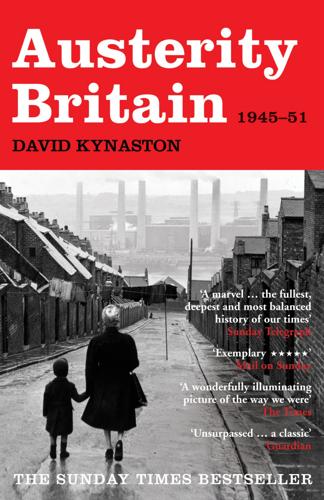
Austerity Britain: 1945-51
by
David Kynaston
Published 12 May 2008
The figures are patchy, but it seems that an appreciably higher proportion than usual of these burglaries were committed by juveniles – a fact that subsequent police reports not implausibly attributed to the way in which ‘during the war years children have lacked fatherly control and restraint and in a large number of families mothers have obviously tended to allow too much freedom’.16What was indisputable was that a moral panic was brewing up nicely. Reassuringly, during the spring and disappointingly poor summer, the old sporting rituals reappeared, apparently unscathed: not only the Cup Final but the Boat Race (‘the Prime Minister was there, the swans were out, young men back from the services wore beards, folk picnicked on roofs, ate ice-cream, let off crackers,’ noted Hodson), the Grand National (Captain Petre, on leave from the Scots Guards, winning on Lovely Cottage, very much the housewives’ choice) and Wimbledon (the British players routed by the French, American and Australian ones).
…
And Gorer, who could speak with some authority, declared his belief that such suspicions ‘would be much more widely voiced in most other societies’.9. It was, all in all, a graphically consensual picture that this aspect of his survey evoked. The Blue Lamp was equally topical in terms of the prevailing moral panic about youth into which it so deftly tapped. ‘Rarely a day passes now without some act of criminal violence being committed,’ noted Anthony Heap in March 1950: ‘Gangs of young teen-age thugs, emulating the American gangster “heroes” they see regularly on the screen, go around “coshing”, robbing, and beating-up people with impunity.
…
Henceforth, though, each episode was lumbered with a gratuitous tailpiece, in which a voiceover solemnly mulled over the moral issues that had been raised – a device that perhaps hastened the programme’s end in 1951. Juvenile delinquency, although undoubtedly a real phenomenon, was almost certainly not as widespread as the moral panic imagined. One suggestive fact is that out of 1,315 working-class Glasgow boys who left school in January 1947, just over 12 per cent had been or would be convicted in the courts at least once between their eighth and eighteenth birthdays. Analysing the lives and outcomes of these boys over the three years after they left school, Thomas Ferguson (Professor of Public Health at Glasgow University) identified the main factors behind juvenile crime: low academic ability, employment problems, bad housing and criminal habits or tendencies in the family background.

Kill All Normies: Online Culture Wars From 4Chan and Tumblr to Trump and the Alt-Right
by
Angela Nagle
Published 6 Jun 2017
Early on, the reaction of mainstream conservative media to Internet trolls from the chan world was an unambiguously moral and condemnatory one, and the standard progressive academic reflex (implicitly pro-counterculture, implicitly pro-transgression) was less critical, verging on celebratory. The Fox News depiction of 4chan as an ‘Internet hate machine’ and trolls more broadly as an anti-social, foul-mouthed group of misanthropes, still living with their mothers, etc., simultaneously mocked and heightened the moral panic about the anarchy of the online world. Other mainstream news media focused on cyberbullying, DDoS attacks and the trolling of Facebook memorial pages. Author Whitney Phillips was more ambivalent, characterizing the cultural politics of trolling in more generous terms than the mainstream press, portioning some of the blame for their extreme cruelty to Facebook policies and the ‘encoded solipsism’ of the social network itself.
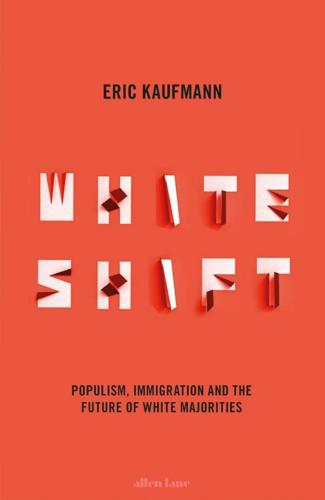
Whiteshift: Populism, Immigration and the Future of White Majorities
by
Eric Kaufmann
Published 24 Oct 2018
At times, these emotional mechanisms set off a spiral in which fear of heretics or the desire to avoid being accused leads to further accusations, which increases fear, multiplying the number of accusations, which results in a witch-hunt. The frenzy also serves the function of providing an internal scapegoat to unify a group against. The Inquisition, beginning in tenth-century Europe, is the most famous example of this dynamic, torturing suspected heretics and setting off a spate of moral panics. ‘Crimes’ committed by deviants are either evidence-free or grossly exaggerated.6 The Terror following the French Revolution, the Stalinist Show Trials of the 1930s, McCarthyism in the 1950s and Mao’s Cultural Revolution of the 1960s show how secular versions of the process operate. Splits within challenger movements such as the 1970s British left (satirized by Monty Python in the ‘People’s Front of Judea’ skit in Life of Brian) or Irish republicanism (I once visited an ‘Official’ IRA pub, commemorating some of those killed by the ‘Provisional’ IRA) may lead to similar purges or assassinations.
…
Ritualistic aspects include shaming those who violate taboos around immigration or multiculturalism while applauding people who perform ‘virtue-signalling’ affirmations of sacred anti-racist values. This signalling-approval dynamic is identical to the ‘Amen’ which a fundamentalist preacher’s flock chants after the pastor divines signs of Satan’s or God’s presence in innocuous events. Left unopposed, the ecstasy can spiral out of control, leading to moral panics of the kind seen at Evergreen State. CONFLICT OVER THE MEANING OF RACISM While positive liberals seek to expand the scope of the anti-racism taboo, negative liberals defend it only for a narrower range of infractions. For instance, restricting the right of a Muslim woman to wear a burqa runs counter to procedural liberalism.
…
That is the situation we are currently in. A second option is to have a cultural points system of immigration along the lines noted above, but to live and let live once groups are in a country. Growth is contained by the selection process, which removes the imperative for illiberal integration policies and deflates moral panics. If a Haredi Jew or Salafi Muslim wants to live in a segregated community in Britain, only interacting with their own community, I don’t mind. But this is true only because such groups are small. I would rather have a tolerant society, with a small share of illiberal minorities, than a situation like Israel where illiberal minorities are large, growing and beginning to set the tone.
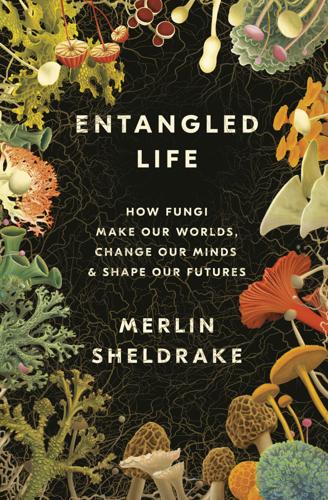
Entangled Life: How Fungi Make Our Worlds, Change Our Minds & Shape Our Futures
by
Merlin Sheldrake
Published 11 May 2020
Come to think of it, how had I ended up here? A fungus had evolved a chemical that had been used to make a drug. Quite by accident, this drug had been discovered to alter human experience. For seven decades or so, LSD’s peculiar effects on our minds had generated astonishment, confusion, evangelical zeal, moral panic, and everything in between. As it filtered through the twentieth century, it had left an indelible cultural residue that we still struggle to make sense of. I was lying in this hospital room as part of a clinical trial because its effects remained as bewildering as they had always been. No wonder I was baffled.
…
Mycophobic cultures were descendants of those who had considered their power diabolical. Mycophilic attitudes might lead Yamaguchi Sodo to write poems in praise of matsutake, or urge Terence McKenna to proselytize about the benefits of taking large doses of psilocybin mushrooms. Mycophobic attitudes might fuel a moral panic that leads to their illegalization, or prompt Albertus Magnus and John Gerard to issue stark warnings about the dangers of these “new fangled meates.” Both positions recognize the power of mushrooms to affect people’s lives. Both make sense of this power in different ways. We shoehorn organisms into questionable categories all the time.

The Coddling of the American Mind: How Good Intentions and Bad Ideas Are Setting Up a Generation for Failure
by
Greg Lukianoff
and
Jonathan Haidt
Published 14 Jun 2018
We examine the “shout-downs,” intimidation, and occasional violence that are making it more difficult for universities to fulfill their core missions of education and research. We explore the newly popular idea that speech is violence, and we show why thinking this way is bad for students’ mental health. We explore the sociology of witch hunts and moral panics, including the conditions that can cause a college to descend into chaos. In Part III, we try to solve the mystery. Why did things change so rapidly on many campuses between 2013 and 2017? We identify six explanatory threads: the rising political polarization and cross-party animosity of U.S. politics, which has led to rising hate crimes and harassment on campus; rising levels of teen anxiety and depression, which have made many students more desirous of protection and more receptive to the Great Untruths; changes in parenting practices, which have amplified children’s fears even as childhood becomes increasingly safe; the loss of free play and unsupervised risk-taking, both of which kids need to become self-governing adults; the growth of campus bureaucracy and expansion of its protective mission; and an increasing passion for justice, combined with changing ideas about what justice requires.
…
In a recent review of research on the effects of social media, social psychologists Jenna Clark, Sara Algoe, and Melanie Green offer this principle: “Social network sites benefit their users when they are used to make meaningful social connections and harm their users through pitfalls such as isolation and social comparison when they are not.”45 So we don’t want to create a moral panic and frighten parents into banning all devices until their kids turn twenty-one. These are complicated issues, and much more research is needed. In the meantime, as we’ll say in chapter 12, there is enough evidence to support placing time limits on device use (perhaps two hours a day for adolescents, less for younger kids) while limiting or prohibiting the use of platforms that amplify social comparison rather than social connection.

Stolen Focus: Why You Can't Pay Attention--And How to Think Deeply Again
by
Johann Hari
Published 25 Jan 2022
This suggests that the experience of stories really does expand their empathy. If we have reasons to believe that reading fiction boosts our empathy, do we know what the forms that are largely replacing it—like social media—are doing to us? Raymond said it’s easy to be snobbish about social media and to fall into a moral panic, and he finds that way of thinking silly. There’s a lot that is good about social media, he stressed. The effects he is describing aren’t to do primarily with the printed page, he said—they are to do with being immersed in a complex narrative that simulates the social world. His studies have found that long TV series are just as effective, he said.
…
” * * * I found so much of what Aza and Tristan had taught me persuasive—but I was wary about their argument that we need to use the law to stop these companies from continuing as they are. I wondered if they were overstating the problem. When I spoke with Nir Eyal, he said: “Every generation has these moral panics, where we only want to look at the negative sides” of an issue. He told me, “Tristan is reading, literally verbatim, from the 1950s about the comic-book debate,” when many people believed that children were being made violent by a new wave of gory comics. In the 1950s, “people like Tristan went to the Senate and told the senators that comic books are turning children into addicted, hijacked [zombies]—literally, it’s the same stuff….
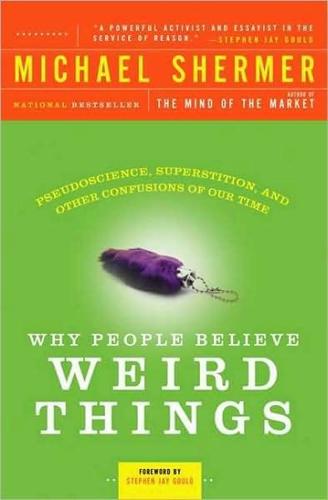
Why People Believe Weird Things: Pseudoscience, Superstition, and Other Confusions of Our Time
by
Michael Shermer
Published 1 Jan 1997
But more than this, the book deals with controversies not necessarily on the margins of society which may have pernicious social consequences: creation-science and biblical literalism, Holocaust denial and freedom of speech, race and IQ, political extremism and the radical right, modern witch crazes prompted by moral panics and mass hysterias, including the recovered memory movement, Satanic ritual abuse, and facilitated communication. Here the difference in thinking makes all the difference. But more than this—much more—the book is a celebration of the scientific spirit and of the joy inherent in exploring the world's great mysteries even when final answers are not forthcoming.
…
Thousands of Satanic cults were believed to be operating in secrecy throughout America, sacrificing and mutilating animals, sexually abusing children, and practicing Satanic rituals. In The Satanism Scare, James Richardson, Joel Best, and David Bromley argue persuasively that public discourse about sexual abuse, Satanism, serial murders, or child pornography is a barometer of larger social fears and anxieties. The Satanic panic was an instance of moral panic, where "a condition, episode, person or group of persons emerges to become defined as a threat to societal values and interests; its nature is presented in a stylized and stereotypical fashion by the mass media; the moral barricades are manned by editors, bishops, politicians and other right-thinking people; socially accredited experts pronounce their diagnoses and solutions; ways of coping are evolved or resorted to; the condition then disappears, submerges or deteriorates" (1991, p. 23).

On the Move: Mobility in the Modern Western World
by
Timothy Cresswell
Published 21 May 2006
We do not have to confine ourselves to dictionary definitions to see the fractured ways in which mobility has been understood. More generally, modernity has been marked by time-space compression and staggering developments in communication and transportation. At the same time, it has seen the rise of moral panics ranging from the refugee to the global RT52565_C001.indd 20 4/13/06 7:21:46 AM The Production of Mobilities • 21 terrorist. The celebrated technologies of mobility simultaneously open up the possibility of an increasingly transgressive world marked by people out of place at all scales. This is the tension that runs through the chapters in this book.
…
They left Spur on New Year’s Day in an old jalopy and reentered California on January 3, reaching Marysville on January 5. Duncan remained unemployed for ten days before getting relief from the Farm Security Administration. The movements of Edwards and Duncan were far from exceptional. Migration into California from Texas, Arkansas, Oklahoma, and other states to the east had been the subject of varying degrees of moral panic since the late 1920s. Migrants, known as Okies and Arkies, had moved to California in order to get promised work in the new agribusiness centers of the California valleys following the dust storms of the Great Plains. By the time Duncan entered California, migration had mostly switched to people looking for work in the defense industry.

Ten Steps to Nanette: A Memoir Situation
by
Hannah Gadsby
Published 15 Mar 2022
I was no longer upset; if anything, I was relieved to know that I was capable of feeling. STOP! ELECTION TIME! As gay law reform inched ever closer in Tasmania, larger forces were assembling through national conservative coalitions that were adopting a U.S. faith-based style of campaign that attempted to galvanize a moral panic about the safety of children and the degradation of the so-called “normal” family. It wasn’t enough to meaningfully slow the momentum of the decriminalisation movement, but it did provide an alarming glimpse of the tone to come decades later in the marriage equality debate. Before the upcoming election of 1996, the Tasmanian premier Ray Groom vowed that he would not govern without his party holding the majority in Parliament.
…
I have always been so thankful to hear your voices rise above the Parliamentary fray on most matters, but especially on those that cut closer to my identity bone. And, finally, a little salute to Panti Bliss. I saw what you did and I took courage from it. But ultimately, just a blanket thanks to everyone who fights for inclusion in the face of any hateful moral panic. And now for the penultimate thanks, my extraordinary spouse lady, Jenney Shamash. THANK YOU! Not only did you usher this book over the line—handling that big cluster of technical tasks that would have been impossible for me to get through on my own—but you have helped me navigate my very frightening post-Nanette world.

Adam Smith: Father of Economics
by
Jesse Norman
Published 30 Jun 2018
But the early 1790s were hardly a suitable time for balanced evaluation. There had been great excitement among British radicals, Whigs and intellectuals after the fall of the Bastille on 14 July 1789, which many saw as the dawn of a new age of enlightened government in France. But this had long been superseded by events. By early 1793 Britain was in the grip of a moral panic about possible sedition and ‘the French treason’: not merely the replacement of one ruler by another—the good old ‘English treason’—but the overthrow of monarchy itself. These fears were only magnified by the execution of Louis XVI at the guillotine on 21 January of that year. In this context it was easy to misunderstand Smith, or to co-opt him to a specific cause, in a way all too familiar today.
…
Violence had come with similar speed to the polite professional classes of Edinburgh from the Jacobite Rebellion of 1745: as Smith put it, ‘four or five thousand naked unarmed Highlanders took possession of the improved parts of this country without any opposition from the unwarlike inhabitants.’ But that was from without: Toulouse showed how swiftly popular anger, aroused by heavy taxes and stoked by religious panic, could boil over into bloodshed from within. Finally, it was evident at the time that a key cause of Calas’s incrimination, torture and death was a moral panic driven on by Catholic fear of his outsider status as a Huguenot, a panic which the legal institutions of Toulouse had not merely failed to contain under the rule of law, but actively abetted. Smith had written in his final additions to The Theory of Moral Sentiments in 1789 that ‘Of all the corrupters of moral sentiments, therefore, faction and fanaticism have always been by far the greatest’: the Calas case was a perfect case study of that faction and fanaticism in action.

Doppelganger: A Trip Into the Mirror World
by
Naomi Klein
Published 11 Sep 2023
One year after the announcement about unmarked school burial grounds in Kamloops, the New York Post ran a piece quoting an influential conservative ideologue and a longtime opponent of Indigenous rights, Tom Flanagan, who called the revelation of the graves “the biggest fake news story in Canadian history” and a case of “moral panic.” It seems that to many people, a truthful telling of history feels like treachery—and must be stamped out. But if those truths are stuffed back away, they will keep haunting us and keep reemerging in the Mirror World in distorted, twisted form. On May 14, 2022, an eighteen-year-old white supremacist obsessed with the Great Replacement theory and low birth rates among whites drove to a Tops supermarket in Buffalo, New York, with the aim of killing as many Black people as possible.
…
“does something that’s needed”: “US Abortion: Best Selling Author Dr Naomi Wolf Discusses Leaked US Supreme Court Documents,” GB News channel on YouTube, May 3, 2022, at 4:14–4:27. “Gosh darn I am TIRED”: Naomi Wolf @DrNaomiRWolf, Gettr post, May 13, 2022. “an historic day”: Bannon, “Parents Are Still Taking to the Streets,” at 24:58. Wolf had strongly pushed back: Rachel Savage, “INTERVIEW—U.S. Author Naomi Wolf Condemns UK’s ‘Moral Panic’ on Trans Issues,” Reuters, November 27, 2020. “huge victory”: Bannon, “Parents Are Still Taking to the Streets,” at 20:50–24:58. “You did so much”: Bannon, “Parents Are Still Taking to the Streets,” at 20:50. “a full-throated apology”: Naomi Wolf, “Dear Conservatives, I Apologize,” Outspoken with Dr Naomi Wolf, Substack, March 9, 2023.
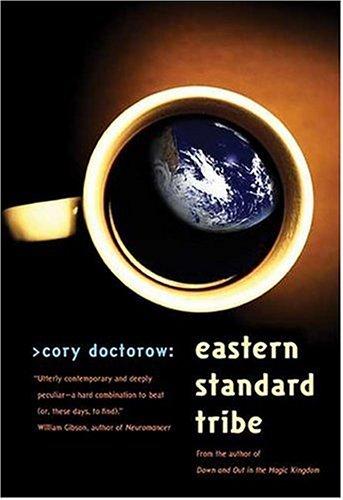
Eastern standard tribe
by
Cory Doctorow
Published 17 Feb 2004
Once that happens, maybe I'll be able to formulate an hypothesis and try an experiment or two and maybe -- just maybe -- I'll get to the bottom of book-in-2004 and beat the competition to making it work, and maybe I'll go home with all (or most) of the marbles. It's a long shot, but I'm a pretty sharp guy, and I know as much about this stuff as anyone out there. More to the point, trying stuff and doing research yields a non-zero chance of success. The alternatives -- sitting pat, or worse, getting into a moral panic about "piracy" and accusing the readers who are blazing new trail of "the moral equivalent of shoplifting" -- have a zero percent chance of success. Most artists never "succeed" in the sense of attaining fame and modest fortune. A career in the arts is a risky long-shot kind of business. I'm doing what I can to sweeten my odds.
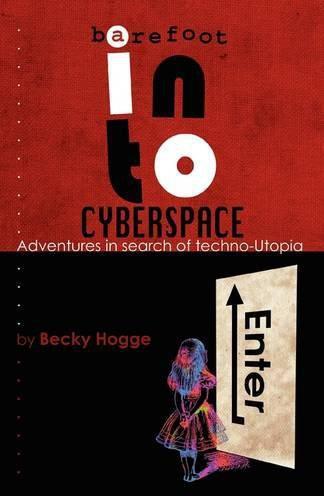
Barefoot Into Cyberspace: Adventures in Search of Techno-Utopia
by
Becky Hogge
,
Damien Morris
and
Christopher Scally
Published 26 Jul 2011
And it was for a while but then it tapered off pretty badly. It was nowhere near as radical as what computers have done. So I just, you know, shifted my allegiance in a sense from a semi-failed technology to a highly successful technology.” Despite the war on drugs, despite the constantly reconstituting government drug advisory panels and moral panics over designer drugs with implausible names, these days drugs like acid, ecstasy, dope and speed are classified as “recreational”, with all the easy hedonism that nomenclature implies. So it’s important to remember that psychedelics were once invested with the hopes of a generation as a serious, mind-expanding, “technology”.

The New Class War: Saving Democracy From the Metropolitan Elite
by
Michael Lind
Published 20 Feb 2020
Police and intelligence agencies in the US and Europe should do their best to identify genuine potential domestic and foreign terrorists and prevent them from doing harm. Liberal democracy in the West today is not endangered by Russian machinations or resurgent fascism. But liberalism and democracy alike are endangered when irrational moral panics like today’s Russia Scare and Brown Scare in the West lead hysterical elites to redefine “extremism” or “fascism” or “white nationalism” to include ordinary populists, conservatives, libertarians, and heterodox leftists. What the historian Louis Hartz in The Liberal Tradition in America wrote of McCarthyite conservatives in the 1950s who feared that many of their fellow citizens were Russian dupes or dangerous communists who needed to be censored and blacklisted applies with equal force to today’s paranoid establishmentarians who fear that many of their fellow citizens are Russian dupes or dangerous fascists: “What must be accounted one of the tamest, mildest and most unimaginative majorities in modern political history has been bound down by a set of restrictions that betray fanatical terror.”50 My purpose is not to defend populist demagogy, which can be harmful and destructive without being totalitarian or traitorous.

Data and Goliath: The Hidden Battles to Collect Your Data and Control Your World
by
Bruce Schneier
Published 2 Mar 2015
Ruby (2012), Society, State, and Fear: Managing National Security at the Boundary between Complacency and Panic, University of Chicago Press, http://books.google.com/books? id=UPILnwEACAAJ. If strong enough, it trumps all: Dawn Rothe and Stephen L. Muzzatti (Nov 2004), “Enemies everywhere: Terrorism, moral panic, and U.S. civil society,” Critical Criminology 12, http://www.researchgate.net/publication/227209259_Enemies_Everywhere_Terrorism_Moral_Panic_and_US_Civil_Society/file/32bfe50d3c7fe0d03b.pdf. David Rothkopf (6 Aug 2013), “The real risks,” Foreign Policy, http://www.foreignpolicy.com/articles/2013/08/06/the_real_risks_war_on_terror. they believe they have to do: It’s CYA security.

Convergence Culture: Where Old and New Media Collide
by
Henry Jenkins
Published 31 Jul 2006
Right now, convergence culture is throwing media into flux, expanding the opportunities for grassroots groups to speak back to the mass media. Put all of our efforts into battling the conglomerates and this w i n d o w of opportunity w i l l have passed. That is w h y it is so important to fight against the corporate copyright regime, to argue against censorship and moral panic that w o u l d pathologize these emerging forms of participation, to publicize the best practices of these online communities, to expand access and participation to groups that are otherwise being left behind, and to promote forms of media literacy education that help all children to develop the skills needed to become full participants i n their culture.
…
S., 202 licensing, 105 limited good, 256 Lionhead, 154 literacy, 170-171,177, 198, 207, 258 localization, 3 London Independent, 104 L o n g Tail, The, 252 LoPorto, Garrett, 206, 207 L o r d of the Rings (franchise), 107, 123, 200, 219 Lost, 253 Lost in Translation, 200 lovemarks, 20, 68-70, 91-92,169, 191 loyals, 63, 74, 76, 78, 80-81, 90 LucasArts, 21,149 Lucasfilm, 106,143,150-154 Lucas, George, 115,139-140,144,148, 153, 155,187 Lucas Online, 152 L u d l o w , Peter, 229-231 L u h r m a n n , Baz, 109,156 L y n c h , D a v i d , 32, 34 Machinema, 149,152-154 Machinema films: Anna,153; Halo Boys,153; My Trip to Liberty City, 153; Ozymandias, 153 M a d i s o n Avenue, 63 M a d i s o n + Vine Conference, 68-69 Mad Magazine, 221 M a e d a , M a h i r o , 116-117,119 Maines, Natalie, 223 Majestic, 97,123 Major Bowles' Original Amateur Hour, 78 Making of Citizens, The, 227 M a l l of The Sims, The, 166-167 M a n d e l , Jon, 60 M & M candies, 70 manga, 110 Mangaverse, 110,112 manipulation, 259 M a r v e l Comics, 110-111 Massachusetts Institute of Technology, 12,15, 68, 80,151, 244 mass culture, 135-136 mastery, 105 Mather, E v a n , 140-141,147-148 Matrix, The, 19-21, 93-130,153,176, 200, 238 Skenovâno pro studijni ücely 301 302 Index Matrix, The (actors): K e a n u Reeves, 95,100; Jada Pinkett Smith, 108; H u g o Weaving, 100 Matrix, The (characters/places/ things): Agent Smith, 100,122; B116ER, 118; Cypher, 99,122; Ghost, 124; Jue, 102; The K i d , 102-103; Locke, 124; Merovingians, 99; M o r p h e u s , 99, 103,110,113,120, 122,124-125; Nebuchadnezzar, 98, 102; N e o , 94, 99,102-103,113,118, 122; N i o b e , 103,108,124-125; The Oracle, 120, 200; Osiris, 103; Persephone, 99,120; Trinity, 99,103, 110, 113,121-122; Z i o n , 94,102-103, 110,112,118,121,124 Matrix, The (franchise): The Animatrix, 101,110,112-113,116-117; "Bits and Pieces of Information," 118; "Déjà V u / ' l l l ; Enter the Matrix, 99, 101-102,107-108,124-125; Final Flight of the Osiris, 102,113; The Kid's Story, 102; " L e t It A l l Fall D o w n , " 111; The Matrix, 93-130, 153,176, 200, 238; The Matrix Online, 125; The Matrix Reloaded, 94, 99-100,102-103,121; The Matrix Revolutions, 94-95,103,113,121, 125-126; "The M i l l e r ' s Tale," 111-112; Program, 109; The Second Renaissance, 116-117,118-119 Mattel, 70-71 Maxim, 71 M a x i s , 167 M a y n a r d , G h e n , 46 M c C a i n - F e i n g o l d A c t , 218 McCarty, A n d r e a , 151 McChesney, Robert, 247 McCleary, Brian, 70 M c C r a c k e n , Grant, 133-134,156-159, 167,197-198 M c D o n a l d , G o r d o n , 153 M c D o n a l d ' s (restaurant), 104 M c G o n i g a l , Jane, 125-127, 232-233 McGregor, E w a n , 156 M c K n i g h t , Laura, 228 M c L u h a n , Marshall, 10 M e a d , S y d , 115 media-actives, 244 media concentration, 2, 5,11,18-19, 68, 205, 243, 247-248 media i n transition, 11 media jammers, 52 media literacy, 22, 248, 259 "media m i x , " 110,129 media reform, 248 Meetup.com, 219-220 M e h r a , Salil K . , 160 Mertes, Cara, 241 Microsoft, 8,123,125 military, 74-75 Milkshakey, 36 Miller, M a r k C r i s p i n , 247 MIT. See Massachusetts Institute of Technology M I T A n i m e C l u b , 158 Mitsubishi, 69 M M O R P G , 159-162 mobile phones, 4-5, 9,14,17,110,134 m o d d e r s / m o d d i n g , 137,162-165 Moebius, 109 Mole, The, 47 monomyth, 120 Monty Python and the Holy Grail, 153 moral economy, 161, 255 moral panic, 248 M o r i m o t o , K o j i , 101 M o r r o w , Fiona, 104 Moulin Rouge!, 156 Moveon.org, 219-220, 223 Movies, The, 154 MP3,16 Mr. President (avatar), 228-230 M S N B C , 187 M T V , 78,148, 222-223 M T V Networks, 244 M T V 2,154 multiplatform entertainment, 106 M u n i z , Albert M . , Jr., 79 Murray, Bill, 200 Murray, Janet, 116,119 M u z y k a , Ray, 162 Skenováno pro studijní úcely Index M y r i c k , D a n , 102 mysteries (genre), 129,199 mythology, 121,153,156-157 Napster, 9,134,138 narrowcasting, 5, 211 N A S C A R , 71 National Research C o u n c i l , 74 Native Son, 118 N B C , 60, 72, 207, 211, 225 Neal, Connie, 199, 203 Negroponte, Nicholas, 5,10 Nelson, Diane, 186,187,190-191 N e u m a n , W.

Them And Us: Politics, Greed And Inequality - Why We Need A Fair Society
by
Will Hutton
Published 30 Sep 2010
Democracy and the public realms are too precious to diminish the politicians who make them work on a day-to-day basis. But democracy, the idea of politics and the public realm are all under siege from a constituency that purports to be their hand-maiden and fundamental ally – the free media. The fourth estate has always been powerful, populist and given to creating moral panics. Back in the 1920s, Britain’s right-leaning press – led by the Daily Mail, which first published it – latched on to the forged Zinoviev letter to undermine Labour Prime Minister Ramsay MacDonald, who was pursuing a pro-Russian foreign policy at the time. The press’s dire warnings of imminent, Russian-sponsored revolution in Britain guaranteed Stanley Baldwin’s victory in the 1924 general election.
…
The Daily Mail’s success, deplored as it may be by so many, is due to the fact that it has its finger on the pulse of these fears. Politics is thus conducted in a highly adversarial environment in which right and left are both pitching to the conflicted middle in order to secure a simple majority. Moreover, this environment is regularly shaken by moral panics inflamed by the way in which information is presented. Nor is Britain alone. The same phenomenon of centralised politics is observable in every Anglo-Saxon country where a majoritarian voting system interacts with a newly powerful media. Politicians respond by trying to present a coherent, marketable view of their party, with the leader of necessity becoming the focus.

The Pandemic Century: One Hundred Years of Panic, Hysteria, and Hubris
by
Mark Honigsbaum
Published 8 Apr 2019
As Laurie Garrett has argued, from the perspective of the Left, “events in Philadelphia fit neatly with the then vogue view that an unregulated chemical industry was raining toxic compounds upon the American people.” By contrast, the Right was more inclined to view the outbreak as an act of sabotage, or as the Philadelphia Veterans of Foreign Wars put it, “a sneak attack against the finest kind of Americans.” This sense of moral panic did not escape Bob Dylan, who incorporated some of the wilder speculation into a song, “Legionnaires’ Disease.” Written for his touring guitarist, Billy Cross, the song opened with the verse: “Some say it was radiation, some say there was acid on the microphone / Some say a combination that turned their hearts to stone.”
…
See also Legionnaires’ disease legionellosis, 190–91 Legionnaires’ disease, 10, 12, 145–73, 175–91, 196, 198, 233, 251, 257, 259, 362, 396n acquired immunity to, 186 age and, 185 climate and, 186 conspiracy theories about, 168–70, 191 environmental causes and factors and, 187 etiology of, 168 in Flint, Michigan, 190 gender and, 185 in hospitals, 185 human behavior and, 189 incidence in the United States, 185 medical technologies and, 185, 189 as “missed alarm,” 191 moral panic over, 169–70 onset of, 156 panic about, 187 the press and, 153, 155, 160, 187–88 puzzle solved by McDade, 178–81 second outbreak of, 175–91 technology and, 187 toxic metals theory and, 160–61, 168, 169, 170–71 transmission of, 183–85, 187, 189, 190–91 lentiviruses, 201, 202–3, 223, 363 Leong Hoe Nam, 256 Léopoldville (Kinshasa), Zaire, 199, 224, 227–30.
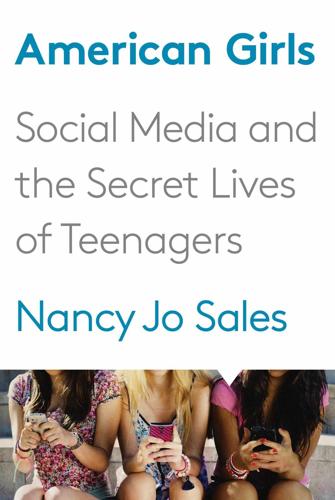
American Girls: Social Media and the Secret Lives of Teenagers
by
Nancy Jo Sales
Published 23 Feb 2016
In her book It’s Complicated: The Social Lives of Networked Teens, danah boyd (who uses no capital letters in her name), a principal researcher at Microsoft and visiting professor in the Interactive Telecommunications Program at New York University, likened the fear of online predators to the “moral panics” surrounding teens’ engagement with other “new genres of media” such as novels in the eighteenth century and comic books in the 1930s. “American society despises any situation that requires addressing teen sexuality,” wrote boyd, “let alone platforms that provide a conduit for teens to explore their desires.”
…
What’s being avoided are the hard questions about whether these behaviors are in fact healthy or abusive or even legal, from the perspective of the age of consent. And one reason for this may not in fact be “discomfort with teenage sexuality,” as boyd suggests, but the fear of seeming less than “sex-positive” or raising a moral panic. boyd claims a connection between anxiety over teens being sexual on social media and an uneasiness with teenage sexuality in general. But this is a type of analysis and even a moral judgment of its own, which also has a history, going back at least as far as the 1960s, when parents who didn’t “get” the new sexual mores of their hippie children were deemed “squares.”

Content: Selected Essays on Technology, Creativity, Copyright, and the Future of the Future
by
Cory Doctorow
Published 15 Sep 2008
I use a network that has no incremental cost for communication, and a device that lets me install any software without permission from anyone else. Right-living is the highly mutated, commodity-hardware- based, public and free Internet. I'm QWERTY-Amish, in other words. I'm the kind of perennial early adopter who would gladly volunteer to beta test a neural interface, but I find myself in a moral panic when confronted with the 12-button keypad on a cellie, even though that interface is one that has been greedily adopted by billions of people worldwide, from strap-hanging Japanese schoolgirls to Kenyan electoral scrutineers to Filipino guerrillas in the bush. The idea of paying for every message makes my hackles tumesce and evokes a reflexive moral conviction that text-messaging is inherently undemocratic, at least compared to free-as-air email.
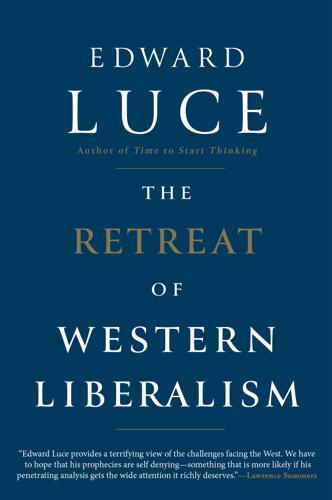
The Retreat of Western Liberalism
by
Edward Luce
Published 20 Apr 2017
Failure to diagnose the reasons for Mrs Clinton’s defeat will only make Trump’s re-election more likely. In a searing piece for the New York Times after the election, Mark Lilla, a professor at Columbia University, called for an end to ‘identity liberalism’. The American left had ‘slipped into a kind of moral panic about racial, gender and sexual identity that has distorted liberalism’s message,’ he wrote.27 Moreover, if the Democratic standard-bearer insisted on namechecking different groups at her rallies she had better mention everybody, otherwise those left out would feel resentful. Lilla also took issue with the liberal post-mortem on Mrs Clinton’s defeat that laid the blame on a racially charged ‘whitelash’ against multicultural America – a verdict that was at odds with the revealed motivations of many Trump voters.
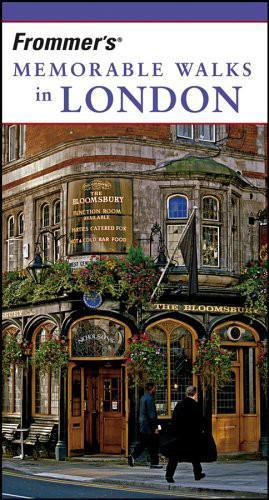
Frommer's Memorable Walks in London
by
Richard Jones
Published 2 Jan 1998
About 1 block down, pause outside: 27. 14 Well Walk, the home of Marie Carmichael Stopes (1880–1958) during her first and unhappy marriage to Canadian botanist R. R. Gates. A champion of women’s rights, Stopes was also an early pioneer of birth control. Her book Married Love, written after the annulment of her marriage on the grounds of nonconsummation, became a bestseller. Its appearance helped ease the national moral panic resulting from the high incidence of venereal disease among British soldiers returning from World War I. By advocating sexual enjoyment within marriage, the book was intended to encourage young British men to settle into moral, disease-free, and sexually satisfying unions, while encouraging women to see sex as enjoyable rather than as a duty.
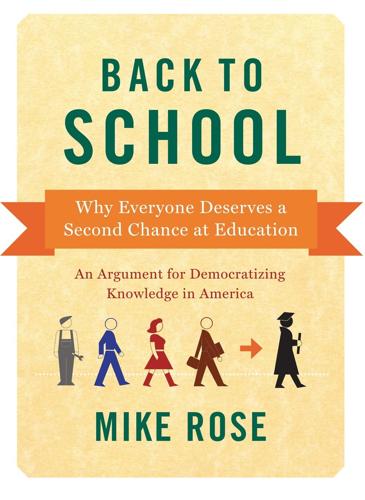
Back to School: Why Everyone Deserves a Second Chance at Education
by
Mike Rose
Published 17 Sep 2012
And, of course, there is not only a status hierarchy among disciplines but among postsecondary institutions as well, from elite research universities to the central-city community college. Though colleges and universities have had some type of remedial or preparatory course or program in their curriculum since the mid-nineteenth century, they have always been a source of vexation—and, at times, something akin to moral panic. We are seeing attempts in about twenty states now to reduce or remove remedial courses from the college and university, typically directing students to community colleges. Conversely, the open-access community college for much of its history has provided remedial or preparatory work as part of its mission, though the demand has increased as more people are attempting postsecondary education, and as state legislators and university administrators push remediation down the status ladder to the least resourced of our institutions of higher learning. 127 BAC K TO S C HO OL The people who teach remedial courses at the university or college level are almost always graduate students or adjunct instructors, and adjuncts are widely used at the community college level as well.
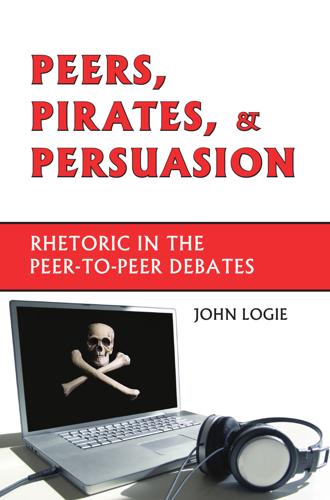
Peers, Pirates, and Persuasion: Rhetoric in the Peer-To-Peer Debates
by
John Logie
Published 29 Dec 2006
And in December of that year, according to a front-page story in the Washington Post, a panel of “industry and academic experts” warned against the threat posed by hackers, describing them, in usage that now seems almost quaint, as “high-tech terrorists” (Suplee and Richards). While Ross would criticize such reporting as exemplifying a “moral panic” that threatened the “technology conscious youth culture” he valued, the term hacker would never recover its original meaning. The term’s associations with trespass and criminality would, during the 1990s, become wholly entrenched. By the end of the decade, no thinking person who was not simultaneously announcing himself as committed to transgressing the boundaries established by a combination of corporate practice and convention would use “hacker” as a self-description.
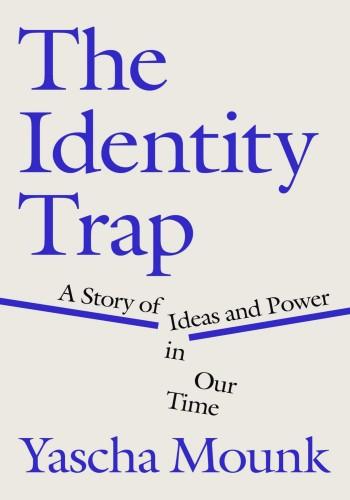
The Identity Trap: A Story of Ideas and Power in Our Time
by
Yascha Mounk
Published 26 Sep 2023
This pushback is already showing first signs of success. Over the past couple of years, many companies and nonprofit organizations have attracted public outrage for unfairly dismissing their employees or slandering their business partners; as a result, institutional leaders around the country are starting to recognize that giving in to moral panics on social media carries as much risk as refusing to do so. Meanwhile, the courts are playing an important role in rolling back some of the most blatant excesses of the identity synthesis, including mandatory trainings by public agencies that effectively compel state employees to pay lip service to this ideology.
…
GO TO NOTE REFERENCE IN TEXT reluctant to express: An article by Ryan Grim in The Intercept went viral because it featured so many quotations from leaders of progressive organizations who described the destructive effects of the identity synthesis on their organizations, giving voice to a diffuse feeling many had had for a long time. Ryan Grim, “Meltdowns Have Brought Progressive Advocacy Groups to a Standstill at a Critical Moment in World History,” Intercept, June 13, 2022, theintercept.com/2022/06/13/progressive-organizing-infighting-callout-culture/. See also chapter 7. GO TO NOTE REFERENCE IN TEXT moral panics on social media: Institutional leaders are also growing more cognizant of the risks of callout culture during the hiring process. One remarked, “I’m now at a point where the first thing I wonder about a job applicant is, ‘How likely is this person to blow up my organization from the inside?’ ” Grim, “Meltdowns.”

The Numbers Game: The Commonsense Guide to Understanding Numbers in the News,in Politics, and inLife
by
Michael Blastland
and
Andrew Dilnot
Published 26 Dec 2008
Visiting Finland, Christopher Pollitt of Erasmus University in the Netherlands was surprised to discover that official records showed a category of prisons where no one ever escaped, year after year. Was this the most exceptional and effective standard of prison security? “How on earth do you manage to have zero escapes every year?” he asked a Finnish civil servant. “Simple,” said the official, “these are open prisons.” Britain experienced a moral panic in early 2006 at the rate at which inmates were found to be strolling out of open prisons as if for a weekend ramble. By comparison, this seemed a truly astonishing performance. What was the Finnish secret? “Open prisons? You never have anyone escape from an open prison?” “Oh not at all! But because they are open prisons, we don’t call it escape, we classify it as absent without leave.”
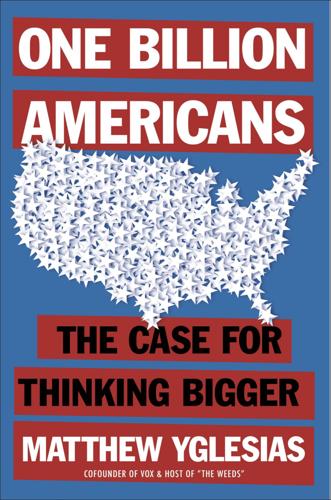
One Billion Americans: The Case for Thinking Bigger
by
Matthew Yglesias
Published 14 Sep 2020
A remarkable amount of advice is doled out by the media, the government, and quasi official organizations with little regard for the difficulty of complying or the often poor quality of the evidence. Chilling out The tendency toward excessive shaming begins immediately after birth because contemporary society is in the grips of a modest moral panic about breastfeeding. Breastfeeding is, obviously, a viable and appropriate means of feeding an infant. It’s an experience some mothers find rewarding or pleasurable, and under the right circumstances it can have a lower direct financial cost than buying formula. But for many mothers it’s stressful, painful, inconvenient, or otherwise difficult and only becomes more so as they attempt to rejoin adult society or even temporarily leave the newborn in the care of others.
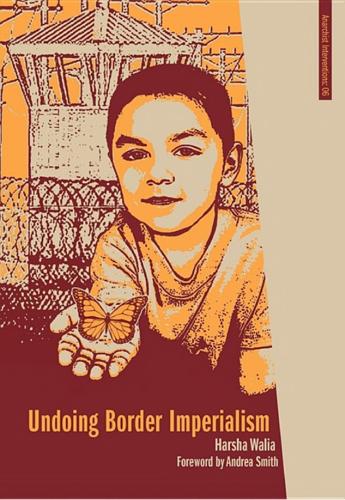
Undoing Border Imperialism
by
Harsha Walia
Published 12 Nov 2013
Migrants are not seen for their actual humanity but instead as a problem to be prevented, deterred, managed, and contained. They become stereotyped by politicians, media, and within popular consciousness as floods of people from “over there” who are “disease ridden,” “fraudulent,” or “security threats.” These narratives buttress moral panics about “keeping borders safe and secure” from poor and racialized migrants. Migrant detention regimes are a key component of Western state building and its constitutive assertion of border controls. According to research conducted by the Global Detention Project, “Migration-related detention is the practice of detaining—typically on administrative (as opposed to criminal) grounds—asylum seekers and irregular immigrants. . . .

McMindfulness: How Mindfulness Became the New Capitalist Spirituality
by
Ronald Purser
Published 8 Jul 2019
Can moments of mindfulness really mitigate the traumas of poverty, pending unemployment, a school-to-prison pipeline, racial profiling and police brutality, gang violence, and institutional racism? Is the problem just a matter of students being unable to “self-regulate” emotions? Framing it as such creates a moral panic, casting teachers of mindfulness as saviors. It’s sad that those who have so little are blamed for so much, and merely told to work on their “deficiencies.” Instead they could be taught about the underlying problems in society, and ways to address these as part of a broader civic mindfulness. Mindful school advocates present their curricula as being apolitical, non-ideological, and evidence-based, but such claims are illusory.

Nixonland: The Rise of a President and the Fracturing of America
by
Rick Perlstein
Published 1 Jan 2008
One of the president’s favorite congressmen, Jeffrey Cohelan, was almost knocked off in a primary challenge in the district straddling Oakland and Berkeley from New Leftist magazine editor Robert Scheer. Johnson’s poverty czar, Sargent Shriver, gave a speech to a conference of the Citizen’s Crusade Against Poverty and was jostled off the stage by radicals: “You’re lying!” they cried. “Stop listening to him!” Moral panics from the right, moral panics from the left; poor, dumpy Pat Brown pinioned helplessly in the middle. On primary day he couldn’t even get a majority, holding on to the nomination only because minor candidates diluted Yorty’s tally. Yorty received 38 percent of the vote practically without campaigning, overwhelmingly winning in blue-collar areas adjacent to black neighborhoods.
…
County Board of Supervisors voted “to uphold high moral standards” by censoring an exhibition by an artist named Ed Keinholz, who said he displayed his dioramas of consumer products and mannequins in sexual congress and babies without heads to comment on America’s “sick society.” In the Golden State, it was a season of moral panic; and as so often, California led a national trend. The head of the nation’s leading association of private schools released a statement worrying that “students have adopted ‘terrifying’ attitudes toward sex…for lack of a moral code.” But others looked upon the same developments and judged them symptoms of cultural health.
…
In the California Poll the top issues of public concern were now “crime, drugs, and juvenile delinquency.” Forty-five percent credited Reagan as the candidate who would do a better job on them. He used phrases like “basic freedom,” “basic principles,” “basic individual rights of all citizens.” He called “the one overriding issue of this campaign…the issue of simple morality.” In a season of moral panic, it made him the star. The leftists of the California Democratic Council, moralists in their own right, turned their back on Brown for his support of the administration on Vietnam. One of the president’s favorite congressmen, Jeffrey Cohelan, was almost knocked off in a primary challenge in the district straddling Oakland and Berkeley from New Leftist magazine editor Robert Scheer.

State of Emergency: The Way We Were
by
Dominic Sandbrook
Published 29 Sep 2010
And at a time when the economy was sliding into chaos, the government appeared powerless in the face of the unions and traditional expectations seemed to be undermined by feminism, permissiveness and social mobility, the press coverage of mugging – often described as a ‘disease’ or a ‘virus’ – quickly began to assume the proportions of a full-blown moral panic. By the late autumn of 1972, mugging was the word on everybody’s lips. Long articles explored ‘the making of a mugger’ or asked ‘why they go out mugging’, while editorials called for more police patrols, tougher prison sentences and what the Sunday Mirror melodramatically called an all-out ‘war’ on muggers.
…
It was no coincidence that the death of Arthur Hills, supposedly Britain’s first mugging, came just a week after Idi Amin had announced the expulsion of the Ugandan Asians and at a time when the papers were full of angry letters about the predicted ‘flood’ of penniless immigrants. If poor Mr Hills had died a few months earlier, his murder might well have been ignored. Coming when it did, it became a symbol of wider anxieties about crime and immigration. But as the Birmingham theorists saw it, the ‘moral panic’ about mugging had even deeper roots, stretching back to the aftermath of the Moors murders in 1965, when the newspapers had first taken aim at the so-called ‘permissive society’. This panic was under way, they argued, even ‘before there [were] any actual “muggings” to react to’, reflecting white middle-class unease at a time of social and economic change.
…
‘Trains, carrying rampaging young fans, would end their journeys with windows broken, upholstery smashed, lavatory fittings broken, the carriages running with beer and crunching underfoot with broken glass like gravel,’ wrote Arthur Hopcraft – a vision of Harold Macmillan’s Britain very different from the cosy caricatures becoming popular two decades later.31 On the left and in academic circles, a popular explanation was that football hooliganism was a moral panic fuelled by the press, who had ‘invented hooliganism as a “social problem” ’ by drawing attention to ‘relatively minor acts of rowdyism’. It is certainly true that from about 1967 onwards, the popular newspapers, fighting desperately for circulation in an increasingly competitive market, adopted a much more sensationalist attitude to football violence, with the Sun and Mirror leading the way in banner headlines and military metaphors.
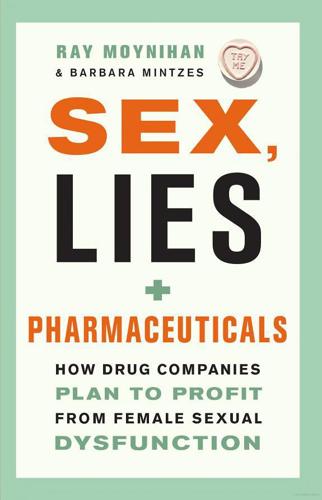
Sex, Lies, and Pharmaceuticals: How Drug Companies Plan to Profit From Female Sexual Dysfunction
by
Ray Moynihan
and
Barbara Mintzes
Published 1 Oct 2010
And with the popular Brazilian waxing exposing all, cosmetic surgeons are promoting a nip and tuck to tidy up the labia, while online companies offer a genital colorant that ‘restores the pink back to a woman’s genitals’.9 When they land, the seeds of the corporate-backed campaign to transform common sexual difficulties into medical conditions will fall on the fertile ground of considerable female insecurity. Yet backward-looking moral panic about a permissive society may not be a helpful response. Perhaps it would be better to confront the reality of women’s sexual dissatisfactions head on, tease out the cultural processes exacerbating their vulnerabilities, and identify the commercial forces seeking to exploit them. The dramatic story documented in Sex, Lies and Pharmaceuticals calls for a much greater scepticism towards simplistic claims that women’s sexual difficulties are somehow due to chemical deficits rather than a complicated set of causes, including the way we relate to each other, our cultures, and our individual and collective histories.
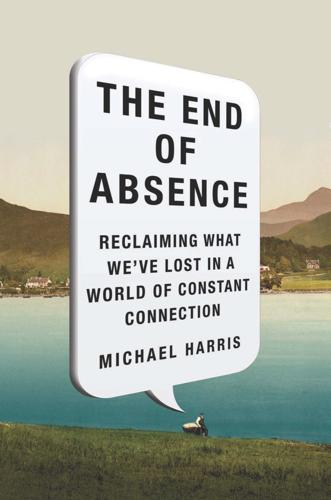
The End of Absence: Reclaiming What We've Lost in a World of Constant Connection
by
Michael Harris
Published 6 Aug 2014
It’s such a natural impulse, in fact, that those who question whether all technological developments will lead to brighter, happier futures are dismissed as Luddites. Interrogate the dominance of a mounting technopoly with anything more aggressive than cocktail conversation and you will swiftly be accused of “moral panic”—which is one of those tidy terms that carries around its own moral imperative. One must not panic. Technologies themselves, though, are amoral. They aren’t good or evil, only dangerous and beloved. They are a danger we’ve been in love with for millennia, and rarely do we remember that, for example, the goal of human relations may extend beyond efficient transmissions.
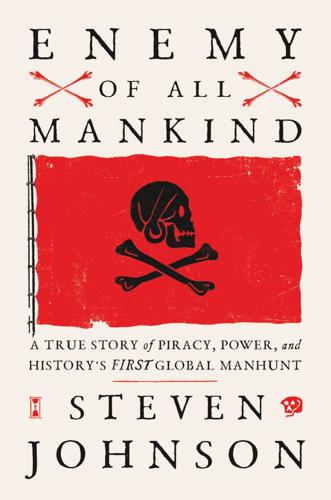
Enemy of All Mankind: A True Story of Piracy, Power, and History's First Global Manhunt
by
Steven Johnson
Published 11 May 2020
The shift from late feudalism to early agrarian capitalism, the great disruption that would fuel the growth of the metropolitan centers in the coming centuries, had disgorged a whole class of society—small, commons-based cottage laborers—and turned them into itinerant free agents. By the late 1500s, the explosion of vagabonds made them public enemy number one, triggering one of the first true moral panics of the post-Gutenberg era. Everywhere there were wanderers, whole families lost in the changing economic landscape. Serfs once grounded in a coherent, if oppressive, feudal system found themselves flotsam on the twisting stream of early capitalism. To everyone sitting on the banks above that stream, the change must have seemed something like the modern fantasies of zombie invasions: you wake up one day and realize that the streets are filled with people who not only lack homes, but also suffer from some other, more existential form of homelessness—not even knowing what kind of home they should be seeking.

The Behavioral Investor
by
Daniel Crosby
Published 15 Feb 2018
Salience is the psychological term for prominence, meaning that our attention can be hijacked by low-probability-high-scariness things like shark attacks while ignoring high-probability-low-scariness dangers like taking a selfie near a busy street (Yes, far more people have died in the last year from selfies than shark attacks.) It’s what led the New Englanders to ignore the unwinnable nature of the witch trials and ignited a moral panic spurred on by stories that were vivid, if nonsensical. It also leads us to rate the unfamiliar as more risky and show a preference for domestic stocks (home bias) and familiar names (mere exposure effect), regardless of their fundamental qualities. In a world in which attention is a valuable resource we must be vigilant against noise-peddlers of all sorts.
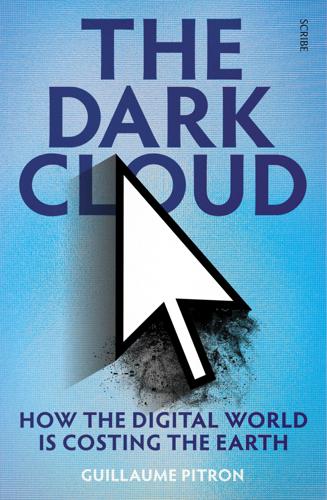
The Dark Cloud: How the Digital World Is Costing the Earth
by
Guillaume Pitron
Published 14 Jun 2023
And for good reason: ‘[S]ome activists were socialists who went on to become executives in big oil companies’, effectively betraying the very ideals they fought for, paving stones in hand, explained the expert, who concluded by saying that, fifty years later, ‘I feel like history is repeating itself.’ Can you prove him wrong? History has shown that we should distrust the fears sparked by new inventions. From newspapers, cinema, and paperbacks, to the telephone, ‘New forms of media have always caused moral panics’, Canadian psychologist Steven Pinker points out.23 In the fifteenth century, the printing press was seen as a ‘danger to the soul’, and in the twentieth century, the radio was disparaged as a threat to good morals and democracy. In the 1960s, it was argued that television would destroy our mental and physical wellbeing.24 Information and communication technologies attract similar criticism, along with the novel addition of causing harm to the environment.

The Spirit Level: Why Greater Equality Makes Societies Stronger
by
Richard Wilkinson
and
Kate Pickett
Published 1 Jan 2009
Thus, in certain countries, in particular the United States and to a lesser extent the United Kingdom – public demand for tougher and longer sentences has been met by public policy and election campaigns which have been fought and won on the grounds of the punitiveness of penal policy. In other countries, such as Sweden and Finland, where the government provides greater ‘insulation against emotions generated by moral panic and long-term cycles of tolerance and intolerance’ (Tonry, 1999),270 citizens have been less likely to call for, and to support, harsher penal policies and the government has resisted the urge to implement such plans. *John Irwin writes that while imprisonment is generally believed to have four ‘official’ purposes – retribution for crimes committed, deterrence, incapacitation of dangerous criminals and the rehabilitation of criminals, in fact three other purposes have shaped America’s rates and conditions of imprisonment.

Protocol: how control exists after decentralization
by
Alexander R. Galloway
Published 1 Apr 2004
Andrew Ross explains this transformation by citing, as do Sterling and others, the increase of computer viruses in the late eighties, especially “the viral attack engineered in November 1988 by Cornell University hacker Robert Morris on the national network system Internet. . . . While it caused little in the way of data damage. . . , the ramifications of the Internet virus have helped to generate a moral panic that has all but transformed everyday ‘computer culture.’” See Andrew Ross, Strange Weather: Culture, Science, and Technology in the Age of Limits (New York: Verso, 1991), p. 75. See also chapter 6 for more on computer viruses. 15. See “Beware: Hackers at Play,” Newsweek, September 5, 1983. 16.
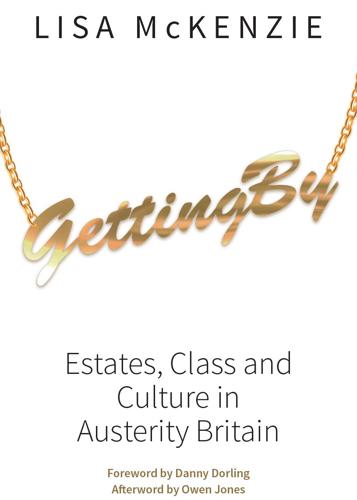
Getting By: Estates, Class and Culture in Austerity Britain
by
Lisa McKenzie
Published 14 Jan 2015
Prostitution has been associated with the neighbourhood for many generations, as Nottingham’s red light district is on the edge of St Ann’s, and it was also the neighbourhood in which most of the city’s ‘poor’ and migrant populations have settled, adding further stigma through the fear and development of the ‘other’. Therefore, the neighbourhood’s reputation has always preceded it, and the words ‘St Ann’s’ today conjure up strong thoughts and feelings among Nottingham residents in a way that no other neighbourhood has the power to do. St Ann’s has recently been linked again, usually through the moral panic of media representation, as an area ridden with crime, drugs, gangs and guns, following the high profile murders of several teenagers on the estate: Brendan Lawrence aged 16 in February 2002, and the widely publicised murder of 14-year-old Danielle Beccan in October 2004. Both were victims of drive-by shootings.

Listen, Liberal: Or, What Ever Happened to the Party of the People?
by
Thomas Frank
Published 15 Mar 2016
“[B]y 1996,” Gross announces, “being a responsible Democrat, and one interested in prosperity and opportunity for people at all levels in society, meant being concerned about the fate of the stock and bond markets.”7 Wall Street was an ideal constituency for a party reorienting itself as a representative of the professional class. The industry in question was supremely wealthy, of course. And financiers tended to be well-graduated people of a certain cultural liberalism; the prospect of gay marriage, for example, never seemed to send them into a moral panic the way it did so many others. Wall Street didn’t pollute either, at least not in a way that cameras can see. The industry’s operations were always coated in a thick patina of expert-talk, which (as we saw in Chapter One), the professional mind finds irresistibly beguiling. Furthermore, any distasteful results of Wall Street’s operations could be easily ignored and were always far removed from the thrilling precincts of lower Manhattan.
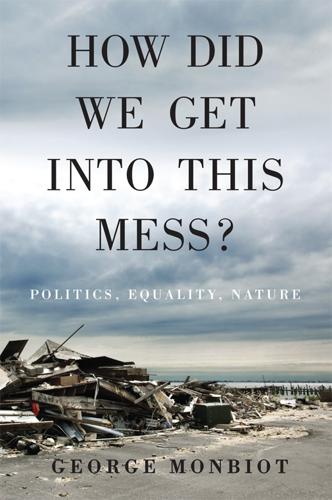
How Did We Get Into This Mess?: Politics, Equality, Nature
by
George Monbiot
Published 14 Apr 2016
Children’s lives were characteristically wretched: farmed out to wet nurses, sometimes put to work in factories and mines, beaten, neglected, often abandoned as infants. In his book A History of Childhood, Colin Heywood reports that, ‘The scale of abandonment in certain towns was simply staggering’, reaching one-third or a half of all the children born in some European cities.9 Street gangs of feral youths caused as much moral panic in late nineteenth-century England as they do today. Conservatives often hark back to the golden age of the 1950s. But in the 1950s, John Gillis shows, people of the same persuasion believed they had suffered a great moral decline since the early twentieth century. In the early twentieth century, people fetishised the family lives of the Victorians.
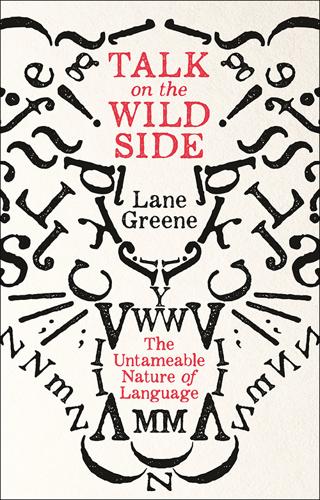
Talk on the Wild Side
by
Lane Greene
Published 15 Dec 2018
But this change is already complete, and the old “sick-making” meaning of nauseous is so rare as to be confusing to most people. So this type of change (going from “cause” to “experiencer” or the other way around) is commonplace. But when it happens in your century (as with nauseous) it provokes moral panic among those who think that the older meaning is always the right one; if it happened a few centuries ago (awesome) nobody is even aware of the old meaning anymore. Instead, today’s panic is about the cheapening of the word to describe a coffee. And yet we have all the words we need. If you need to say “filled with awe”, try awe-filled or awed.

The Art of Rest: How to Find Respite in the Modern Age
by
Claudia Hammond
Published 5 Dec 2019
Mobile libraries, known as circulating libraries, were compared with brothels and gin shops. ‘Reading sofas’ – which sound mild enough to us – were excoriated by moralisers and social reformers. Writing in 2008, the academic Ana Vogrincˇicˇ compares eighteenth-century attitudes to the novel with the moral panic around watching TV today. ‘If novel-readers were seen as smearing books with candle-wax and causing fire, television viewers are associated with eating junk food and spilling ketchup on the carpet,’ she writes.8 Today you could replace the novel and indeed the TV with the smartphone or tablet, of course.

Hostile Environment: How Immigrants Became Scapegoats
by
Maya Goodfellow
Published 5 Nov 2019
So-called ‘sus’ laws (also known as stop and search) were originally introduced in Victorian times to grant law enforcement the power to arrest people on the suspicion they were going to commit a crime. During the Thatcher years they resulted in the disproportionate harassment of black people by the police. This was justified by a society plunged into moral panic. Black people were characterised as being responsible for muggings, as threatening to social order in the UK, and for the country’s economic decline as unemployment rose.108 Watered down and made more ‘respectable’, this thinking filtered into Conservative Party literature. In a manner remarkably similar to attacks on Labour’s shadow home secretary Diane Abbott in the 2017 election, in 1987 before and during the election, Conservative advertisements and newspaper reporting suggested that activists organising as part of the Labour party’s black sections and two of Labour’s black Parliamentary candidates – Abbott and Bernie Grant – were extremists.109 Thanks to decades of organising and struggle within the party, the Opposition was at the forefront of ensuring people of colour and women had seats in Parliament.

Off the Edge: Flat Earthers, Conspiracy Culture, and Why People Will Believe Anything
by
Kelly Weill
Published 22 Feb 2022
As one of the most visible minority groups in Europe for centuries, Jews were frequently made scapegoats for societal ills. Many of these early accusations were religious in nature. One pernicious belief, popularized in the fourth century (and only officially repudiated by the Catholic Church in 1965), held all Jews responsible for the death of Jesus Christ. By the thirteenth century, this rumor had morphed into moral panics about Jews destroying Communion wafers and ritually murdering Christians, a myth known as “blood libel.” These myths helped cast Jews as the primary other in Christian societies, the shadowy outsider of whom almost anything could be suspected. “It was widely believed in the Renaissance that Jewish males menstruated, for example, which served as one explanation for the famous ‘blood libel,’ ” scholar Stephen Eric Bronner writes in A Rumor about the Jews.

Badvertising
by
Andrew Simms
He said he had increased Coke sales by 57.5 per cent, and popcorn by 18.1 per cent, after exposing nearly 20,000 viewers to subliminal projections telling them to ‘Eat Popcorn’ and ‘Drink Coca-Cola’. Each advert was too short – one three thousandths of a second – to be picked up consciously. But equally, Vicary provided no details or explanations for his results, which made it impossible for other academics to reproduce them. Despite this, the result was a moral panic in the USA, so much so that the CIA published a report, The Operational Potential of Subliminal Perception in 1958, which led in turn to subliminal messages being banned in the USA. The report confirmed that: Certain individuals can at certain times and under certain circumstances be influenced to act abnormally without awareness of the influence.

Learning to Think: A Memoir
by
Tracy King
Published 12 Mar 2025
I still have it. Rock music and culture often played with themes of black magic and Satan, not because we believed in it but because we knew it was made up. My new friends were as much into the Lord of the Rings as Iron Maiden’s satirical blasphemy. No wonder rock and heavy metal inspired a Christian moral panic. When I was a believer, I could tell we were being disrespected and were threatened by what we thought was a genuine demonic force working its way into the world. The Antichrist would come because Satan’s servants – heavy metal bands – had let him in. If demons can be exorcized, they can also be summoned, which was what we believed those long-haired leather-clad musicians and their fans were doing.
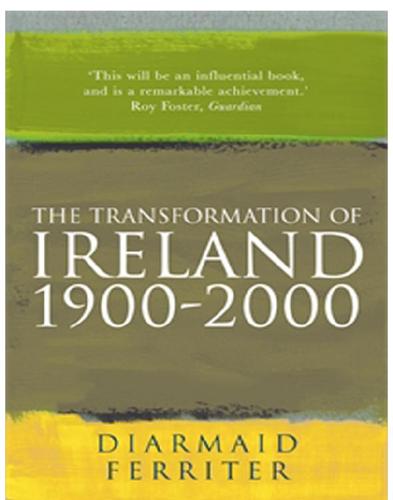
The Transformation Of Ireland 1900-2000
by
Diarmaid Ferriter
Published 15 Jul 2009
The Carrigan Committee proposals were overshadowed by the need to prevent public discussions of these matters, some believing that commissions were too public and that a small Catholic elite should advise the government ‘without public discussion’.150 ‘the character of the national mind’ Such focus on moral panic, which often suited the interests of the Church as well as the conservative middle-class social base of Irish politics, not only inhibited the development of a strong social and labour movement but also facilitated the continued hiding of many of Ireland’s social problems. In his memoirs, Noël Browne (Minister for Health from 1948 to 1951) gave one example of the suppression of a discourse based on highlighting social need and want: ‘“They can come to my back door and ask for it if they need it”, said a priest in the course of a sermon denouncing a proposal to provide children with a free school meal as “communism”.’151 Children born into the ‘unfortunate’ class thus continued to be hidden.
…
The inferior status of lay sisters entering convents, for example, who had no dowries and were responsible for more menial duties meant they had no vote in community affairs and were ineligible to stand for election as superior. The manner in which middle-class children were more likely to end up in orphanages than industrial or reformatory schools was also an indication of a Church-endorsed class bias.185 ‘their earnestness is doubtful’ The ‘moral panic’ created by the Church in the 1920s was also couched, though sometimes privately, in the language of class. Those of a ‘weaker moral fibre’ were deemed to be in the working- or lower-class categories, particularly those who had, as Cardinal Logue informed a new generation of Catholic priests at Maynooth in 1924, lost their ‘reverence’ for religion.
…
Finola Kennedy, ‘The suppression of the Carrigan Report: A historical perspective on child abuse’, Studies, vol. 89, no. 356, Winter 2000, pp. 354–63, and Mark Finnane, ‘The Carrigan Committee of 1930–31 and the moral condition of the Saorstát’, Irish Historical Studies, vol. 32, 2000–2001, pp. 519–36. 137. Susannah Riordan, ‘VD in the army: Moral panic in the Irish Free State in the 1920s’, paper delivered to the St Patrick’s College History Society, November 2001. 138. ibid. 139. Irish Times, 5 October 1996. 140. Eoin O’Sullivan, ‘“This otherwise delicate subject”’. 141. Raftery and O’Sullivan, Suffer the Little Children, pp. 224–5. 142.

The Sharing Economy: The End of Employment and the Rise of Crowd-Based Capitalism
by
Arun Sundararajan
Published 12 May 2016
—Frederic Mazzella, OuiShare magazine interview, January 14, 2013 The Internet has existed as space for commercial exchange for over two decades. Now well into the new millennium, it is easy to forget that in the mid to late 1990s, the Internet was both a scene of frenzied excitement and a site of deep apprehension, fear, and moral panic. After all, although some Internet enthusiasts like Howard Rheingold were staking out the “virtual frontier” of the Internet, others were warning people that the Internet was a potential minefield of illicit affairs, pornography, and (of course) fraudulent activities. Over the past two decades, as both the utopian speculations and paranoid misconceptions about the Internet have receded, it has become an integral part of our everyday lives.

Social Class in the 21st Century
by
Mike Savage
Published 5 Nov 2015
Even though the provenance of these figures is amplified through this vision now being paraded on our television screen courtesy of The Apprentice, Dragons’ Den and suchlike, it is a far from accurate picture of the social inequality which exists at the top of British society. It follows, therefore, that we need a more subtle approach than to simply critique the vicarious fortunes of bankers and financiers, who command huge bonuses and dividends, deploy tax breaks or earn windfalls from public-sector privatization or deregulation. The moral panic about bonuses, the culture of takeovers and corporate raiding, and the significance of the ‘non-domiciled’ rich, lured to London by the tax breaks that successive governments have made available, all plays into this populist sentiment. There is a danger that our attention is thus distracted, turned away from the ‘ordinarily wealthy’ who extend well beyond the top ‘1 per cent’.

How Music Got Free: The End of an Industry, the Turn of the Century, and the Patient Zero of Piracy
by
Stephen Witt
Published 15 Jun 2015
Morris had signed 2 Live Crew in the midst of this controversy, and put out their next major label release, Banned in the U.S.A., led by their immortal single “Face Down Ass Up.” Controversy was temporary. Royalties were forever. Soon, Morris was sure, the Death Row critics would find something else to complain about, just as they had with 2 Live Crew. The moral panic would subside and he would be left to cultivate the label’s singular genius. As he had so many times before, Morris sought to hold on. Though he rarely sat for interviews, he often posed for photographs, and among them was a new favorite, which he kept in a frame on his desk: a black-and-white party shot of himself, dwarfed by Suge and Snoop, smiling alongside Pac, his eyes alight with joy.

Two Nations, Indivisible: A History of Inequality in America: A History of Inequality in America
by
Jamie Bronstein
Published 29 Oct 2016
“I hope you’re all aware we’re all Eisenhower Republicans,” he noted.56 Clinton’s impeachment and trial over his affair with intern Monica Lewinsky distracted Americans from the strong economic expansion of his administration, with an unemployment rate of only 4 percent and annual labor productivity growth of 2.7 percent per year.57 He also successfully eliminated the federal deficit and replaced it with a surplus by “raising the top marginal tax rate to 39.6 percent, along with increased gasoline taxes, an uncapping of the payroll tax for Medicare, and increased taxation of Social Security benefits.”58 INEQUALITY AND THE WAR ON DRUGS As this chapter has shown, neoconservative doctrines about spending and welfare triumphed in the 1980s and 1990s, and welfare recipients were stigmatized, which divided Americans along both class and racial lines. The War on Drugs created by the Nixon administration accelerated during the Reagan era, worsening both inequality and racial divisiveness. In the 1980s, the moral panic surrounding the War on Drugs focused on crack cocaine, a rock-like distillation made by combining dissolved powder cocaine and baking soda in water and then heating. Smoking crack delivered a fast and cheap high and so was more popular in inner-city areas (whereas powder cocaine was a status symbol for wealthy whites).
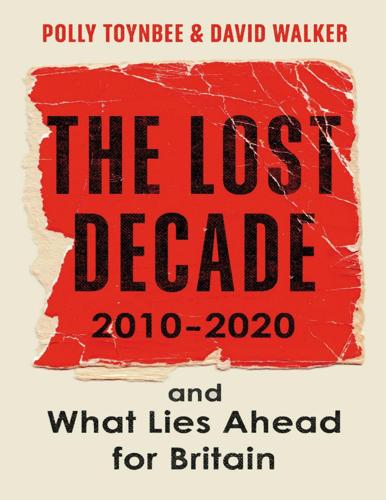
The Lost Decade: 2010–2020, and What Lies Ahead for Britain
by
Polly Toynbee
and
David Walker
Published 3 Mar 2020
Theresa May was right in claiming the relationship between police numbers and crime was not linear or straightforward, but relationship there was, and steep falls in police numbers and capacity began to alarm the public (and the victims of knife crime), provoking a screeching U-turn from her successors. Initially, a trump card was what looked like a falling crime rate. But later the number of homicides in which a knife was involved increased significantly, producing a moral panic. In London and other big cities, headlines daily recorded the anguish of parents of mostly young, male victims. May said there was ‘no direct correlation’ with the fall in police numbers: knife killings had previously peaked in 2007, when police numbers were rising. But it wasn’t just the police: English council budgets for youth services shrank by £400 million.
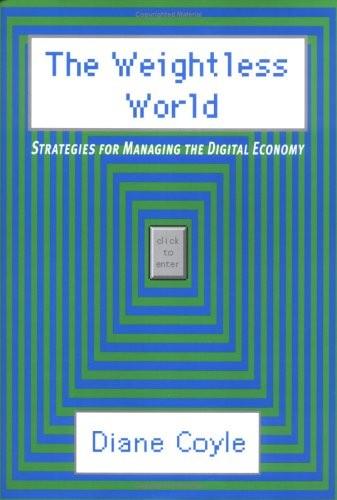
The Weightless World: Strategies for Managing the Digital Economy
by
Diane Coyle
Published 29 Oct 1998
The increase in inequality in some countries during the past couple of decades is well documented.7 Recent research suggests that deprivation is becoming ever more concentrated within the inner cities — and that the losers ‘may become dislocated from mainstream social norms and values’.8 This explains why it is particularly in the Western world’s three most unequal countries — the US, UK and France — that the moral panic about the welfare state and its underclass is most pronounced. The Thatcher experiment It is particularly interesting that the British still feel that the welfare state needs fundamental reform, for the country has already experimented with some controversial changes. Margaret Thatcher notoriously told a women’s magazine in an interview shortly after her third election victory in June 1987, ‘There is no such thing as society.

How to Be Idle
by
Tom Hodgkinson
Published 1 Jan 2004
As is well known, there were terrific downsides to absinthe abuse. It was seen as the crack cocaine of its day. And its fans were sensitive to its paradox: absinthe kills you, but it makes you live. The very thing that seems to make life worth living is also slowly destroying your health. Absinthe was banned in 1 9 1 4 following a moral panic but over the following decades the custom of the Green Hour evolved into the cocktail hour (and its vulgar kid brother, the so-called Happy Hour) . In The Book of Tiki: The Cult of Polynesian Pop in Fifties America (2000) , anthropologist Sven A. Kirsten reveals how, in the mid twentieth century, first California and then the whole of America began to adopt the primitive styles of Polynesia and Hawaii, of the Easter Islands and the South Seas islands, as symbolic of an earthly paradise, free of work and responsibility, an antidote to the civilized Western world.

Been There, Done That: A Rousing History of Sex
by
Rachel Feltman
Published 14 May 2022
But if you report multiple jerk-off sessions a day and no other cause can be found, your physician may tell you it’s time to cool it on the self-stimulation. Other potential issues include a loss of sensitivity (which is luckily easy enough to fix by taking a break or changing up your technique) or an inability to focus on other aspects of your life. It’s a lot like video game addiction: despite some moral panic around the idea that playing first-person shooters might turn young folks into murderous monsters, many studies have concluded that frequent gaming is unlikely to bring out dangerous behavior in and of itself. And some scientists argue that nothing about playing video games inherently puts you at risk of becoming “addicted” to them.

Capitalism and Its Critics: A History: From the Industrial Revolution to AI
by
John Cassidy
Published 12 May 2025
Hall, “Great Moving Right Show,” 16. 37. Stuart Hall, Charles Critcher, Tony Jefferson, et al., Policing the Crisis: Mugging, the State, and Law and Order (London: Palgrave Macmillan, 1978), 333. 38. Evan Smith, “‘Rather Swamped’: Thatcher, Moral Panics and Racist Rhetoric,” New Historical Express, November 1, 2022, https://hatfulofhistory.wordpress.com/2022/11/01/rather-swamped-thatcher-moral-panics-and-racist-rhetoric. 39. Hall, “Great Moving Right Show,” 15. 40. Hall, “Great Moving Right Show,” 17. 41. Stuart Hall, “Gramsci and Us,” Marxism Today, June 1987. Reprinted in Stuart Hall, The Hard Road to Renewal (London: Verso Books, 1988). 42.
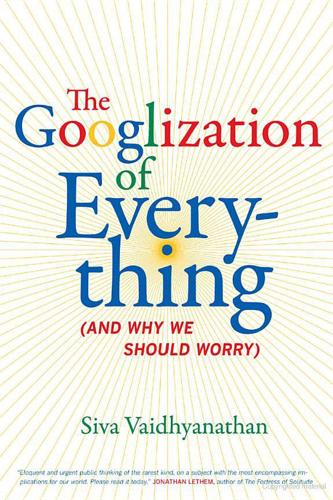
The Googlization of Everything:
by
Siva Vaidhyanathan
Published 1 Jan 2010
The system continues to work. Songwriters still write. Producers still produce. Distributors still distribute. Lawyers still sue. Downloaders still download. We learned three essential truths from the downloading debate: a shared file is not a lost sale; there is a significant difference between a crisis and a moral panic; and culture is not a zero-sum game. See Siva Vaidhyanathan, The Anarchist in the Library: How the Clash between Freedom and Control Is 250 NOTES TO PAGES 166– 68 Hacking the Real World and Crashing the System (New York: Basic Books, 2004), 43–50. 26. MGM Studios, Inc. v. Grokster Ltd., 380 F.3d 1154, 1158 (9th Cir. 2004). 27.
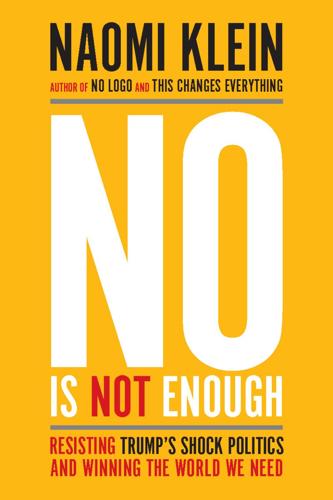
No Is Not Enough: Resisting Trump’s Shock Politics and Winning the World We Need
by
Naomi Klein
Published 12 Jun 2017
Columbia University professor Mark Lilla expressed this most prominently in a postelection essay in the New York Times. He chided Clinton for “calling out explicitly to African-American, Latino, LGBT and women voters at every stop. This was a strategic mistake.” This focus on the traditionally marginalized groups, and the “moral panic about racial, gender and sexual identity…has distorted liberalism’s message and prevented it from becoming a unifying force capable of governing.” Unity, apparently, requires that all those noisy minorities (combined, an overwhelming majority, actually) need to pipe down about their individual grievances so Democrats can get back to “It’s the economy, stupid,” the mantra of Bill Clinton’s 1992 winning presidential campaign.

The Government of No One: The Theory and Practice of Anarchism
by
Ruth Kinna
Published 31 Jul 2019
As well as providing some not-so-reliable advice on bomb-making, poisons and other paraphernalia, Most invoked the idea of propagandistic deeds to issue chilling calls for anti-bourgeois violence. In 1881 he paid the price when he was imprisoned for publishing an article applauding the Tsar’s assassination. Commenting on the moral panic anarchism stirred and the resulting anti-anarchist repression, David Nicoll gave his version of this thesis. There was a hint of vengeance in his defence. Referring to the garrotting of four anarchists in Jerez in 1892 and the police shooting of nine workers at an eight-hour day demonstration in 1891 he wrote: The Anarchists are ‘criminals’, ‘vermin’, ‘gallows carrion’.
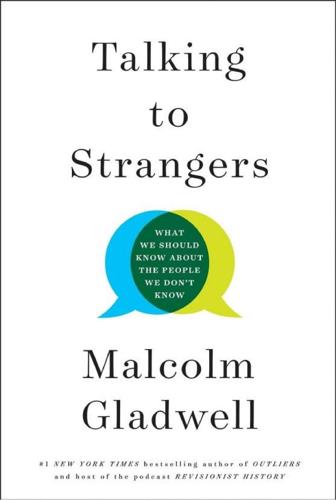
Talking to Strangers: What We Should Know About the People We Don't Know
by
Malcolm Gladwell
Published 9 Sep 2019
If you would like to go down the Sandusky rabbit hole, you may want to start with Ziegler. A second (and perhaps more mainstream) Sandusky skeptic is author Mark Pendergrast, who published The Most Hated Man in America: Jerry Sandusky and the Rush to Judgment in 2017. Pendergrast argues that the Sandusky case was a classic example of a “moral panic” and the frailty of human memory. I drew heavily from Pendergrast’s book in my account of the Aaron Fisher and Allan Myers cases. One of the noteworthy things about Pendergrast’s book, I must say, is the back cover, which has blurbs from two of the most influential and respected experts on memory in the world: Richard Leo of the University of San Francisco, and Elizabeth Loftus of the University of California at Irvine.

A New History of the Future in 100 Objects: A Fiction
by
Adrian Hon
Published 5 Oct 2020
It was a new medium that rivaled the telegram and the radio in importance, and almost incidentally provided a near-perfect ubiquitous method of data capture. As usual, it was the young who truly embraced the new technology. Children and teenagers have always struggled with their guardians for independence and privacy, especially during the recurrent moral panics in the twentieth and twenty-first centuries (and, to be fair, the rest of known history). Necklaces were simply the newest outlet for their desires, and certainly the most inconspicuous. Several competing messaging networks sprung up within a few months of the first devices’ launch, with Dees and Pype dividing up most of the pie.* Judging by the billions of messages being sent each day by 2022 and the trillions sent just a few years later, there was massive demand for silent messaging.
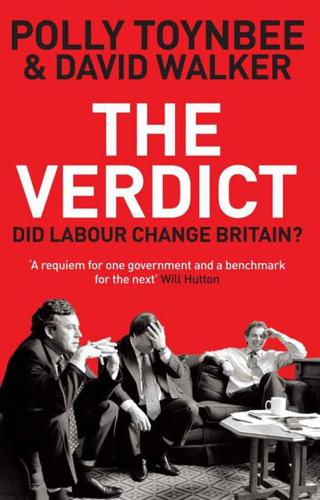
The Verdict: Did Labour Change Britain?
by
Polly Toynbee
and
David Walker
Published 6 Oct 2011
Bryant represented the Rhondda, but how culturally distant he seemed from a former parliamentary neighbour, the MP for Caerphilly, Ron Davies. Twelve years on, the furtiveness of his 1998 career-destroying moment of madness on Clapham Common seemed utterly anachronistic. Section 28 was a discriminatory clause in a 1988 Act passed during a spasm of Tory moral panic that forbade councillors and schools to ‘promote’ homosexuality. Largely unused, it was a textbook case of the irrelevance of statute law in affecting deep movements in public attitudes – homosexuality was becoming normal, inside families, in popular culture, even fractiously in the pulpit. Still, the law remained an affront.
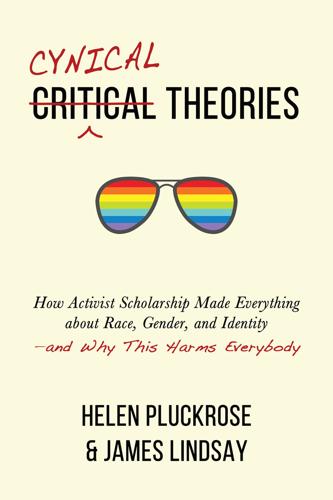
Cynical Theories: How Activist Scholarship Made Everything About Race, Gender, and Identity―and Why This Harms Everybody
by
Helen Pluckrose
and
James A. Lindsay
Published 14 Jul 2020
“Hidden Tribes of America,” Hidden Tribes, hiddentribes.us (accessed November 7, 2019). 68.Lukianoff and Haidt, The Coddling of the American Mind. 69.Bradley Campbell and Jason Manning, The Rise of Victimhood Culture: Micro-aggressions, Safe Spaces, and the New Culture Wars (New York: Palgrave Macmillan, 2018). 70.See the chapter “False Accusations, Moral Panics and the Manufacture of Victimhood” in Campbell and Manning, The Rise of Victimhood Culture. 71.Lukianoff and Haidt, The Coddling of the American Mind, 176. 72.Ibid., 24. 73.Ibid., 24. 74.Campbell and Manning, The Rise of Victimhood Culture, 2. 75.Mike Nayna, “PART TWO: Teaching to Transgress,” YouTube video, March 6, 2019, www.youtube.com/watch?
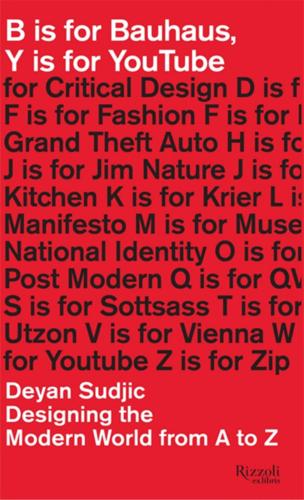
B Is for Bauhaus, Y Is for YouTube: Designing the Modern World From a to Z
by
Deyan Sudjic
Published 17 Feb 2015
But Dan Houser had also been to Oxford. And his purchase of what had once been Truman Capote’s house in Brooklyn Heights certainly suggests that he is anything but a member of the nerd class. The explosion of the video-gaming industry reflects many aspects of the early days of Hollywood. It has produced its own share of moral panics to match anything that introduced censorship to the film industry. There have been complaints about nudity, the sex and the violence. Like the novel, and the feature film, gaming needed its own visual and narrative techniques. Rockstar was responsible for creating them. In Dan Houser, gaming may have found its Wilkie Collins, if not its Charles Dickens.
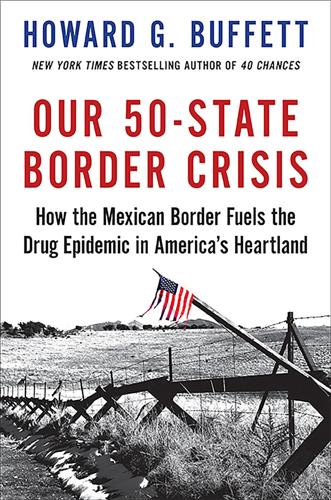
Our 50-State Border Crisis: How the Mexican Border Fuels the Drug Epidemic Across America
by
Howard G. Buffett
Published 2 Apr 2018
He watched DHS be formed and unfold in real time, and he has devoted considerable energy over the last decade and a half to trying to remedy some of its shortcomings. From the beginning of DHS, Admiral Allen notes, “We haven’t had a coherent policy to put (these agencies) together. Every time we have a major event or a moral panic, we create an agency or a department to address it.” Unfortunately, he adds, “There is no concept of operations for an end game.” I spoke at length with the admiral, who believes DHS needs what he and others call a sense of “unity of effort.” He demonstrated this concept in the heat of commanding U.S. resources during some highly stressful emergencies, including Hurricane Katrina and the Deepwater Horizon oil platform disaster.

The Problem With Work: Feminism, Marxism, Antiwork Politics, and Postwork Imaginaries
by
Kathi Weeks
Published 8 Sep 2011
Weber did acknowledge the coexistence of competing ethics of work—not only traditionalism, but also, in a passing reference, “the class morality of the proletariat and the anti-authoritarian trade union,” against which the dominant ethic protects those willing to work (1958, 167). 16. Today one can hear the echoes of this moral panic over the work ethic in some of the discourses about gay and lesbian marriage, particularly from those who denigrate certain queer cultures by linking different patterns of supposedly promiscuous intimacies with so-called hedonistic consumer lifestyles and worry that those not ensconced in legible families have, to draw on Lee Edelman’s (2004) critical account of such logics, no future for which to sacrifice in the present and, to borrow a concept from Judith Halberstam’s critique of such narratives, no reproductive time (2005) around which to regulate their lives productively.

Traffic: Genius, Rivalry, and Delusion in the Billion-Dollar Race to Go Viral
by
Ben Smith
Published 2 May 2023
The idea existed largely in the minds of angry publicists and celebrities, because even Nick’s staff wouldn’t quite go along. When Meg Hourihan mentioned walking past Gwyneth Paltrow’s landmarked West Village town house on her way to work, Nick hounded her to add the actress’s home to the stalker map. “Suddenly I was super protective of Gwyneth Paltrow,” she recalled. Gawker Stalker ignited an early moral panic over what would come to be called, and loathed, as doxxing, but Nick was unconcerned. The media elite might despise him, but they knew who he was. Jonah, meanwhile—well, The Huffington Post site was up and running, and he loved the feeling of building something new, and the drama and power his senior partners, Kenny and Arianna, carried with them.
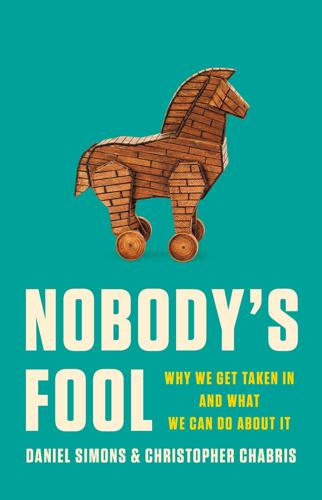
Nobody's Fool: Why We Get Taken in and What We Can Do About It
by
Daniel Simons
and
Christopher Chabris
Published 10 Jul 2023
If merely describing an action as “was shooting” rather than “shot” yielded more convictions, wouldn’t prosecutors do that every time? If our actions were so heavily influenced by fleeting exposures to physical sensations and words, wouldn’t people trying to influence us for a living have gained total control of our actions by now? DOES GRAND THEFT AUTO MAKE MURDERERS? Moral panics about new media forms and technologies go back at least to ancient Greece. From the invention of written language to printed books to rock lyrics to the Internet, some people will see social changes as evidence of declining standards and will blame whatever “kids today” are playing, watching, or using.
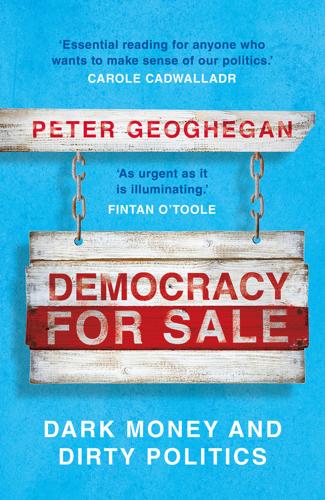
Democracy for Sale: Dark Money and Dirty Politics
by
Peter Geoghegan
Published 2 Jan 2020
Soros’s support for democracy and open societies was really a stalking horse for a globalist plot to destroy the nation state itself. This was a new model for attack politics in an era of global division, one that the far right would exploit to devastating effect.83 During the 2016 US presidential campaign, Soros went from obscure Fox News talking point to moral panic. As I drove across the United States in the months before the election, I was bewildered by the number of voters who mentioned Soros. His name came up in blue-collar bars in Bethlehem, Pennsylvania, and outside upmarket shopping malls in Cleveland, Ohio. At the time, I was barely aware of Soros.

Palo Alto: A History of California, Capitalism, and the World
by
Malcolm Harris
Published 14 Feb 2023
Communists were communists whether they realized it or not, even when they thought they only wanted better wages. It’s easy now to look back and see the Hooverites as victims of a paranoiac fantasy about the world—to see them either as the only ones who really believed the Marxist revolutionary rhetoric or as cynical operators stoking an arbitrary moral panic. But Bert knew the global revolution was real. He saw it in China, narrowly escaped it in Russia, confronted it outside the window in DC, and heard it tear apart his farm in California. They took his mines, and they would kill him and take the rest if he wasn’t vigilant, just like they did to his formerly privileged friends around the world.
…
Despite its overwhelming condescension, poor reviews, and creepy erotics, Dangerous Minds was a smash hit, nabbing number one at the box office during a very competitive summer and netting just under $180 million. As the most successful in a series of films about teachers persuading ghetto youths to school their way out of their historical circumstances, Dangerous Minds “buttress[ed] the moral panic around violence of the mid-1990s,” write scholars Stephanie Glick and Allyson Dean.48 The movie is based on the 1992 memoir of high school teacher LouAnne Johnson, the unfortunately named My Posse Don’t Do Homework.ix Johnson taught at Carlmont High School in Belmont, an affluent suburb about 10 miles up the Peninsula from East Palo Alto, where her students caught the bus every morning.
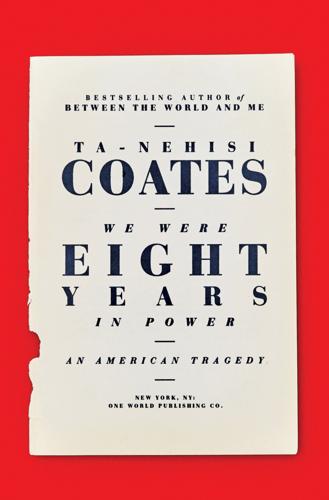
We Were Eight Years in Power: An American Tragedy
by
Ta-Nehisi Coates
Published 2 Oct 2017
On the contrary, the white working class functions in the rhetoric and argument not as a real community of people so much as a tool to quiet the demands of those who want a more inclusive America. Mark Lilla’s essay “The End of Identity Liberalism” is perhaps the most profound specimen of this genre. Lilla denounces the perversion of liberalism into “a kind of moral panic about racial, gender and sexual identity,” which distorted its message “and prevented it from becoming a unifying force capable of governing.” Liberals have turned away from their working-class base, according to Lilla, and must look to the “pre-identity liberalism” of Bill Clinton and Franklin D.

T: The Story of Testosterone, the Hormone That Dominates and Divides Us
by
Carole Hooven
Published 12 Jul 2021
They may wish to transition back: Catherine Butler and Anna Hutchinson, “Debate: The Pressing Need for Research and Services for Gender Desisters/Detransitioners,” Child and Adolescent Mental Health 25, no. 1 (2020): 45–47. there are many detransitioners who are willing to share their stories: Van Slothouber, “(De) Trans Visibility: Moral Panic in Mainstream Media Reports on De/Retransition,” European Journal of English Studies 24, no. 1 (2020): 89–99. “I knew I was attracted to women”: On sexual orientation in people with gender dsyphoria, see Anne A. Lawrence, “Sexual Orientation Versus Age of Onset as Bases for Typologies (Subtypes) for Gender Identity Disorder in Adolescents and Adults,” Archives of Sexual Behavior 39, no. 2 (2010): 514-45.
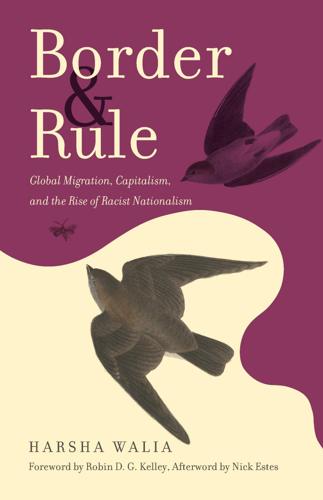
Border and Rule: Global Migration, Capitalism, and the Rise of Racist Nationalism
by
Harsha Walia
Published 9 Feb 2021
Similarly, the first federal immigration laws merged race-based exclusion with criminalization of sex work and drug prohibition in the imperial “yellow peril” era of the late 1800s. The Page Act and the Chinese Exclusion Act fused white, working-class sentiments against Chinese “coolie labor” with white, middle-class moral panics about Chinese “uncleanliness,” “prostitution,” and “opium dens” to ban Chinese laborers. Anti-Chinese sentiment was further sexualized by claims of both heterosexual luring of white women by Chinese men and the gendering of Chinese men as effeminate or gay. Chinese immigrants, as opposed to white settlers, were treated as suspicious agents of war, which, in turn, represented settler possession “as a form of protection rather than conquest.”59 As Nikhil Pal Singh documents, in 1889 the US Supreme Court upheld Chinese exclusion on the basis that “foreigners of a different race” were “potentially dangerous to peace and security.”60 Similarly, the criminalization of poverty through vagrancy laws deporting the poor, especially single women migrants deemed to be promiscuous, attacks on labor unionism through the expulsion of communists and anarchists dating back to the Palmer Raids, maintenance of a cisheteronormative sexual order through sodomy laws and bars on queer migrants, and medical examination as a basis for excluding disabled migrants were all integral to constructing narratives of productive citizens versus deviant others.
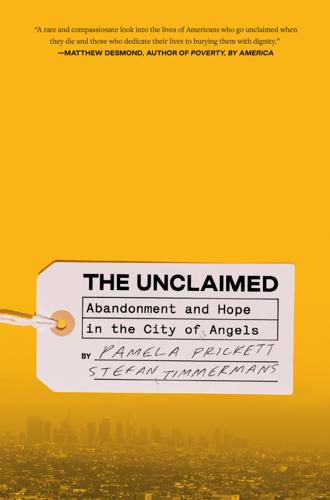
The Unclaimed: Abandonment and Hope in the City of Angels
by
Pamela Prickett
and
Stefan Timmermans
Published 11 Mar 2024
What they don’t realize is that the new birth doesn’t erase the previous death. * * * — Laura Johnson was a clueless new mother when she adopted a baby boy in 2004, nearly a year after his birth. She named the infant Keegan. Keegan’s birth mother had come into the hospital in labor with drugs in her system during a time when the nation was in a moral panic about poor pregnant women exposing their fetuses to illegal substances and alcohol. Addicted mothers were publicly vilified and often punished rather than supported. But even if Keegan’s birth mother had received prenatal care, she might not have known she had contracted CMV, a herpes virus. The virus is common in adults, and symptoms are rare.

Cocaine Nation: How the White Trade Took Over the World
by
Thomas Feiling
Published 20 Jul 2010
In the month following his death, the news networks of the United States aired seventy-four evening news items about crack and cocaine, routinely confusing the two forms of the drug, and often stating that it was crack that had killed Len Bias. The crack scare that followed set the benchmark for every irrational, hysterical and moralizing panic the American media has cooked up since. The advertising industry and the main broadcasters even donated a billion dollars’ worth of ads and airtime to the anti-drugs movement, saying that ‘on this issue we’re ready to go over the top!’3 As the head of the DEA office in New York put it, ‘crack is the hottest combat-reporting story to come along since the end of the Vietnam War’.4 Police footage of their raids on alleged drug dealers’ homes appeared in a quarter of all drug stories over the following two years.
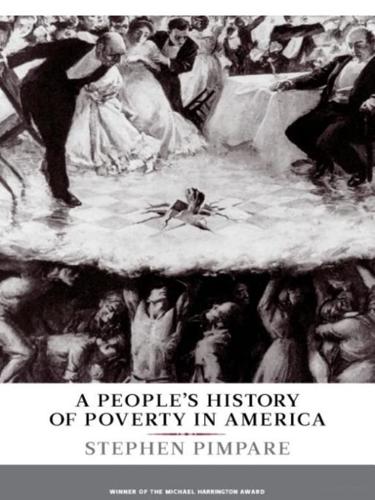
A People's History of Poverty in America
by
Stephen Pimpare
Published 11 Nov 2008
For critiques of Herrnstein and Murray, see Stephen Jay Gould, The Mismeasure of Man (New York: Norton, 1996); and Orley Ashenfelter and Cecilia Rouse, “Schooling, Intelligence, and Income in America: Cracks in the Bell Curve,” November 1998, www.irs.princeton.edu/pubs/pdfs/407.pdf. Jacqueline Jones called The Bell Curve “hate literature with footnotes.” Jones cited in Steve Macek, Urban Nightmares: The Media, the Right, and the Moral Panic over the City (Minneapolis: University of Minnesota Press, 2006). 66 Robert Rector, “Welfare: Broadening the Reform,” in Issues 2000: The Candidate’s Briefing Book, ed. Stuart M. Butler and Kim R. Holmes (Washington, DC: Heritage Foundation, 2000). 67 James C. Cobb, “‘Somebody Done Nailed Us on the Cross’: Federal Farm and Welfare Policy and the Civil Rights Movement in the Mississippi Delta,” Journal of American History 77, no. 3 (December 1990): 912–36. 68 John K.
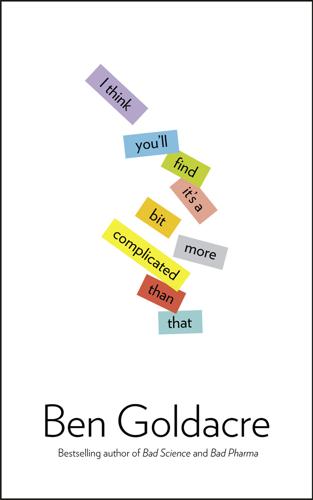
I Think You'll Find It's a Bit More Complicated Than That
by
Ben Goldacre
Published 22 Oct 2014
The progressive attitude to drug use institutionalised in this report established the framework of public policy for the next five decades, and following 1926 the ‘British System’ prosecuted dealers and dilettantes, but permitted medical prescription of heroin to addicts after ‘every effort’ had been made for the ‘cure of the addiction’, but when the drugs could not be fully withdrawn without ‘severe distress or even risk of life’ or ‘experience showed that a certain minimum dose of the drug was necessary for the patients to lead useful and relatively normal lives … capable of work’. This twin policy of ‘policing and prescribing’ effectively contained the heroin problem (which ran at below a hundred notified heroin addicts) for the next four decades. With the sixties came an atmosphere of moral panic at the scale of a well-publicised increase in drug use. Although the drugs in question were mostly cannabis and amphetamines, not heroin, attitudes to drug use and regulation were reappraised: amphetamines and LSD were brought under tight statutory control, and the government began to fear that with a rising demand for drugs, the licit opiate supply system might start supplying the illicit market.

Giving the Devil His Due: Reflections of a Scientific Humanist
by
Michael Shermer
Published 8 Apr 2020
In May of 1692, seven teenage girls writhed on the floor of a Salem, Massachusetts courtroom during the trial of a suspected witch named Martha Carrier, crying out “There is a black man whispering in her ear!” Carrier was one of twenty people executed in what became the most famous witch trial in history. What were these people thinking?1 It is convenient to dismiss them as unthinking naïfs caught up in the hysterics of a moral panic, but in fact they were thinking quite clearly, and they had the authority of the Bible behind them, as in Exodus 22:18: “Thou shalt not suffer a witch to live.” They also had the backing of the Roman Catholic Church. In 1484, Pope Innocent VIII issued the Papal Bull Summis desiderantes affectibus, in which he pronounced that many people had abandoned themselves to devils, incubi and succubi, and by their incantations, spells, conjurations, and other accursed charms and crafts, enormities and horrid offences, have slain infants yet in the mother’s womb, as also the offspring of cattle, have blasted the produce of the earth, the grapes of the vine, the fruits of the trees, nay, men and women, beasts of burthen, herd-beasts, as well as animals of other kinds, vineyards, orchards, meadows, pasture-land, corn, wheat, and all other cereals; they hinder men from performing the sexual act and women from conceiving …2 Inspired by the Bull, two years later, the German Dominican inquisitor Heinrich Kramer published his Malleus Maleficarum (Hammer of the Witch), the infamous how-to manual on finding and prosecuting witches, which was promptly put to use, culminating in the murder of some 100,000 people.3 Such theological bafflegab and administrative argle-bargle was believed by most Europeans half a millennium ago.

Live and Let Spy: BRIXMIS - the Last Cold War Mission
by
Steve Gibson
Published 2 Mar 2012
Politicians, Anglo-Saxon politicians in particular, are so devoid of an ideological backbone, or too frightened to exhort anything remotely ideological, that they content themselves with an infantilising and patronising managerialism that simply interferes in how the rest of us wish to conduct our private lives. Worse, the rest of us, so unconfident in sorting out our own private lives, demand that these same so-called politicians intervene and regulate them on our behalf with ever-increasing shrill moral panic. Similarly in the scientific and technological world a growing ‘complexity’ narrative argues that the very scientific advances invented and developed by human-beings will somehow be responsible for humanity’s downfall. This ‘risk society’ logic, in which modernity becomes reflexively responsible for our future demise as a species, forgets that science and technology have solved many of our problems to date, delivered much of what is deemed ‘progress’, and might continue to do so in the future.

Shadow Libraries: Access to Knowledge in Global Higher Education
by
Joe Karaganis
Published 3 May 2018
The South African universities and their faculty were cautious of these approaches, articulating concerns about Indian copyright infringement and copyright violations in Indian textbooks—both stories strongly promoted by the British and U.S. publishing industries. At the publishers’ request, India was regularly placed on the “Special 301 Watch Lists” by the U.S. Trade Representative—the main mechanism for signaling U.S. displeasure with levels of IP protection and enforcement in other countries. Indian publishers saw this as a moral panic propagated by the United States and UK in the face of potential competition. The U.S. and UK arguments were persuasive to academics and to an industry that appeared to place its global aspirations above questions of lowest-cost sourcing of materials (to say nothing of the potential advantages of trade with partners in emerging economies that might share common interests with South Africa).
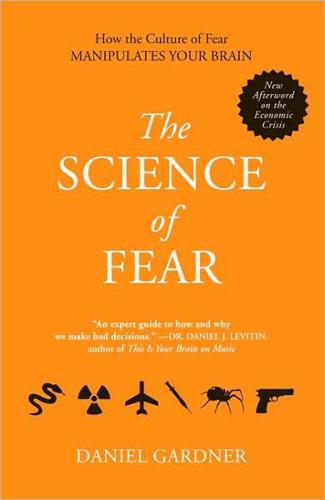
The Science of Fear: How the Culture of Fear Manipulates Your Brain
by
Daniel Gardner
Published 23 Jun 2009
Back and forth it goes. The media reflect society’s fear, but in doing so, the media generate more fear, and that gets reflected back again. This process goes on all the time but sometimes—particularly when other cultural concerns are involved—it gathers force and produces the strange eruption sociologists call a moral panic. In 1998, Time magazine declared, “It’s high noon on the country’s streets and highways. This is road recklessness, auto anarchy, an epidemic of wanton carmanship.” Road rage. In 1994, the term scarcely existed and the issue was nowhere to be seen. In 1995, the phrase started to multiply in the media, and by 1996 the issue had become a serious public concern.

Rise of the Warrior Cop: The Militarization of America's Police Forces
by
Radley Balko
Published 14 Jun 2013
With help from the ACLU, the city of Racine eventually dismissed the charges against all attendees who hadn’t yet pleaded guilty.17 The trendy new drug throwing the media and politicians into hysterics was Ecstasy. Raves were the new, weird, and different dance parties where teenagers were allegedly taking this crazy sex drug. Cue the moral panic, political grandstanding, and ensuing aggressive crackdown. Prior to the raid in Racine, Sen. Joe Biden of Delaware seemed particularly obsessed with rave parties. Politicians seemed to think that any party with techno music, pulsing lights, and neon inevitably degenerated into underage kids getting high on Ecstasy and engaging in mass orgies.
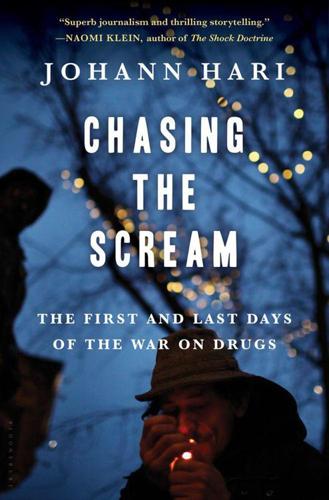
Chasing the Scream: The First and Last Days of the War on Drugs
by
Johann Hari
Published 20 Jan 2015
Walker, Drug Control in the Americas, 111. 66 Bonnie and Whitebread, Marijuana Conviction, 117. 67 McWilliams, Protectors, 61. 68 King, Drug Hang-Up, 82. 69 Walker, Drug Control in the Americas, 113. 70 Erlen and Spillane, Federal Drug Control, 73. 71 Sloman, Reefer Madness, 63. 72 Ibid., 61. 73 http://hightimes.com/lounge/ht_admin/8215, accessed April 1, 2013. 74 See Isaac Campos, Home Grown: Marijuana and the Origins of Mexico’s War on Drugs. 75 Erich Goode et al., Moral Panics: The Social Construction of Deviance, 196–202. 76 Extract from “Marijuana—The New Prohibition” by John Kaplan. See http://www.drugtext.org/Marijuana-The-New-Prohibition/iv-marijuana-and-aggression.html, accessed April 7, 2013. 77 Sloman, Reefer Madness, 62. 78 Ibid. 79 Steve Fox, Paul Armentano, and Mason Tvert, Marijuana Is Safer: So Why Are We Driving People to Drink?
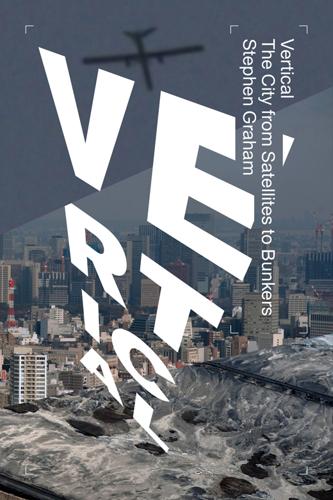
Vertical: The City From Satellites to Bunkers
by
Stephen Graham
Published 8 Nov 2016
Policing and the Masculinist State’, Gender, Place and Culture: A Journal of Feminist Geography 8:1, 2001, p. 60. 30Ibid. 31Andrian Kreye, ‘Above the Neon Prairie: On Patrol with the LAPD’s Helicopter Squad’, andriankreye.com, 2009, available at andriankreye.com/LAPDE.html. 32‘EADS-Developed AUTOPOL Helps Police Helicopters to Spot People and Vehicles’, 1 May 2002 available at http://northamerica.airbus-group.com/. 33Herbert, ‘Hard Charger’. 34Kreye, ‘Above the Neon Prairie’. 35See Steve Macek, Urban Nightmares: The Media, the Right, and the Moral Panic over the City, Minneapolis: University of Minnesota Press, 2006. 36See Nicole Gelinas, ‘Baghdad on the Bayou’, City Journal, Spring 2007, pp. 42–53, available at city-journal.org. 37Ryan Bishop and John Phillips, Modernist Avant-Garde Aesthetics and Contemporary Military Technology: Technicities of Perception, Edinburgh: Edinburgh University Press, 2010, chapter 2. 38Ibid., p. 25. 39See Henry Giroux, ‘Lockdown, USA: Lessons from the Boston Marathon Manhunt’, Truthout.Org, 6 May 2013, available at truth-out.org. 40Paul Peluso, ‘Thermal Imaging Plays Major Role in Bombing Manhunt’, SecurityInfoWatch.com, 23 April 2013. 41Gastón Gordillo, ‘Opaque Zones of Empire’, Space and Politics, 25 June 2013, available at spaceandpolitics.blogspot.co.uk. 42Cited in Paul Virilio, War and Cinema: The Logistics of Perception, London: Verso, 2009, p. 4. 43Jon Boone, ‘Taliban Retaliate after Prince Harry Compares Fighting to a Video Game’, Guardian, 22 January 2013. 44Bishop and Phillips, Modernist Avant-Garde Aesthetics, p. 52. 45This discussion, and the advert, draw from Bishop and Phillips, Modernist Avant-Garde Aesthetics, p. 52. 46Ibid. 47Kari Andén-Papadopoulos, ‘US Soldiers Imaging the Iraq War on YouTube’, Popular Communication 7:1, 2009, pp. 17–27. 48Chris Cole, Mary Dobbing and Amy Hailwood, Convenient Killing: Armed Drones and the ‘PlayStation’ Mentality, Fellowship of Reconciliation, 2010, available at dronewarsuk.files.wordpress.com. 49Cited in Andén-Papadopoulos, ‘US Soldiers Imaging the Iraq War’. 50Elisabeth Bumiller, ‘Video Shows US Killing of Reuters Employees’, New York Times, 5 April 2010.
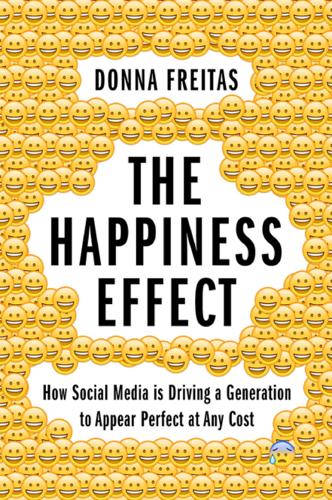
The Happiness Effect: How Social Media Is Driving a Generation to Appear Perfect at Any Cost
by
Donna Freitas
Published 13 Jan 2017
,” Wall Street Journal, Eastern Edition, August 25, 2010, D1–D2; Jan Hoffman, “States Struggle with Minors’ Sexting,” New York Times, March 27, 2011, Riva Richmond, “Sexting May Place Teens at Legal Risk,” New York Times, March 26, 2009, gadgetwise.blogs.nytimes.com/2009/03/26/sexting-may-place-teens-at-legal-risk/?_r=0; Maia Szalavitz, “Nearly 1 in 3 Teens Sext, Study Says. Is This Cause for Worry?,” Time, July 2, 2012, http://healthland.time.com/2012/07/02/nearly-1-in-3-teens-sext-study-says-is-this-cause-for-worry/; and Conor Friedersdorf, “The Moral Panic over Sexting,” Atlantic, September 2, 2015, http://www.theatlantic.com/politics/archive/2015/09/for-sexting-teens-the-authorities-are-the-biggest-threat/403318/. 6.For readers interested in a detailed treatment of the methodology for both the interview and the online survey process, participant selection, demographics of participation, and so forth, see the methodological appendix at the back of this book. 7.In a nationwide study conducted by the Pew Research Center, survey data gathered in September 2009 showed that 73 percent of online American teens used social networking websites, followed closely by young adults aged eighteen to twenty-nine at 72 percent.
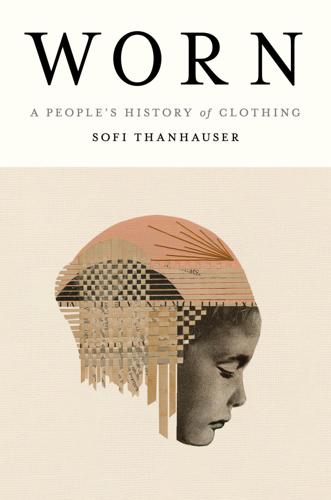
Worn: A People's History of Clothing
by
Sofi Thanhauser
Published 25 Jan 2022
Sharecropping, coercing tenants into growing commodity crops via a punishing system of perpetual debt, was the most common practice for growing cotton by 1900. White sharecroppers as well as Black were immiserated by this system in the early twentieth century, and in the 1930s James Agee was sent south by Fortune magazine to write a feature on white sharecropper families. There he became embroiled in a moral panic that would ultimately yield his unwieldly masterpiece, Let Us Now Praise Famous Men. Midway through the project, seeing the desperate poverty of the farmer and the rapacious greed of the creditor, Agee wrote to his longtime friend and mentor, Father Flye, that the book was in “bad shape.” The subject, as he saw it, “cannot be seriously looked at without intensifying itself toward a center which is beyond what I, or anyone else, is capable of writing of: the whole problem and nature of human existence.”

The Contrarian: Peter Thiel and Silicon Valley's Pursuit of Power
by
Max Chafkin
Published 14 Sep 2021
This narrator was known as the dungeon master, and although the role was supposed to rotate, Peter—skinny, brilliant, and painfully, painfully serious—would always try to claim the job for himself. “You get to determine the reality,” said a man who used to play with him. “He liked that quiet control.” Besides being an escape, D&D carried a hint of danger, at least for the boys’ parents. After a seventeen-year-old gamer from Michigan killed himself in 1980, there had been a moral panic among Christian conservatives who worried about the mind-warping potential of a game that encouraged teenagers to playact magic, witchcraft, and other blasphemies. The kids in Foster City laughed this off, but it may have explained why Thiel, whose parents were deeply religious, never once invited them to play at his house.

Twitter and Tear Gas: The Power and Fragility of Networked Protest
by
Zeynep Tufekci
Published 14 May 2017
Besides, most street protesters today organize with digital tools, and publicize their efforts on social media. The problem with Barlow’s statement is not just its reliance on digital dualism, but also the assumption that new technologies breed completely novel types of human behavior, common fallacy in technology writing—for example, witness the moral panic about selfies, which actually reflect mundane human behavior over millenia. Technology rarely generates absolutely novel human behavior; rather, it changes the terrain on which such behavior takes place. Think of it as the same players, but on a new game board. Culture certainly evolves, but many core mechanisms that motivate people are fairly stable, and this is true for social movements as well.

Like, Comment, Subscribe: Inside YouTube's Chaotic Rise to World Domination
by
Mark Bergen
Published 5 Sep 2022
An advocacy group accused him of breaking laws against deceptive advertising to kids. Chris Williams, a former Maker Studios executive, had started PocketWatch, an entertainment company that worked with Ryan and other YouTube child performers. Williams found such critics of his star misguided, comparing them to the scolds who raised a moral panic about video games and rap in the 1990s. Critics, he believed, failed to see the benefit for young audiences of having a relatable figure on-screen—even one as famous as Ryan. “Really, what they mean is, ‘This isn’t Sesame Street,’ ” said Williams. “If that were the bar, kids would never watch anything.”
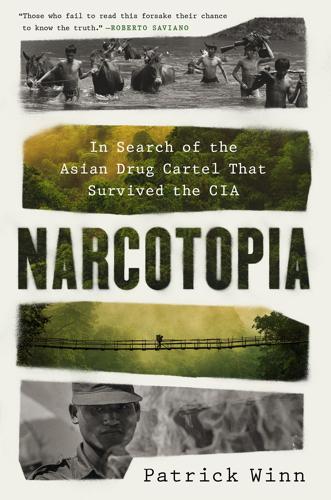
Narcotopia
by
Patrick Winn
Published 30 Jan 2024
You can’t stamp a logo on white heroin powder or crystalline meth shards, but Wa pills bear a symbol: “WY,” as recognizable to Asian drug users as Nike’s swoosh. Today, per annual units sold, ya-ba pills outperform Big Macs and Starbucks coffee orders worldwide. Costing roughly $1 to $5 apiece, the pills are priced to move—and move they do, much to authorities’ dismay.2 Moral panic over ya-ba has washed over Southeast Asia in several waves. The first one hit Thailand circa 2001, when Wei Xuegang had roughly one hundred meth pill factories up and running along the Thai-Burma border. His ya-ba was all the rage: as many as one in twenty Thais had tried it.3 Thai officials fell into morbid hysteria, similar to the one that had seized American lawmakers in the 1980s crack cocaine era.
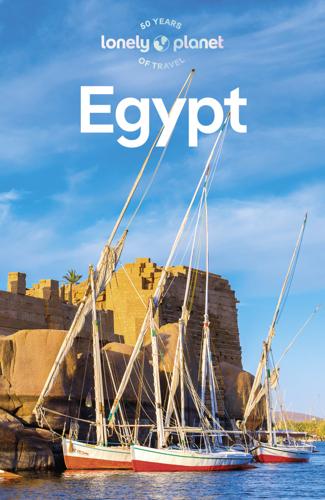
Lonely Planet Egypt
by
Lonely Planet
Baron’s Palace | MOHAMED EL SHERBINY/SHUTTERSTOCK © A Building Brought Alive The US$10.9 million restoration of the building commenced in 2017 and was finished in 2020 but for decades beforehand Baron’s Palace was just the weird, dirt-encrusted, derelict building you glimpsed from your taxi window on the way to or from the airport. During the 1990s the dilapidated ruin even found itself at the centre of a moral panic when local rumours circulated that ‘Satanists’ were holding rituals amid the abandoned rooms (though it turned out the so-called ‘Satanists’ were just a bunch of upper-class teenage metalheads). Notre Dame Heliopolis Cathedral THE OLDEST CHURCH IN HELIOPOLIS The Roman Catholic Notre Dame Heliopolis Cathedral, designed by Alexandre Marcel (who also built Baron’s Palace), is a major Heliopolis landmark and holds the tombs of Baron Empain (who financed the building of the church) and his son Jean.
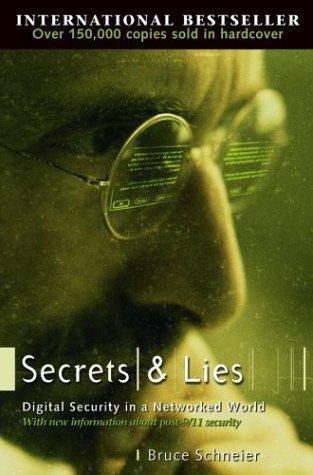
Secrets and Lies: Digital Security in a Networked World
by
Bruce Schneier
Published 1 Jan 2000
This is because the society wanted to send a clear message that stealing horses was not to be tolerated. Various European governments sent a similar message in the 1970s when they started gunning terrorists down in the streets. The message was a very clear: “We’re not playing games anymore.” Some of the overreactions we’re seeing in hacker prosecution reflect this same sort of moral panic. This is also not meant as a call to extinguish legitimate researchers or hackers, full disclosure mailing lists, or the right to evaluate security products. In the United States, laws have been passed that prohibit reverse engineering of copy protection systems. The entertainment industry lobbied hard for these draconian laws, using them in an attempt to hide their incompetent security countermeasures.

How Everything Became War and the Military Became Everything: Tales From the Pentagon
by
Rosa Brooks
Published 8 Aug 2016
See Paige Scheckla, “Personal Security for Citizens and Non-Citizens in Post-9/11 US Immigration Policy,” University of Chicago International Human Rights Clinic, November 19, 2013, https://ihrclinic.uchicago.edu/blog/personal-security-citizens-and-non-citizens-post-911-us-immigration-policy-paige-scheckla-1l. See also Samantha Hauptman, The Criminalization of Immigration: The Post 9/11 Moral Panic, (El Paso, TX: LFB Scholarly Pub Llc, 2013). 67. Deepa Iyer and Jayesh M. Rathod, “9/11 and the Transformation of U.S. Immigration Law and Policy,” Human Rights Magazine 38 (Winter 2011), www.americanbar.org/publications/human_rights_magazine_home/human_rights_vol38_2011/human_rights_winter2011/9-11_transformation_of_us_immigration_law_policy.html. 68.
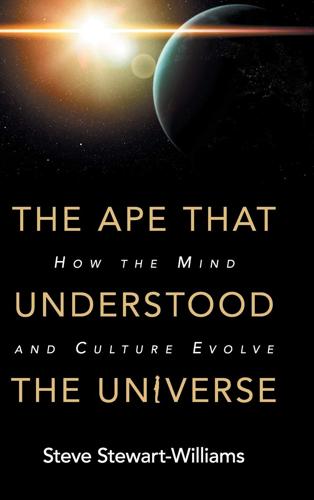
The Ape That Understood the Universe: How the Mind and Culture Evolve
by
Steve Stewart-Williams
Published 12 Sep 2018
Will we engineer ourselves into a species of Einsteins, or will our intellectual faculties deteriorate, like our ability to make vitamin A? Will we cast off our superstitionsby exposing them to rational scrutiny, or will our superstitions evolve into more virulent forms, like bacteria in response to antibiotics? Will we tame our inner demons – our tendency to scapegoat, our proneness to moral panics – or will we just keep on swapping one fashionable prejudice and mass delusion for another until the very end of time? The future is notoriously difficult to predict, even for hyperintelligent alien scientists. As such, a wise alien would refrain from taking too confident a guess. One thing is certain, however.

Your Computer Is on Fire
by
Thomas S. Mullaney
,
Benjamin Peters
,
Mar Hicks
and
Kavita Philip
Published 9 Mar 2021
Or, one can play countless games online while playing out no more than the lives of third-string monopolists, second-world designers, and first-person soldiers. Meanwhile, in real life, the world never fails to surprise: even Thomas Hobbes, infamous for declaring life “solitary, poor, nasty, brutish, and short,” died in bed, surrounded by loved ones, at the age of ninety-one. The value of tech criticism, like all criticism, must not be mistaken for moral panic talk, whose audience often mistakes the carrier of the unfortunate news for the cause of the crisis. Uncertain times call for uncertain media. In the ongoing search for better heresies and causal explanations, let us pause, with historian of technology Ksenia Tatarchenko, before ceding tomorrow’s future to yesterday’s science fiction.6 May tech observers stop off-loading and outsourcing the imagination of better worlds without first attending to the earth.

At the Existentialist Café: Freedom, Being, and Apricot Cocktails With Jean-Paul Sartre, Simone De Beauvoir, Albert Camus, Martin Heidegger, Maurice Merleau-Ponty and Others
by
Sarah Bakewell
Published 1 Mar 2016
For her, he was a mindless bureaucrat so in thrall to the Heideggerian ‘they’ that he had lost all human individuality and responsibility, a phenomenon which she characterised as ‘the banality of evil’. Her interpretation was controversial, as were other aspects of the book, but it fascinated an audience that was now in a moral panic, not about extreme beliefs, but about the very opposite: faceless, mindless conformism. Partly in response to Arendt’s work, researchers such as Stanley Milgram and Phillip Zimbardo perfected experiments exploring just how far people would go in obeying orders. The results were alarming: almost everyone, it seemed, was willing to inflict torture if a sufficiently authoritative figure commanded it.
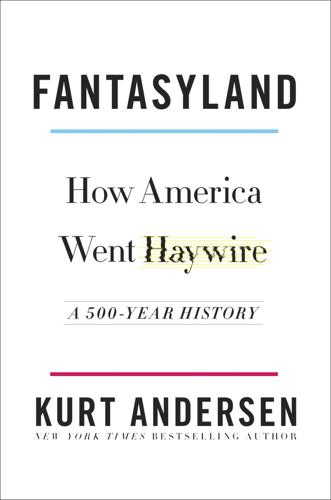
Fantasyland: How America Went Haywire: A 500-Year History
by
Kurt Andersen
Published 4 Sep 2017
“Knowing what I know now…knowing how to do exams” properly, “I think that if I had that case now, I’d probably…decline to testify.” The Satanic Panic never really took off outside the United States. A historian in Norway found that until Rivera’s 1988 NBC special was covered in the Norwegian press, there had been no public references to satanic ritual abuse. According to The Day Care Ritual Abuse Moral Panic, published in 2004 by a U.S. social psychologist specializing in trauma and mental illness, the few international prosecutions in the 1980s and ’90s were generally “closed in a matter of months,” which “made it difficult for the kind of improvised news that romped around in the shadows of the [U.S.] daycare cases…from getting a running start.”

To Save Everything, Click Here: The Folly of Technological Solutionism
by
Evgeny Morozov
Published 15 Nov 2013
Its model of the world is that encapsulated in the motto of Chicago’s 1933 World’s Fair: “Science Finds–Industry Applies–Man Conforms.” As a result, too many people have been tricked into thinking that we can only change our norms, for there’s literally nothing we can do about the autonomous march of technology. Concerns and anxieties about various technologies are recast as reactive fears and phobias, as irrelevant moral panics that will quickly fade away once users develop the appropriate coping strategies and upgrade their norms. Such conflation of anxiety and technophobia has a long history. Historian Berhard Rieger has studied ambivalent reactions to new technologies in early twentieth-century Britain and found that such ambivalence was rarely an obstacle to innovation.

Likewar: The Weaponization of Social Media
by
Peter Warren Singer
and
Emerson T. Brooking
Published 15 Mar 2018
As his work came under scrutiny and his claims that the internet was almost completely porn were debunked, Rimm vanished and eventually changed his name. Nonetheless, the damage had been done. While 1995 was a banner year for the internet, as the U.S. government officially relinquished control and millions of new users jumped online, in Congress this excitement gave way to moral panic. Thanks to one viral story and an audience of mostly tech-illiterate legislators, the internet now meant only one thing: pornography. “The information superhighway should not become a red-light district!” bellowed Senator James Exon, an elderly Democrat from Nebraska. He introduced the Communications Decency Act (CDA), which made it a crime to “send to or display in a manner available to” those under 18 years of age any communication that depicted “sexual or excretory activities . . . regardless of whether the user of such service placed the call or initiated the communication.”
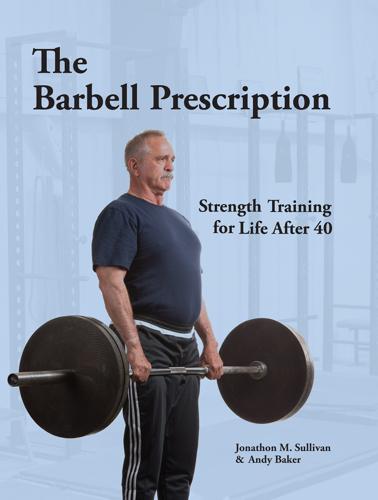
The Barbell Prescription: Strength Training for Life After 40
by
Jonathon Sullivan
and
Andy Baker
Published 2 Dec 2016
Campos ER, Luecke TJ, Wendeln HK, et al. Muscular adaptations in response to three different resistance-training regimens: specificity of repetition maximum training zones. Eur J Appl Physiol 2002;88:50-60. Campos P, Suguy A, Ernsberger P, et al. The epidemiology of overweight and obesity: public health crisis or moral panic? Int J Epidem 2006;35(1):55-60. Campos P. The Obesity Myth: Why America’s Obsession with Fat is Hazardous to Your Health. 2004, Gotham-Penguin. Carek PJ, Laibstain SE, Carek SM, et al. Exercise for the treatment of depression and anxiety. Int J Psych Med 2011; 41(1):15-28. Carpinelli RN, Otto RN.
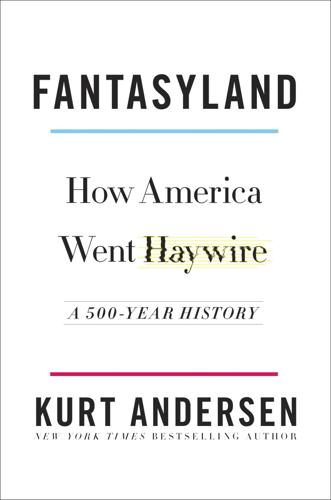
Fantasyland
by
Kurt Andersen
Published 5 Sep 2017
“Knowing what I know now…knowing how to do exams” properly, “I think that if I had that case now, I’d probably…decline to testify.” The Satanic Panic never really took off outside the United States. A historian in Norway found that until Rivera’s 1988 NBC special was covered in the Norwegian press, there had been no public references to satanic ritual abuse. According to The Day Care Ritual Abuse Moral Panic, published in 2004 by a U.S. social psychologist specializing in trauma and mental illness, the few international prosecutions in the 1980s and ’90s were generally “closed in a matter of months,” which “made it difficult for the kind of improvised news that romped around in the shadows of the [U.S.] daycare cases…from getting a running start.”
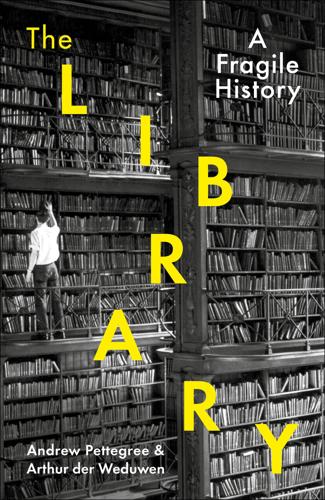
The Library: A Fragile History
by
Arthur Der Weduwen
and
Andrew Pettegree
Published 14 Oct 2021
In 1773 it was suggested that ‘An Act of Parliament is soon to be passed, by which Circulating Libraries are to be suppressed, and by which the owners of them are to be declared, like … players, rogues and vagabonds, and debauchers of morals, and the pest of society.’26 Circulating libraries were routinely compared to brothels and gin shops. This moral panic was entirely due to their close association, in the public mind, with the circulation of fiction. In 1789 the prolific author Maria Edgeworth wrote that ‘though I am as fond of novels as you can be, I am afraid [that] they act on the constitution of the mind as drams do on that of the body’.27 Yet if we scrutinise the catalogues published by circulating libraries, fiction accounts for a surprisingly small proportion of the stock.

Deep Nutrition: Why Your Genes Need Traditional Food
by
Catherine Shanahan M. D.
Published 2 Jan 2017
The fetal origins of memory: the role of dietary choline in optimal brain development, Zeises SH, J Pediatr, November 2006, 149(5 suppl):S131-6, review. 159. Choline: are our university students eating enough? Gossell-Williams M, West Indian Med J, June 2006, 55(3):197-9. 160. Fetal alcohol syndrome: historical perspectives, Neuroscience and Biobehavioral Reviews, vol. 31, issue 2, 2007, pp. 168–171; and Fetal alcohol syndrome: the origins of a moral panic alcohol and alcoholism, vol. 35, issue 3, May 1, 2000. 161. Prevention of neural tube defects: results of the Medical Research Council Vitamin Study, MRC Vitamin Study Research Group, Lancet, July 20, 1991, 338(8760):131-7. 162. Views: ergot and the salem witchcraft affair: an outbreak of a type of food poisoning known as convulsive ergotism may have led to the 1692 accusations of witchcraft, Mary K.
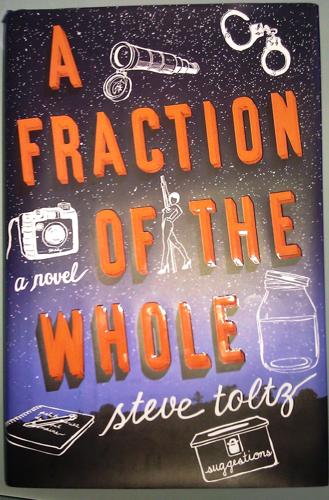
A Fraction of the Whole
by
Steve Toltz
Published 12 Feb 2008
This time he meant it, and from our wobbly kitchen table, while flicking cigarette ash into a pile of unwashed dishes, he taught me literature, philosophy, geography, history, and some nameless subject that involved going through the daily newspapers, barking at me about how the media do something he called "whipping up moral panics" and demanding that I tell him why people allowed themselves to be whipped into panicking, morally. Other times he gave classes from his bedroom, among hundreds of secondhand books, pictures of grave-looking dead poets, empty long necks of beer, newspaper clippings, old maps, black stiff banana peels, boxes of unsmoked cigars, and ashtrays full of smoked ones.

The Rise of the Network Society
by
Manuel Castells
Published 31 Aug 1996
Russell Neuman concludes that “the accumulated findings from five decades of systematic social science research reveal that mass media audience, youthful or otherwise, is not helpless, and the media are not all-powerful. The evolving theory of modest and conditional media effects helps to put in perspective the historical cycle of moral panic over new media.”33 Furthermore, the barrage of advertising messages received through the media seems to have limited effect. According to Draper,34 although in the US the average person is exposed to 1,600 advertising messages per day, people respond (and not necessarily positively) to only about 12 of them.
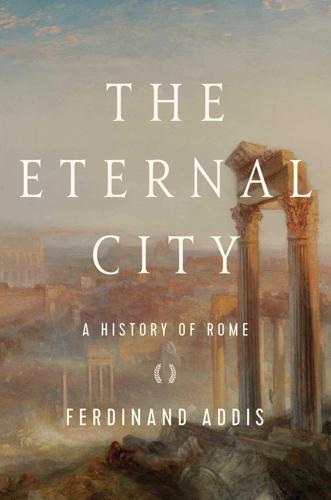
The Eternal City: A History of Rome
by
Ferdinand Addis
Published 6 Nov 2018
The emperor had spent years training himself to play the cithara, a sort of seven-stringed lyre, with which he accompanied himself singing lyrics of his own invention. Professional citharodes were celebrities in the ancient world and might tour the Mediterranean to enormous acclaim – but they were always understood, somehow, to be essentially un-Roman. The mere introduction, by Nero, of an arts festival in the Greek style had already provoked a moral panic about alien influences ‘turning our young men into shirkers, gymnasts and perverts’. It was unthinkable for a free Roman citizen – let alone a nobleman – to display himself in front of a theatre crowd. But Nero was emperor. He wanted to perform, and he had the ultimate captive audience. There were stories of women giving birth in the theatre; of men climbing the walls to escape Nero’s songs and his effortful, husky voice.‡ And yet each piece was greeted with rapturous applause, supplied by a claque of five thousand specialist clappers.
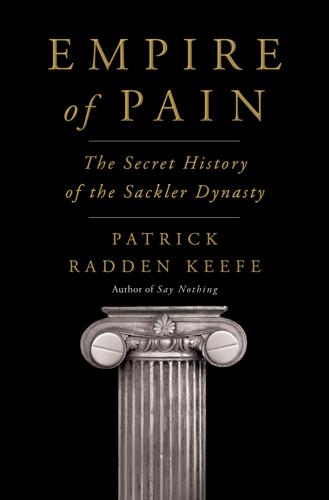
Empire of Pain: The Secret History of the Sackler Dynasty
by
Patrick Radden Keefe
Published 12 Apr 2021
By the time Roche allowed its tranquilizers to be controlled, Valium had become part of the lives of some twenty million Americans, the most widely consumed—and most widely abused—prescription drug in the world. It had taken time for the country to wake up to the negative impact of Valium, in part because there was some novelty, for average consumers, in the idea of a drug that could be dangerous even though it was prescribed by a doctor. Moral panics over drugs in America had tended to focus on street drugs and to play on fears about minority groups, immigrants, and illicit influences; the idea that you could get hooked on a pill that was prescribed to you by a physician in a white coat with a stethoscope around his neck and a diploma on the wall was somewhat new.

Homeland: The War on Terror in American Life
by
Richard Beck
Published 2 Sep 2024
(Salam), 247 whistleblowing, 224, 382, 399, 427 White, Don, 73–75 white supremacy, 110, 130, 446 Whittington, Harry, 420–21 Wieseltier, Leon, 363 Willeford, Pam, 420 Wilson, Darren, 438, 440, 442–43 wiretaps, 388, 394–95, 398 women, 13–16, 27–28, 31, 37, 101–2, 218, 431–32 World Bank, 275, 311 World Trade Center, 6–7, 21, 55, 210, 263 and Cordoba House, 227–29 as public space, 117, 120 rebuilt, 111–12, 115–17 World War I, 56, 482 World War II, 64, 67, 81, 99–100, 275, 482 Wounded Knee, 490 Wuterich, Frank, 421 Y Yahoo, 390, 396 Yemen, xxviii, 299, 315, 425, 486, 374–75 drone strikes in, xxii, 77, 221, 243, 426, 475 Yglesias, Matthew, 364, 366, 369, 452–53 Yoo, John, 393, 395, 429 and Torture Memos, 181, 183, 186, 220, 423, 428 YouTube, 328, 396 Z Zakaria, Fareed, 371 Zimmerman, George, 431, 438 Zuckerberg, Mark, 411 A B C D E F G H I J K L M N O P Q R S T U V W X Y Z About the Author Richard Beck is a writer at n+1 and the author of We Believe the Children: A Moral Panic in the 1980s. He lives in New York City. What’s next on your reading list? Discover your next great read! Get personalized book picks and up-to-date news about this author. Sign up now. _148085660_
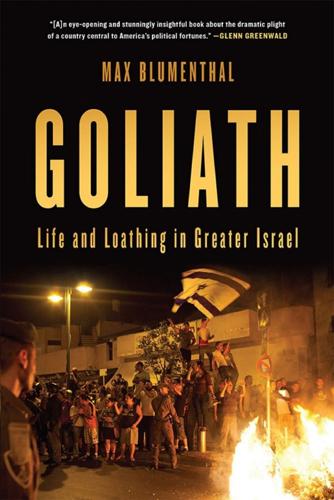
Goliath: Life and Loathing in Greater Israel
by
Max Blumenthal
Published 27 Nov 2012
But among the lower rungs of Jewish society, especially those deliberately planted in development cities in the “periphery,” Arabs and, in more recent years, migrants from Africa were a constant presence in daily life. Having seized the reins of the state from the old left-wing Zionist establishment, the religious right plunged into the mixed cities to stir moral panic, and to tap into their resentment against the Ashkenazi elite, hoping to extract publicity and droves of new followers from the crisis their presence inevitably stirred. Once again, the Jewish woman emerged as a symbol of purity in peril who demanded ironclad protection and, if necessary, commando-style rescue operations.
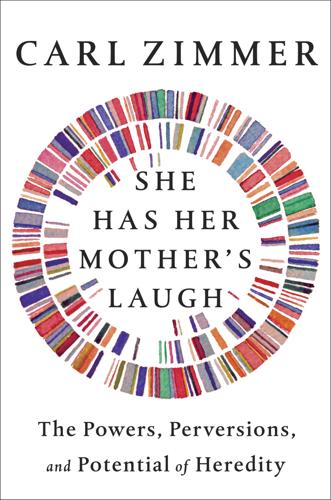
She Has Her Mother's Laugh
by
Carl Zimmer
Published 29 May 2018
A Tribute for the Negro: Being a Vindication of the Moral, Intellectual, and Religious Capabilities of the Coloured Portion of Mankind; with Particular Reference to the African Race. Manchester, UK: W. Irwin. Armstrong, Elizabeth M., and Ernest L. Abel. 2000. “Fetal Alcohol Syndrome: The Origins of a Moral Panic.” Alcohol and Alcoholism 35:276–82. Asbury, Kathryn. 2015. “Can Genetics Research Benefit Educational Interventions for All?” Hastings Center Report 45, Suppl 1, S39–S42. ———, and Robert Plomin. 2013. G Is for Genes: The Impact of Genetics on Education and Achievement. New York: Wiley-Blackwell.
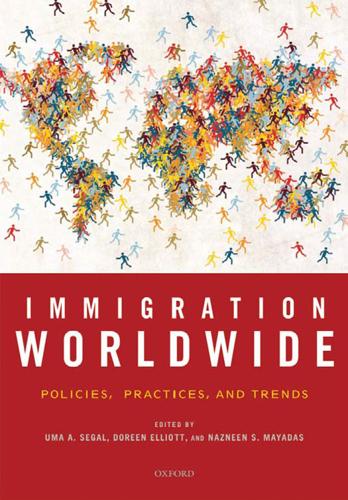
Immigration worldwide: policies, practices, and trends
by
Uma Anand Segal
,
Doreen Elliott
and
Nazneen S. Mayadas
Published 19 Jan 2010
Dunn et al. (2007: 564) believe that ‘‘contemporary anti-Muslim sentiment in Australia is reproduced through a racialization that includes well rehearsed stereotypes of Islam, perceptions of threat and inferiority, as well as fantasies that . . . Australian Muslims . . . do not belong.’’ They identify undercurrents of Islamophobia and ‘‘national cultural selectivity in the politics of responding to asylum seekers’’ in negative media reporting, which they see as strongly linked to an antipathetic government. This has resulted in moral panic, misinformed opposition to mosque development, ever more restrictive asylum seeker policies, arson attacks, and racist violence. It has also led to discrimination against people who are not Muslim, such as Christian Arabs, given people’s ignorance of the diversity of the Islamic population. Mason (2006) believes that hate campaigns have transferred anti-Asian prejudice to anti- 163 Muslim sentiments, while Manne (2002) perceives Islamophobia to be the most serious threat to multiculturalism and religious and ethnic tolerance that Australia has witnessed for very many years.

A Classless Society: Britain in the 1990s
by
Alwyn W. Turner
Published 4 Sep 2013
It was also one of Britain’s few really big television exports of the time; by 2007 ITV were to claim that a billion people worldwide (around a sixth of the global population) had seen at least one episode. The idea that such a mainstream show felt the need to address raves was an indication of how far up the public agenda they had moved, and how close the country was to one of its periodic moral panics. That scare duly arrived in 1995 with the death of an eighteen-year-old named Leah Betts from a combination of taking an ecstasy tablet and drinking vast quantities of water. The story became big largely because she was clearly not part of an underclass that could be easily dismissed: her stepmother was a nurse and her father a former police officer, who became a key campaigner for stronger action against drug use.
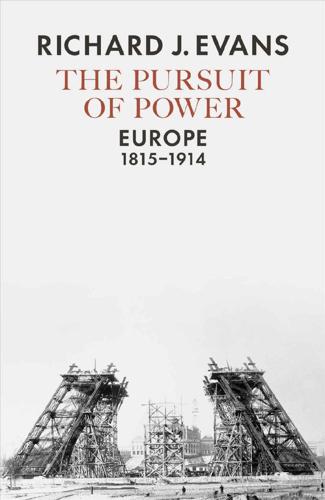
The Pursuit of Power: Europe, 1815-1914
by
Richard J. Evans
Published 31 Aug 2016
Lesbian sexual relationships could be accommodated under the concept of ‘romantic friendships’; women who were explicitly conscious of their homosexuality – such as the wealthy Yorkshirewoman Anne Lister (1791–1840), whose mannish appearance, black clothing and openly cultivated sexual relationships with other women aroused considerable disapproval in local society, where she was known as ‘Gentleman Jack’ – were rarities, but in any case they did not cause major social anxiety. It was male lust that was the object of the reformers. An even worse manifestation of male lust than homosexuality in the eyes of some was masturbation, against which there was a veritable moral panic at this time. As the social purity campaigner the Reverend James Wilson (1836–1931) declared: ‘Rome fell; other nations have fallen; and if England falls it will be this sin, and her unbelief in God, that will have been her ruin.’ By this time a counter-movement was in progress, with erotic publications like the Yellow Book, with woodcuts by Aubrey Beardsley (1872–98) aided by the subversive wit of Oscar Wilde, challenging key Victorian values.
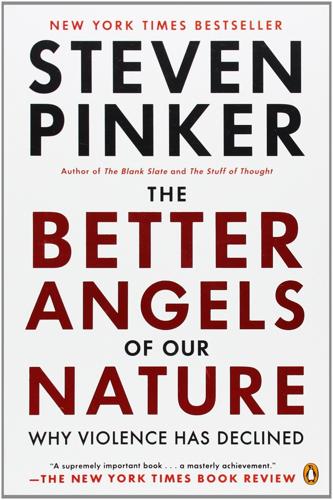
The Better Angels of Our Nature: Why Violence Has Declined
by
Steven Pinker
Published 24 Sep 2012
And contrary to yet another scare that has recently been ginned up by the media, based on widely circulated YouTube videos of female teenagers pummeling one another, the nation’s girls have not gone wild. The rates of murder and robbery by girls are at their lowest level in forty years, and rates of weapon possession, fights, assaults, and violent injuries by and toward girls have been declining for a decade.198 With the popularity of YouTube, we can expect more of these video-driven moral panics (sadist grannies? bloodthirsty toddlers? killer gerbils?) in the years to come. It is premature to say that the kids are all right, but they are certainly far better off than they used to be. Indeed, in some ways the effort to protect children against violence has begun to overshoot its target and is veering into the realm of sacrament and taboo.